
- Jun 29, 2020

Travel Photography Gear: Nikon Z50 Review

It's taken me years (no kidding!) to find a good replacement for my trusty old Nikon D3. I ideally wanted something smaller and lighter, but with equally convincing image quality, plus an option to shoot great videos. Now that my travel photography gear collection has finally been expanded, read this Nikon Z50 review to find out why I believe it's the best camera for travel photography. Based on a few months of experience with the camera, testing different modes and pressing all the buttons, hopefully, I will be able to answer any questions you may have - sample images also included of course.
Disclaimer: As an Amazon affiliate, I earn from qualifying purchases
First of all , what sort of camera is the Nikon Z50?
The Z50 is a mirrorless camera, meaning it's compact in size and more lightweight than most DSLR brothers. For a travel camera particularly, the small size and weight is definitely something you will appreciate, having to carry it with you on tours and hikes. However much I love my Nikon D3 DSLR, after a while, it feels like I'm carrying a brick around...
At the same time, like the DSLR cameras, a mirrorless camera still comes with interchangeable lenses, so, if the kit lens is not enough, you can expand your collection and pick different ones depending on the nature of the shoot.
Nikon markets the Z50 as a 'camera for the rest of us'. I'm not sure what to make of the slogan really as it sounds kind of funny, but I guess the way you could interpret it is that it's suitable for both those with little photographic knowledge and those who are more advanced, just maybe not quite techy enough for the professional photographers. So, it's a great choice both if you are looking to upgrade from a phone or a compact camera or looking to downsize from a bulky DSLR. Depending on your skill set and desired level of involvement, you can use the fully automatic mode and let the camera make the decisions about the best settings, choose from a range of preset shooting modes (like sports, landscape, sunset etc.) or play around with all the settings in manual mode. I've done all three and got great results. The 'scene' modes are super handy when you don't want to dive into the individual settings.
The key camera stats:
(not going to get too technical here, just listing what I think is important from a user perspective and why it matters)
20.9MP APC-S sensor (not the biggest megapixel number I've seen, but unless you like to crop your photos a lot, I would actually prefer 20MP to 50MP, because image size! The more megapixels you have, the more space the photos will take up, both on the memory card and, afterwards, on your computer. With the amount of photos I transfer to my laptop after each trip, available disk space matters. For comparison, my Nikon D3 is 12 megapixel and I never felt that I needed more. It's more than enough for blog posts, social media as well as to print A4-size photo books.)
Body weight of 395 grams (nothing compared to 1.2 kilos for the Nikon D3! When I go hiking and carry it on my shoulder, I don't feel like I am lugging around a brick. I can hold it up in one hand with the arm stretched out to take a selfie without a problem.)
4K video at 30 fps and 1080 p HD video at 120 fps (personally, I am not bothered about 4K, HD is good enough for me, but, you know, it's there if you want to have the latest and greatest trends.)
Shoots photos at up to 11 fps (fast enough to get that perfect yawning cat shot - tested by me!)
Electronic viewfinder (while I don't always use it, it's an important option to have in case the conditions don't allow to effectively use the screen. Some manufacturers decided to lose this feature, which is a shame - Canon EOS M6 Mark II, a similar mirrorless camera, for example, only offers the viewfinder as an optional extra.)
3.2 inch rear screen is a touchscreen with live view and 'touch to focus' and 'touch to take a photo' features (I love being able to take a photo by touching - sometimes you just need that speedy reaction as opposed to starting to press buttons to move the focus point around. You literally just click on what you want sharp in the image and the camera focuses there and takes a photo.)
Rear screen can be tilted upwards and flipped to face the front (both of those I've been using a lot. The tilting comes super handy for shooting from awkward angles, for example, from the ground. If I didn't have the tilt option, I would have to lie down to be able to see what the camera captures - this way, I just crouch next to it and can see everything. The flipping makes selfies super easy.)
Face tracking/eye recognition (good for portraits, as it removes the need to move around the focus point manually.)
No in-body image stabilisation (but both kit lenses have image stabilisation.)
Wireless photo transfer to smartphone through the Nikon SnapBridge app (I find it a bit fiddly, but the cool thing is that you can choose whether you want to transfer the full-sized photo or a smaller version, so if storage space is an issue on your phone and you only want to post to Instagram, it's a nifty option to have)
Storage card type: SD/SDHC/SDXC; One card slot only. (Quite a common memory card format with lots of options available for all budgets. My Nikon D3 has two card slots, so it's possible to put .jpeg and .raw photos on different cards, but, to be honest, I haven't felt any inconvenience from only being able to use one memory card.)
One more thing I wanted to point out - compared to its direct competitors (Sony A6400, Fujifilm X-T30 and Canon EOS M6 Mark II), Nikon Z50 has the most protruding hand grip, which does wonders for comfort of holding. One of the issues of small mirrorless cameras for me is that they have shrunk down so much there's nothing to hold on to. That was a real downer when I was trying cameras out in the shops. I am happy to report that's not the case with the Z50 at all. It sits firmly in my hand and I don't worry about dropping it, so the ergonomics is definitely winning here.

So why did I buy the Nikon Z50 after years of indecision?
When looking for my next travel camera, I kept an open mind and researched and tried cameras from different brands and types (compact, bridge, mirrorless, DSLR). The competitors just weren't good enough in handling or image quality for me to forget about my Nikon lens collection, so in the end I resigned myself to having to carry a lot of weight around and was looking to buy another top of the range Nikon DSLR. But then I came across the Z50 and realised that in side-by-side image comparisons, in my opinion, it was coming out better than the flagship D4 and D850.
Ultimately, it was the image quality that did it for me, and, having now spent plenty of time taking photos with the Z50, I can confirm it hasn't disappointed. The images come out sharp and gorgeous.
Speaking of image quality, naturally, no camera review is complete without sample images and videos, so check them out. I used the 16-50mm kit lens throughout, so you can see what you get with the camera out of the box, without the need to invest in fancy professional lenses. Click on the photo to see a larger size.
Nikon Z50 sample images:
And here's a video filmed completely with the Nikon Z50:
What are the different kits and which one should I choose?
Naturally, you can get just the body of the camera, but there are several interesting bundles that you can buy that I recommend choosing from:
Nikon Z50 body + FTZ adapter
What on earth is an FTZ adapter you may ask and why would I need one? Well, the diameter of the lens mount on the Nikon Z-series cameras is different compared to the other Nikons (they call the other mount the F-mount). There aren't that many lenses on the market that were made for the Z-mount. The adapter allows you to be able to use the lenses made for the other Nikons and, as long as the lens has an integrated autofocus drive, the autofocus functionality will be fully supported.
If there is no drive in the lens, you will be able to focus manually with a focus box in the viewfinder turning green when the object behind it is sharp. It's not what you would want to use for photographing moving subjects, but is surprisingly easy to use for shooting landscapes and other stills.
This bundle is for you if you already have a Nikon DSLR with all the lenses you could need and that you definitely want to keep using. However, before you settle on this one, I would encourage you to check out bundle number 3 (body + FTZ adapter + 16-50mm lens) because the lens is pretty awesome and you will be saving weight and space not having to wear the adapter with it.
Nikon Z50 body + 16-50mm lens
In this kit, you get a great lens that, in my opinion, will cover most situations a travel photographer comes across. Sure, you wouldn't use it to take photos of birds far away in the sky, nor is it the right thing for something like whale and dolphin watching tours, where the subjects tend to be quite far away from the photographer, but mostly my travel shots consist of landscapes, architecture and some selfies, which this lens is ideal for.
All the reviews I read about this lens were glowing and, having tried it out myself now, I can confirm that they were not wrong - I love the quality of the photos! I've got other Nikon lenses, but to be honest, after playing around with a few for test purposes, I just left the kit lens on and that's what I use all the time.
The 16-50mm lens is tiny, which is ideal for something that you have to carry for a while. It also has built-in image stabilisation, to compensate for the lack of it in the camera body.
This bundle is for you if all you're after is a small-sized camera that takes great landscape to portrait photos and you're not really bothered about adding more lenses to your collection
Nikon Z50 body + FTZ adapter + 16-50mm lens
I've already described the adapter and the lens above, so I'll be short and sweet. This bundle is for you if a) you want to have a native kit lens, but also have a few F-mount lenses that you don't want to part with or b) you want to purchase several lenses and don't want to wait for Nikon to make more Z-mount ones (or you find the Z-mount lenses rather expensive, which they totally are)
Nikon Z50 body + 16-50mm lens + 50-250mm lens
If you like having a big zoom range, then this bundle might just be the thing for you. You get two kit lenses native to the camera, which together cover a very substantial zoom range. Both lenses also come with built-in image stabilisation. I haven't tested the 50-250mm lens myself, as I've decided that between the 16-50 lens and the other Nikon lenses I already own, I've got everything I need.
Sounds interesting? Then use the links below to see what sort of prices you would be looking at.
Check out available bundles and prices for Nikon Z50 on Amazon UK
Check out available bundles and prices for Nikon Z50 on Amazon US
So I've been waxing lyrical about the Nikon Z50 for what feels like an eternity, but do I have any gripes ? As a matter of fact I do have a few, no camera is perfect!
You have to flip a switch to change between photo and video mode as well as use different buttons to start a recording vs take a photo. My brain struggles to remember to do both. A bit disappointing thinking you're catching a cool moment on video to discover the switch was actually in photo mode...
A small gripe is that while the 'tap the screen to focus and take a photo' feature is great, I often end up taking random photos when trying to flip the screen out and back. You can disable that functionality if you find it annoying though.
If you want to use the selfie mode (i.e. flip the screen to face the same direction as the lens, so you can see yourself), you can't do that and use a tripod in the conventional way, because the screen flips down to where the tripod is and will be obstructed. Fortunately, there is an inexpensive solution for this problem - Smallrig made a special mounting plate that shifts the location of the tripod to the side.
Shop Smallrig mounting plate on Amazon US
Shop Smallrig mounting plate on Amazon UK
And that is all. I am in love with my Nikon Z50 and if this post has convinced you to get one too, I hope you love it just as much as I do!
#travelessentials #photography #shopping
- Product Review
Recent Posts
8 Must-Have Train Travel Accessories
Best Travel Games for 2 Adults
Best Travel Kettle - Researched, Tested, and Reviewed
New: 7 Best cameras for travel
Updated March 2024
Travel can expose you to once-in-a-lifetime sights and experiences, and a good camera can be the perfect way to preserve those memories. We've looked at a range of models that offer great image quality, good autofocus and excellent video, so that you can capture whatever you encounter on your travels. We've also tried to select relatively small cameras so they don't interfere with your trip.
Our selections include relatively compact cameras with fixed lenses, perfect for just documenting what you saw on your trip; they also include Micro Four Thirds and APS-C models that allow smaller camera/lens combinations, if you're looking to travel light. Full-frame cameras open up the potential for even better image quality but the lenses can get pretty big, so it's worth checking how big the total package is, before committing to a large-sensor model.
Our recommendations
Best pocketable travel camera: ricoh gr iii, the classic choice: fujifilm x100vi, truly compact mirrorless: om system om-5, all-round compact capability: sony a6700, the great travel kit: fujifilm x-s20 with 18-55mm f2.8-4.0 ois, the stylish travel companion: nikon zf, portable full-frame: sony a7cr.
24MP APS-C sensor | 28mm equiv. F2.8 lens | Wi-Fi + Bluetooth
What we like:
- Excellent image quality
- Good controls and ergonomics
- Truly pocketable
What we don't:
- Short battery life
- No built-in flash
- Sluggish AF in low light
The Ricoh GR III is the latest in a series of classic compact cameras with a large APS-C sensor and a 28mm equivalent lens. It's not the most flexible camera but it's one of the most pocketable and has built up a dedicated following of photographers who find it a joy to shoot with.
Our only concern, in terms of using the GR III for travel are that some users have found dust can get into the lens. So it's worth trying to find some sort of protective bag to keep it in.
There's also the GR IIIx , a variant with a longer, 40mm equivalent lens on it. This may be a little tight for documenting your travels, but it's historically a popular focal length.
Read our Ricoh GR III review
See the Ricoh GR III studio scene

40MP BSI CMOS APS-C X-Trans sensor | 35mm equiv F2 lens | Hybrid viewfinder
- Excellent build quality
- Subject-detection autofocus
- Now with in-body image stabilization
- Lens not especially fast to focus
- Hard to find in stock
Like the Fujifilm X100V before it, the Fujifilm X100VI is a classically styled fixed lens camera with a 35mm equivalent F2 lens. But being in active production following its 2024 launch, the X100VI is somewhat easier to buy than its constantly out-of-stock forebear.
Updated with in-body image stabilization rated at up to 6EV of correction and a 40MP BSI CMOS APS-C X-Trans sensor, the X100VI is a significant upgrade over its predecessor despite looking virtually identical. And those improvements in part explain the X100VI's $200 increase in list price to $1,600.
Like its older brother, the X100VI isn't the smallest or most inconspicuous camera, but its fixed focal length means you develop an 'eye' for the photos it'll take, essentially making it a better quality, more engaging alternative to snapping away with your phone.
The addition of subject-detection autofocus has given the X100VI the ability to recognize animals, birds, automobiles, motorcycles and bikes, airplanes, and trains though human (face/eye) detection is a separate mode. However, the lens the X100VI shares with the X100V is not the fastest to autofocus, prioritizing sharpness over speed.
The X100VI brings a level of polish you would expect from a sixth iteration of a camera. Fujifilm has done a great job keeping the X100-series up to date without messing with the formula that's made it so popular. No surprise, this is the best X100 yet.
Unfortunately, despite ramped-up production, demand for the X100VI seems to have outstripped supply with the camera already on backorder at virtually all dealers. With any luck, however, its release will depress the over-inflated sale price of previous generation X100V cameras, which are still quite capable if you can find them for prices befitting used gear.
Read our Fujifilm X100VI review

20MP Four Thirds CMOS sensor | 4K/30p video | In-body stabilization rated to 6.5EV (7.5 with some lenses)
- Attractive JPEG output
- Selection of clever photo features
- Excellent image stabilization
- IP53 rating supports claims of weather sealing
- AF tracking is disappointing
- Image quality is behind larger sensor cameras
The OM System OM-5 is a compact interchangeable lens camera with a 20MP Four Thirds sensor in a compact body with plenty of external control.
That relatively small sensor means it can remain fairly small, even with a lens attached, and the Micro Four Thirds lens system provides extensive options in that regard, from compact zooms to small prime lenses.
Read our OM System OM-5 review
See the OM System OM-5 studio scene

26MP BSI CMOS sensor | 4K/60p video capture | Fully articulating screen
- Front and rear command dials
- Excellent AF in stills and video
- 4K/120p capture (with crop)
- No AF joystick
- JPEG sharpening can be aggressive
The Sony a6700 is built around a 26MP APS-C-sized sensor. Its excellent autofocus performance means it excels at both stills and video capture. There's a good choice of relatively compact lenses available, too. We'd suggest avoiding the really small 16-50mm F3.5-5.6 though: it's not the lens to get the most out of this camera.
Fast, dependable autofocus with a selection of subject recognition modes means the a6700 will help maximize your chances of capturing the unexpected moments on a trip.
Read our full Sony a6700 review
See the Sony a6700 studio scene

26MP X-Trans APS-C sensor | Up to 6.2K/30P 10-bit video | In-body image stablization
- Excellent still and video quality
- Long battery life
- Comfortable, simple ergonomics
- AF tracking still lags behind peers
- Small electronic viewfinder
- Micro HDMI instead of full-size
Fujifilm's X-S20 is also worth considering. Like the a6700, it's built around a 26MP BSI CMOS sensor and is strong at both stills and video. Its autofocus isn't as simple and powerful as the Sony's, but its JPEG color modes produce really attractive results, and there's a wide choice of lenses including compact prime and the well-priced, supremely useful 18-55mm F2.8-4.0 OIS, which is a great travel option.
Read our Fujifilm X-S20 initial review
See the Fujifilm X-S20 studio scene

24MP full-frame BSI CMOS sensor | Full-width 4K/30 video, cropped 4K/60 | Stabilization rated to 8EV
- Distinctive design with direct controls
- Effective subject recognition
- Strong stills and video features
- Weight and minimal grip can become uncomfortable
- Slow MicroSD second slot
- Few custom buttons
The Nikon Zf is a classically styled full-frame camera built around a 24MP full-frame sensor that's used by many of its peers. The angular 80s-style body isn't the most comfortable to hold in your hand for extended periods, but the lack of stick-out grip makes it smaller than many of its rivals, making it a tempting travel companion.
At least in its all-black form, there's a chance of it being mistaken for a film camera, which may help avoid the wrong kind of attention, when you're out and about in an unfamiliar setting.
Read our initial review of the Nikon Zf

61MP BSI CMOS sensor | 4K/60p video with 10-bit color | Dedicated ‘AI’ processor for AF system
- Big camera features in a small body
- Outstanding AF performance
- Auto Framing video mode
- Small, low-res viewfinder
- No joystick control
- No fully mechanical shutter
The Sony a7CR is a relatively compact full-frame camera with an image-stabilized 61MP CMOS sensor. You sacrifice the convenience of an AF joystick and get a pretty small and basic viewfinder to keep the camera's size down, but there's little else that delivers this much image quality in such a compact package.
You'll need to pick your lenses carefully to keep the camera portable but the a7CR's autofocus means it can respond rapidly to just about anything you encounter on your travels.
Read our Sony a7CR initial review

Why you should trust us
This buying guide is based on cameras used and tested by DPReview's editorial team. We don't select a camera until we've used it enough to be confident in recommending it, usually after our extensive review process. The selections are purely a reflection of which cameras we believe to be best: there are no financial incentives for us to select one model or brand over another.
Gear in this story

- Discuss in the forums
- See full product details
- Read our review
- Watch the video review
- View sample images

When you use DPReview links to buy products, the site may earn a commission.

You may also like
More about gear in this article.

The arrival of the Fujifilm X100VI reignites the debate on what it means for its most direct competitor, the 40mm equiv. Ricoh GR IIIx. Which is the better photographer's compact? We think there's an obvious answer, but you'll have to find out for yourself which it is.

Panasonic's Lumix DC-S5 II and Nikon's Zf are two very different answers to the question: "what's the best enthusiast full-frame camera for $2000." They share more than you might expect, but with different areas of appeal. Discover the difference.

The Nikon Zf is a 24MP full-frame mirrorless camera with classic looks that brings significant improvements to Nikon's mid-price cameras. We just shot a sample reel to get a better feel for its video features and have added our impressions to the review.

The Nikon Zf is a 24MP full-frame mirrorless camera with excellent image quality, very good autofocus and classic styling that borrows from the manufacturer's film bodies of yesteryear.

As part of completing our Nikon Zf review, we've run the camera through our standard test scene, to see how it performs.
Latest sample galleries

Latest in-depth reviews

The Panasonic Lumix S5II launched the second generation of Panasonic’s full-frame mirrorless camera system and was the first Panasonic to feature phase detect autofocus. As our review reveals, it’s a heck of an all-around camera for both still and video shooters.

The latest Lumix puts a Four Thirds sensor in a full-frame body with boosted AF and a wealth of stills and video capabilities to create a Swiss Army Knife of a Micro Four Thirds camera.

The fourth camera in Leica's SL series of full-frame mirrorless cameras sees the 60MP BSI sensor from the Q3 and M11 models arrive with a significant interface redesign.

The Fujifilm X100VI is the sixth iteration of Fujifilm's classically-styled large sensor compact. A 40MP X-Trans sensor, in-body stabilization and 6.2K video are among the updates.

This $250 electronic lens adapter is perfect for Nikon Z-mount curious Sony shooters — shhh, we won’t tell anyone.
Latest buying guides

What’s the best camera for around $2000? This price point gives you access to some of the most all-round capable cameras available. Excellent image quality, powerful autofocus and great looking video are the least you can expect. We've picked the models that really stand out.

What's the best camera for travel? Good travel cameras should be small, versatile, and offer good image quality. In this buying guide we've rounded-up several great cameras for travel and recommended the best.

If you want a compact camera that produces great quality photos without the hassle of changing lenses, there are plenty of choices available for every budget. Read on to find out which portable enthusiast compacts are our favorites.

'What's the best mirrorless camera?' We're glad you asked.

Above $2500 cameras tend to become increasingly specialized, making it difficult to select a 'best' option. We case our eye over the options costing more than $2500 but less than $4000, to find the best all-rounder.
- Gear Patrol
- Work for us
- Advertise with us
- Feedback / Contact us
- Camera reviews
- Lens reviews
- Printer reviews
- Buying guides
- Sample images
- Editorial enquiries
- Camera search
- Camera comparison
- Lens search
- Product timeline
- Browse all products
- Community Guidelines
- My Settings
- My GearList
The best Nikon camera in 2024: perfect cameras for beginners, enthusiasts and pros
The best Nikon cameras include both mirrorless cameras, and DSLRs, APS-C, and full frame – there's something for everyone!
The Quick List
- Best overall
- Best for style
- Best for pros
- Best for enthusiasts
- Best for sports
- Best for most
- Best for vlogging
- Best entry-level
- How to choose
- How we test
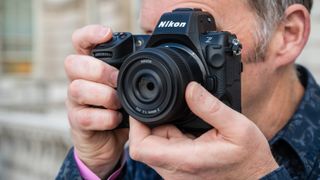
The Quick List ↩ 1. Best overall 2. Best for style 3. Best for pros 4. Best for enthusiasts 5. Best for sports 6. Best DSLR 7. Best for most 8. Best for vlogging 9. Best entry-level How to choose How we test
Nikon cameras have been the starting point for tons of photo buffs diving into 'serious' photography. But they're not just for newbies – with Nikon cameras being the go-to brand for the best pros and enthusiasts too!
This rundown zeroes in on Nikon's newest Nikon Z mirrorless camera like the groundbreaking Nikon Z8 , but also features a few DSLRs that are still holding a place in Nikon's lineup. There are still a lot of DSLR fans out there, but with mirrorless tech reigning supreme, I would expect these to be phased out soon.
Nikon's DSLRs can still charm with good features at a good price, as well as a rugged build and lens options galore. You can dig deeper into our DSLR vs mirrorless breakdown in full.
Nikon makes a wide range of cameras, covering everything from the prestige Nikon Z9 , with features that will suit the most demanding of professionals, through to more everyday cameras such as the Nikon Z6 II , but also more casual photographers and vloggers with the Nikon Z50 .
Now, I have skipped the Nikon CoolPix compact cameras here like the Nikon P1000, and it's insane 125x zoom – but don't sweat it, we've got other guides for the best point-and-shoot , best waterproof , and best bridge camera s.
Our guide splits the top Nikon cameras into best best cameras for every user – so without further ado, let's uncover the best Nikon camera for you!

Gareth is the Reviews Editor at Digital Camera World, and the person in charge of testing the latest cameras from Nikon – most recently reviewing the latest Nikon Zf. With several years of experience as a photographer, he has learned a thing or two about cameras. Outside of photography, expect to find him cycling around London, or deep in a Netflix binge.

The creme de la creme of Nikon cameras is the Nikon Z8. Sure the Z9 might be faster, but for almost everyone, the Z8 will scratch every photography itch with its boundary-pushing specs, smaller body, and more affordable price.
Read more below ↓

This dreamy camera doesn't just look cool, it's also one of the best cameras around for enthusiast photographers. With a full-frame sensor and the latest sophisticated processor, the Nikon Zf is a highly capable camera.

The Nikon Z7 II is the best all-round Nikon camera, it doesn't have the very latest cutting-edge abilities of the Z8 or Z9, but it still has everything that most professionals and enthusiasts are ever going to actually use.

Not just Nikon's best beginner camera, but also one of the best-looking cameras from any brand – if you're into retro looks. With easy to use controls, why not learn to expand your photography skills in style.

If you're a Nikon fan and want to make a big impact on your sports photography career – then you'll never miss a moment with the blisteringly fast Nikon Z9. And for everyone else – there is the Nikon Z8.

Still not ready to switch to mirrorless? Well if you are looking for the best of the best in DSLR technology then you can't beat the Nikon D850 with its 45.7MP full-frame sensor and 4K UHD video recording.
The best Nikon camera in 2024
Why you can trust Digital Camera World Our expert reviewers spend hours testing and comparing products and services so you can choose the best for you. Find out how we test.
The best Nikon camera overall
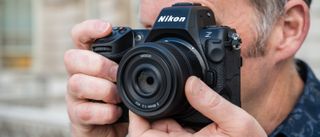
1. Nikon Z8
Our expert review:
Specifications
Reasons to buy, reasons to avoid.
The Z8 is being pushed by Nikon as "a baby Z9", with an almost identical feature set. The only real difference right now is that it has a more compact body (without the Z9's "pro" vertical grip and bigger battery) and it costs over a grand less. There is the option of adding a grip, too, should you need to carry an extra battery and have vertical control buttons
It's capable of 8K 60p video recording or 8K 30p with an enormous 2-hour record limit. Nikon decided to remove the mechanical shutter completely, which means the camera is capable of 120fps continuous shooting and has a max shutter speed of 1/32000 sec, which makes it perfect for sport and bird photography.
The ferocious autofocus is capable of ten kinds of recognition: human eyes, faces, heads, and upper bodies; animal eyes, heads, and bodies; and cars, aircraft, planes, trains, and motorbikes.
Overall, though, there is literally nothing this camera can't do: it gives you speed, resolution, ruggedness and video capability in one. And it's cheaper than the Z9.
Read more: Nikon Z8 review
- Back to the top ⇪
The best Nikon camera for style
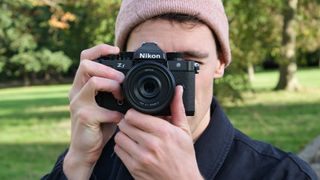
2. Nikon Zf
Don't let its vintage looks deceive you, the Nikon Zf is a fantastic modern digital camera. Internally, this is the closest to a new Z6 III right now, with its 25MP full-frame sensor and Nikon's cutting-edge Expeed 7 processor, the Zf offers much better autofocus and subject tracking, as well as solid 4K video performance.
I really love the Nikon Zf for its retro design which is sure to immediately win over any vintage camera enthusiasts. From the moment I laid my hands on this camera, it stirred up a wave of nostalgia for the bygone days of shooting film. The Zf body has a fantastic build quality with more substantial and robust brass dials, and a weighty feel reminiscent of the iconic Nikon FM2 that served as its inspiration.
I found that the Zf’s minimal grip is uncomfortable to hold for long periods, and wish I had a Smallrig extended grip when testing. Also, there is a lack of Nikon vintage-style lenses natively for the Z mount, which limits you to modern-looking Nikon lenses, or old Nikon lenses via a mount adapter, which spoils the aesthetic somewhat.
Read more: Nikon Zf review
The best Nikon camera for professionals
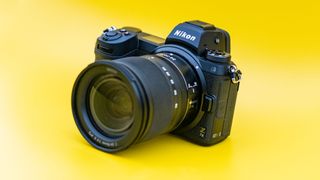
3. Nikon Z7 II
The Nikon Z7 II was Nikon's flagship full-frame mirrorless camera until the mighty Z9 came along. Even so, while the Z7 II can't match the Z9's continuous shooting speed or 8K video, it delivers the same super-high resolution and easily enough sports shooting/video capability for everyday non-specialist use.
This Mark II version brings dual memory card slots and faster processing but retains the excellent design and handling of the original, and Nikon's equally excellent in-body stabilization system.
Nikon has quickly built an impressive range of pro-spec Nikkor Z lenses, so the Z7 II makes an extremely good all-round camera for professional use – and Nikon's pricing is very competitive too. We really rate the Nikon Z7 II, not for any flashy, headline-grabbing specs but because it does everything really well at a good price.
Read more: Nikon Z7 II review
The best Nikon camera for enthusiasts
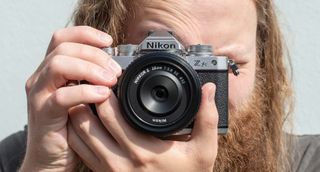
4. Nikon Z fc
This dreamy camera doesn't just look cool, it's also one of the best beginners to mid-range cameras around. With an APS-C sensor and a sophisticated processor, the Nikon Z fc is a highly capable camera for image-makers of all stripes, even if it misses out on a few features like a built-in flash.
It's a little pricier than its stablemate the Nikon Z50, and if you don't care about looks then you may want to consider that camera instead, as it's basically the same deal. However, we're utterly charmed by the style and presentation of the Nikon Z fc.
Can't resist the look and feel of the best retro cameras ? Then look no further, the Nikon Z fc will suit you down to the ground. It does need a few more native DX format Nikon Z lenses, though.
Read more: Nikon Z fc review
The best Nikon camera for sports

5. Nikon Z9
Here, at long last, is the shot across the bows of Canon and Sony – the Nikon Z9 , the firm's latest pro mirrorless camera and a startling step forward for professional imaging.
The Nikon Z9 boasts an intimidating set of features. It's capable of burst-shooting at a face-melting 120fps, for one, and its buffer can record a nominal 1,000 images per burst, with Nikon recording it being capable of as many as 5,000 when used with a high-spec CFExpress card.
It also uses deep-learning AF, meaning its focusing ability should get better over time, and the back-side illuminated sensor delivers superior low-light performance.
The Z9 has added a number of new significant features since launch, thanks to updated firmware. These include adding 8K video, increasing the pre-release buffer to 300 seconds, and the ability to set your camera up to shoot subjects automatically when they are in frame.
Read more: Nikon Z9 review
The best Nikon DSLR camera
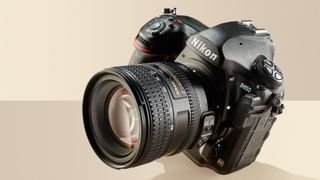
6. Nikon D850
Mirrorless camera fans will often complain about the size and weight of DSLRs, and they have a point. The Nikon D850 is a big bruiser of a camera compared to the Nikon Z models.
But this size works in your favor if you're shooting with big, heavy lenses, and most pro lenses are big and heavy! This is a handling factor that many mirrorless users don't take into account. Being a DSLR, the D850 has a bright, clear optical viewfinder that many photographers still prefer over a digital display, no matter how good the latter.
The D850's 45.7-megapixel sensor produces quite a superb image quality, yet it can still maintain a shooting speed of 7 frames per second or 9 frames per second with the optional battery grip.
Even without the grip, the D850 has an amazing battery life of 1840 shots – far more than any mirrorless rivals – and it comes with two memory card slots; one for an XQD/ CFexpress card and one for regular SD/SDHC/SDXC.
Read more: Nikon D850 review
The best Nikon camera for most people
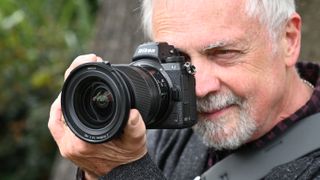
7. Nikon Z6 II
The Nikon Z6 II is a light refresh of the original Z6, with a second memory card slot and a faster processor bringing a bump to burst shooting, now up to 14fps, and the ability to record 4K video at 60fps. it's a terrific all-round camera at a very good price, and this camera's build quality, design, and handling are excellent – as is its in-body stabilization.
The 24MP sensor sounds only a small step up from Nikon's 20.9MP APS-C mirrorless models, but in combination with the much larger full-frame sensor area, it delivers a big leap in image quality, especially in low light. If you're into vlogging and filmmaking, not just stills, this is the Nikon to get.
Read more: Nikon Z6 II review
The best Nikon camera for vlogging
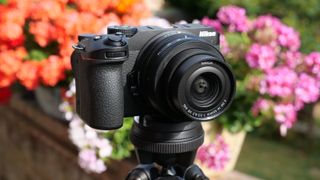
8. Nikon Z30
While Nikon has aimed the Z30 firmly at a vlogger audience, with a focus on ease of use for shooting video, the underlying video specs are very similar to Nikon’s existing DX-format Z-series cameras. Likewise, it remains a very capable stills camera. If you’re looking for a dedicated point-and-shoot video camera that won’t break the bank, the Z30 offers arguably the best build quality in its price range.
Most of what the Z30 is lacking – IBIS, EVF, 4K 60p – can be explained away due to the camera’s very affordable price tag. If you’re of the generation of shooters happy to forego a viewfinder, the Z30 offers the cheapest route to the best Nikon Z lenses .
If you can’t live without an EVF or mainly shoot stills, you could always try the Nikon Z50 or Nikon Z fc and their near-identical innards.
Read more: Nikon Z30 review
The best entry-level Nikon camera
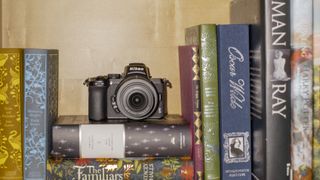
9. Nikon Z50
The Nikon Z50 is a much smaller camera than Nikon's full-frame 'Z' models, but it clearly shares the same design DNA. Despite its small size, it has a good grip and good external controls, and the retracting 16-50mm kit lens is remarkable not just for its pancake lens dimensions but for its overall performance.
Nikon may have come to the APS-C mirrorless market comparatively late, but it's come in with a camera that has so many good points it's hard to know where to start – but we will highlight the 4K video, 11fps shooting... and the fact that its Z mount is identical to that on the larger cameras, so you can use dedicated Nikkor Z DX lenses, full frame Nikkor Z lenses, and regular Nikon DSLR lenses via the FTZ adapter.
Best of all, the Z50 is a terrific value, especially when bought as a twin-lens kit. This is a great value camera for both beginners and enthusiasts, though we would like to see a few more DX lenses coming out.
Read more: Nikon Z50 review
How to choose the best Nikon camera
Choosing the best Nikon camera depends on what you plan to use it for. Consider factors like your skill level, budget, and specific photography needs. For beginners, entry-level models like the Nikon D3500 or Nikon Z50 offer a balance of quality and affordability. If you're a seasoned photographer or want more advanced features, models like the Nikon Z6 II or Nikon Z8 are professional options with impressive capabilities.
When picking a camera, think carefully about the type of photography you'll be doing. For portraits or landscapes, you might prioritize high resolution with a megapixel-packed sensor. Action shots might require a faster burst rate and speedy autofocus. For vlogging or video, look for cameras with reliable autofocus, subject tracking, body-based image stabilization for handheld shooting, and at least a 4K video quality.
Consider the lenses too. Nikon has an extensive range, so compatibility with the lenses you need is crucial. Be aware though that Nikon Z and F lenses are not interchangeable, but if you have Nikon F DSLR lenses already, you can still use them on a new Z mirrorless camera by buying a separate FTZ adapter , but the best thing to to make sure any camera you buy is compatible with the lenses you want.
Additionally, check out the reviews in our guide here to get a good understanding of our experiences using the camera, combined with data from our lab tests and its performance in real-world situations.
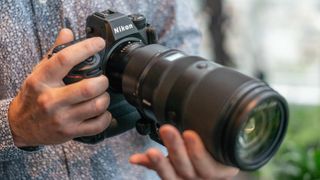
Is Canon or Nikon better?
The boring answer is neither camera brand is better than the other, and both produce exceptional cameras. The real deciding factor is your personal preference when it comes down to handling, with each brand having its own camera body style, button layout, and menu system.
Can I use Nikon F lenses on Nikon Z cameras?
Yes – with an adapter. Nikon makes an adapter, or there are a lot of quality third-party options, that will allow you to mount any Nikon F lens designed for DSLR cameras on its newer Nikon Z mirrorless cameras. Most regular adapters should allow full electronic control of the lens and not affect image quality in any way.
How we test Nikon cameras
In our tests, we put Nikon cameras through their paces in both real-world situations and controlled lab environments. We assess different Nikon cameras based on their intended purpose, for powerful cameras like the Nikon Z9 , we expect to push the specs as far as they will go, while with entry-level cameras like the Nikon Z50 , we temper our expectations more to their intended casual and enthusiast user.
We start with our detailed lab assessments to gauge resolution, dynamic range, and signal-to-noise ratio. To measure resolution, we employ ISO resolution charts, while the DxO Analyzer test gear helps assess dynamic range and noise across the camera's ISO spectrum.
In addition to lab analyses, our reviewers take these cameras out into the field, capturing diverse subjects in varied conditions. Their firsthand experiences provide valuable insights into the camera's usability, handling, and their personal take on image and video quality.
We then combine these real-world trials with our lab findings to choose the best products for our guides.
Find out more about how we test and review on Digital Camera World .
Get the Digital Camera World Newsletter
The best camera deals, reviews, product advice, and unmissable photography news, direct to your inbox!

Gareth is a photographer based in London, working as a freelance photographer and videographer for the past several years, having the privilege to shoot for some household names. With work focusing on fashion, portrait and lifestyle content creation, he has developed a range of skills covering everything from editorial shoots to social media videos. Outside of work, he has a personal passion for travel and nature photography, with a devotion to sustainability and environmental causes.
- Chris George
- Sebastian Oakley Ecommerce Editor
Related articles
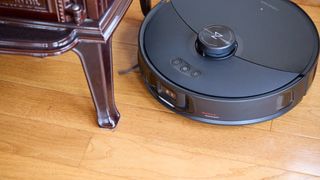

Currently Trending:
APS-C vs full-frame – which sensor size is best?
Why are we obsessed by full-frame sensors, alternatives to the fujifilm x100v here are 7 retro styled cameras, amateur photographer of the year 2023 winners announced, nikon z8 wins product of the year at the 2024 ap awards.
Advertisement
When you purchase through links on our site, we may earn an affiliate commission. Here’s how it works
Best Nikon mirrorless cameras to buy now
In the review
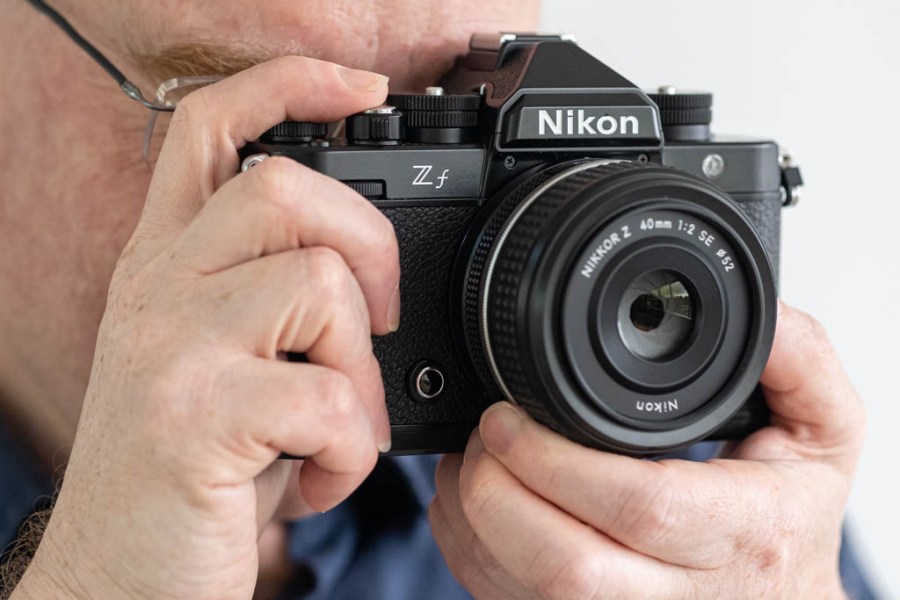
Welcome to our complete guide to the best Nikon mirrorless cameras. If you’re looking for a fantastic mirrorless camera, no matter your skill level, there is one for you in Nikon’s Z system.
We fully test and review every major camera Nikon releases, and over the past five years have observed the Z series of mirrorless cameras grow into one of the most exciting and dynamic in all of photo and video.
Recently, we saw the Z series shaken up by the new, yet gorgeously retro Nikon Zf; a throwback to Nikon’s heritage in the world of film SLRs, but which packs in cutting-edge 8-stop stabilisation and AI-powered autofocus. Before that, we saw the release of a speedster wildlife specialist, the Nikon Z8 – though there are plenty of more affordable beginner cameras in the series. The Nikon Z50 is a great place to start.
There is an explainer section at the bottom of this page with FAQs to help those new to the world of mirrorless cameras, while our guide to DSLR vs mirrorless explains the general concepts. For more options, check out our guide to the best Nikon DSLRs .
The best Nikon mirrorless cameras – here is our quick list:
- Best high-speed Nikon mirrorless: Nikon Z9 – Buy now
- Best Nikon mirrorless for beginners: Nikon Z50 – Buy now
- Best Nikon mirrorless for low light: Nikon Zf – Buy now
- Best budget full-frame Nikon mirrorless: Nikon Z5 – Buy now
- Best high-resolution Nikon mirrorless: Nikon Z7 II – Buy now
- Best all-round Nikon mirrorless: Nikon Z6 II – Buy now
- Best professional Nikon mirrorless: Nikon Z8 – Buy now
- Best second-hand Nikon mirrorless: Nikon Z7 – Buy now
- Best Nikon mirrorless for vlogging: Nikon Z30 – Buy now
- Best Nikon mirrorless for style: Nikon Z fc – Buy now
Read on to learn more about each camera’s strengths and weaknesses, based on the findings of our review team. Once you’ve chosen a Nikon mirrorless camera, you’ll want some of the best Z-mount lenses for Nikon to go with it . First, here’s our list of the best Nikon mirrorless cameras you can buy…
Best high-speed Nikon mirrorless: Nikon Z9

Amateur Photographer verdict
- Best-in-class autofocus
- Super-fast burst rate
- High resolution sesnor
- Hugely expensive, obviously
At a glance:
- Price $5,496 / £5,000 body-only
- 45.7 megapixel full-frame sensor
- 30fps shooting (120fps at 11 megapixels)
- 6-stop in-body image stabiliser
- AI subject-detect autofocus
- 3.69-million-dot electronic viewfinder
What a camera this is. The Nikon Z9 is the firm’s mirrorless professional flagship, a spiritual successor to its single-digit DSLRs like the D5 and D6. For years these cameras were a mainstay of professional sports shooters, and the incredible speedster that is the Z9 continues in that grand tradition,
First, the headline specs. The Nikon Z9 is capable of shooting 45.7MP full-resolution raws at 20 frames per second, and can do so for more than 1,000 frames. Switch to JPEGs and it’ll manage 30 fps – drop the resolution down to a still-useable 11MP, and it’ll shoot at a staggering 120fps.
This is all paired with an intelligent, class-leading subject-detection autofocus system that’s capable of recognising such specific things as faces, animals, cars, birds and more. What’s more, unlike Canon and Sony’s system, there’s no need to specify in advance what it is to look for. Whether the subject is moving or in the corner of the frame, this system hits it with almost unerring accuracy.
We speak from experience here, having put the Nikon Z9 through an extensive testing procedure. It is an incredible camera that just works .
It powers up in seconds and keeps going for ages on a single battery charge. It can shoot completely silently, and has a high-efficiency raw format that keeps file sizes down with no noticeable impact on image quality – incredibly useful for those fast burst speeds! On occasion, but not often, the autofocus landed on the wrong subject, or saw a face where there wasn’t one.
Of course, it all comes at a cost. The Nikon Z9 is a high-end pro camera and is priced as such. For many users it will simply be out of reach. If it’s within your budget, however, it is quite simply one of the best cameras we’ve ever tested.
Best for: action, wildlife and sport photography , professional photographers
Read our Nikon Z9 review
Best Nikon mirrorless for beginners: Nikon Z50

- Excellent viewfinder and touchscreen
- 11fps shooting and responsive AF
- Deep handgrip
- Limited DX-format Z lenses
- Price $857 / £900 body-only
- 20.9 megapixel APS-C sensor
- Tilting touch screen
- 11fps shooting
- 2.36-million-dot electronic viewfinder
Completely new to Nikon mirrorless cameras? Start here. The Nikon Z50 is one of the cheapest models in the line-up, and is a solid all-rounder that’s ideal for getting to grips with the system. It was the first in the series to use an APS-C sensor (or DX-format, as Nikon calls it), and while it’s not outwardly as stylish as, say, the Fujifilm X series of APS-C cameras, the Nikon Z50 has a lot going for it.
With 11fps burst shooting, it is quite rapid, and the hybrid autofocus system does a great job of keeping up with the action. Its 209 phase detection AF points cover the vast majority of the frame, and both Eye and Face Detection AF are on board. The viewfinder and touchscreen are also first-rate for a camera of this class, providing an immersive handling experience.
At the time of the Nikon Z50’s release, there weren’t very many natively DX-format lenses for Z-mount. Four years later and there still aren’t; which is annoying if you’ve invested in a camera like the Z50. The full-frame lenses will still work on the Z50, but tend to be both bulky and expensive, which sort of negates the point of buying a cheaper APS-C camera.
Best for: travel, entry-level photographers
Read our Nikon Z50 review
Best Nikon mirrorless for low light: Nikon Zf
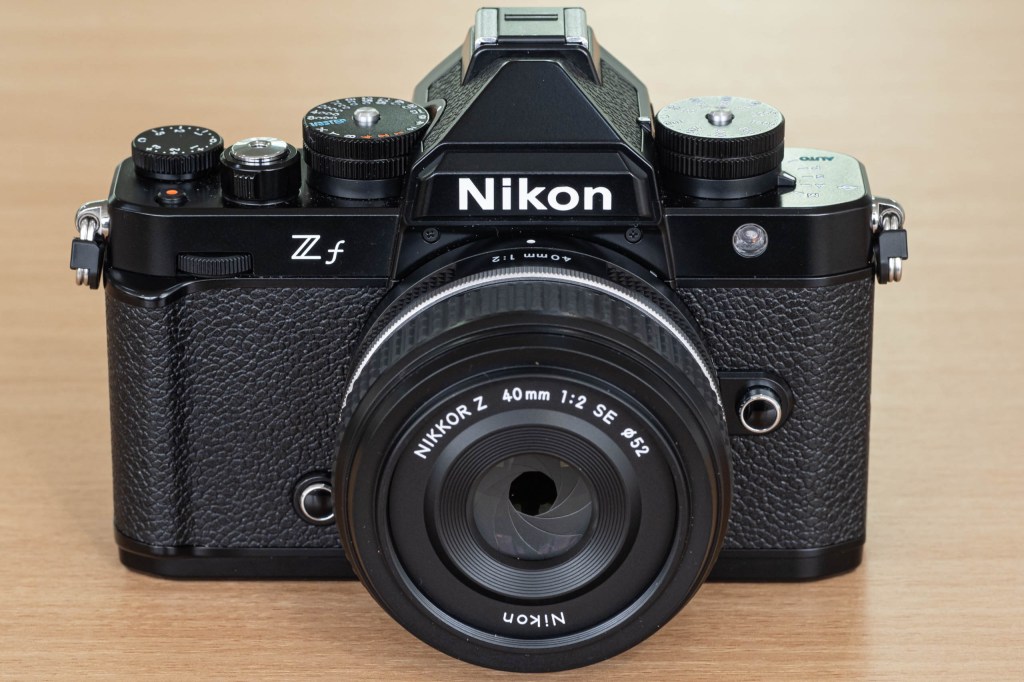
- Gorgeous retro styling with dial-led controls
- Excels in low light
- Zippy burst shooting with AI-powered autofocus
- Second card slot is micro SD, which could limit speeds
- Price $1,997 / £2,149 body-only
- 24.5MP full-frame sensor
- 14fps shooting
Nikon’s newest entry on the block, the fabulous Nikon Zf is successor to several different cameras at once. On the surface, it’s the latest entry in the Z series, and can be seen as a bigger brother to the similarly retro-styled Nikon Z fc , which has an APS-C sensor rather than a full-frame (see further down for more on that camera).
However, the Zf is other things too. It’s a throwback to Nikon’s immensely admirable heritage in film SLRs, with a body styled after famous analogue cameras like the Nikon FM2. It’s also something of a re-work of the Nikon Df DSLR; a retro throwback that was rather overpriced at launch (and can be picked up more reasonably second-hand now) – a concept that was interesting, but missed the mark.
The Nikon Zf is more than just an aesthetic joy, though. It’s a comprehensively featured full-frame mirrorless camera. And, thanks to advancements in Nikon’s latest Expeed 7 processor, is one of the best low-light shooters on the market. The Zf offers a native ISO sensitivity up to 64,000, expandable to 204,600; and with a full-frame sensor of fairly low resolution of 24.5MP, produces ultra-clean images even at higher sensitivities. Having eight stops of in-body stabilisation is helpful, too.
Read our full review of the Nikon Zf to see how it performs.
Read our Nikon Zf review .
Best budget full-frame Nikon mirrorless: Nikon Z5

- Excellent build quality
- Dual card slots
- Good entry point for full frame
- 1.7x crop on 4K
- Only 4.5fps burst
- Price $1,296 / £1,349 body-only
- 24.3 megapixel full-frame sensor
- 4.5fps shooting
For a cheaper full-frame mirrorless, the Nikon Z5 is good value. It has a well-performing full-frame sensor and similar great handling to the more expensive Z6 II; albeit with some key compromises.
Although the resolution of the sensor is similar to that of the Z6 II, the Z5’s is not back-side illuminated, so does not perform quite so well in lower light conditions. It’s also not quite as quick, especially when it comes to frame rates – so is not optimal for shooting action, sports or wildlife.
What you do get is a good performer for static subjects, and access to the full-frame system without spending a fortune – which makes it ideal for beginners and those upgrading to full-frame for the first time.
Best for: beginners, those new to full frame
Read our Nikon Z5 review
Best high-resolution Nikon mirrorless: Nikon Z7 II

- Dual fast card slots
- Deep shooting buffer
- Excellent handling
- Nasty crop on 4K video
- Viewfinder lower-res than rivals
- Price $2,596 / £2,849 body-only
- Up to 10fps shooting
- 5-stop in-body image stabiliser
- Eye-detection autofocus
A high-resolution full-frame model for serious enthusiasts and professionals, the Nikon Z7 II delivers a comprehensive shooting experience while fixing some of the flaws of the first version. It’s got two card slots now, with a second UHS-II SD slot in addition to the CFExpress B/XQD slot from the original Z7.
In testing, we found the Nikon Z7 II to deliver exactly the kind of sublime quality we’ve come to expect from the series, thanks to its 45.7MP back-illuminated full-frame sensor. The camera performs beautifully at all its standard ISO settings, and while noise starts to creep in at ISO 12,800 and 25,600, results are still perfectly acceptable.
The electronic viewfinder is big and beautiful enough to give pause to even the most die-hard DSLR enthusiast (though its raw resolution lags behind that of rivals from the likes of Canon and Sony). Plus, the Z7 II can achieve a decent burst speed of 10fps, with a deep shot buffer.
It’s not the biggest upgrade over the original Z7, and isn’t supposed to be; the original camera is still on sale as a compelling, cheaper alternative. In either case, you get an exceptional mirrorless camera, with perfectly pitched handling, and the ability to produce superb images. It’s hard to ask for more than that.
Best for: landscape photographers, macro photographers, portrait photographers
Read our Nikon Z7 II review
Best all-round Nikon mirrorless: Nikon Z6 II
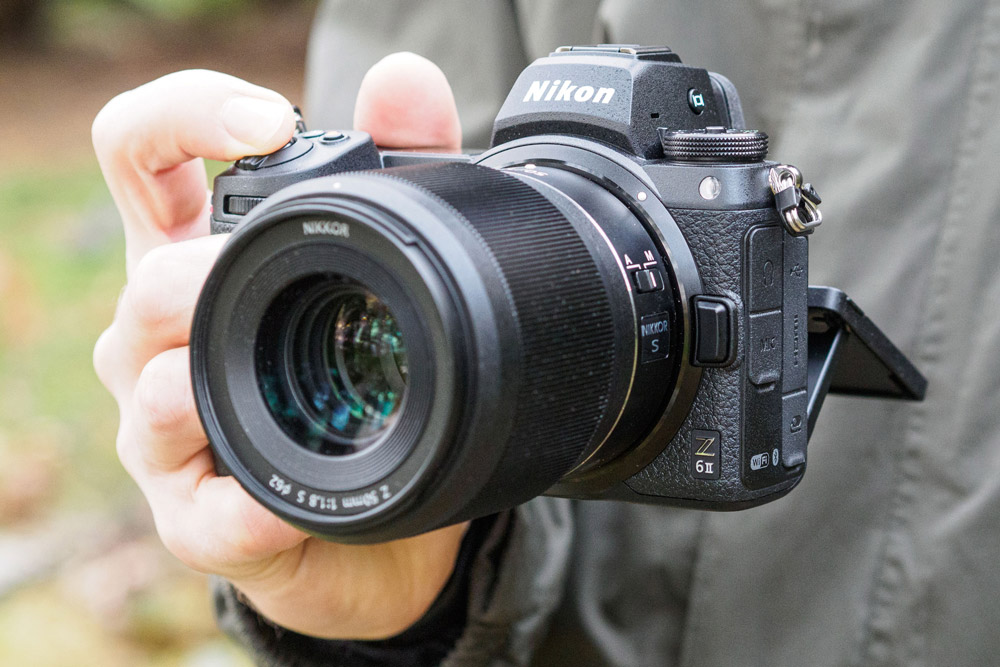
- Robust 14fps burst
- Focuses well in low light
- All-around good at everything, for decent price
- Not a huge jump from cheaper Z6
- Screen not fully articulated
- Price $1,596 / £1,600 body-only
- 24.5 megapixel full-frame sensor
- 5-stop in-body image stabilisation
The Z6 II is a solid all-rounder that for many Nikon mirrorless photographers is likely to be the sensible choice. Its megapixel count of 24.5MP does not compete with the Z7 II, it’s still a highly effective camera with a lot going for it – and having a less pixel-crowded sensor does offer a few advantages of its own.
The Nikon Z6 II does an excellent job in low light, focusing accurately and producing clean, low-noise images in dim conditions. You can nudge the ISO levels up to 12,800 and still get perfectly usable images.
While the autofocus system offers the same 273 phase detection AF points as the previous Z6, it boasts an improved algorithm. In use, the system is reliably accurate and generally seems to intuit your intentions much better than the Z6 ever did. Having Face- and Eye-detection is also handy, especially for street and portrait work.
We have completed a Nikon Z6 II long-term test in addition to our full review, and it really is an impressive camera. The lack of a fully articulating touchscreen may annoy some, but otherwise, it really is a camera that’ll do just about everything.
Best for: All-rounder photographers without a huge budget
Read our Nikon Z6 II review
Best professional full-frame Nikon mirrorless: Nikon Z8
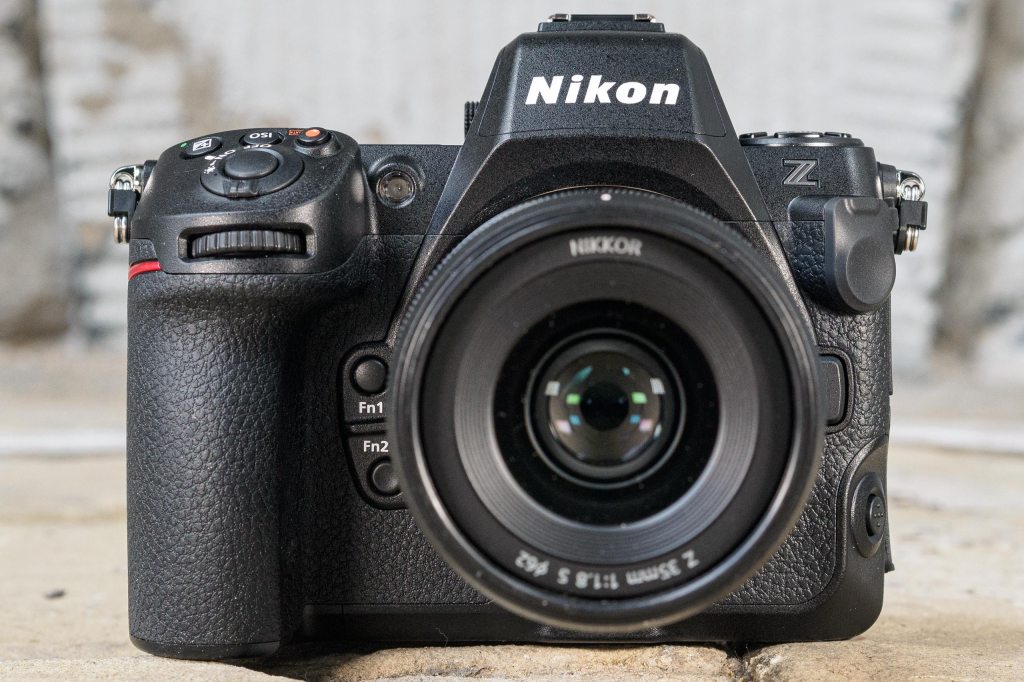
- Almost all the power of the Nikon Z9 in a regular size body
- 45.7MP resolution
- 8K video capability but also 4K up to 120p
- Handling and build quality
- Two different card types (though that can be useful)
- More expensive than the 45.7MP Z7 II
- Price $3,696 / £3,789 body-only
- 20fps shooting (120fps at 11 megapixels)
The Nikon Z8 is a serious camera for serious shooters. On its release, Nikon explicitly drew comparisons with the D850 , one of the most popular DSLRs of all time. The D850’s combination of high resolution and high-speed shooting made it a particular hit with wildlife photographers – the Nikon Z8 is a continuation of that tradition.
Of course, the Nikon Z9 already did that, so in practice, the Nikon Z8 is basically a slimmed-down, cheaper version. This is no bad thing; the Z9 is spectacular, but expensive and bulky, so the Z8 makes more sense for a lot of users. You still get to shoot 45.7MP images at high frame rates, and take advantage of Nikon’s AI-powered subject-detection autofocus. The fastest shutter speed is a lightning-fast 1/32,000sec, and you even get the Z9’s 11MP 120fps shooting mode for those times you need to be faster than fast. 8K video is on board, too.
There is little to criticise about this camera, as we discovered in our in-depth Nikon Z8 review . It’s pricier than the Z7 II, which sports the same resolution, so is only really worth the money if you really need the speed. Some photographers may prefer two UHS-II SD slots rather than one SD and one CFexpress (or XQD) as this necessitates a more expensive card – but that’s to nitpick. If the Z8 fits your budget, and you want the speed it offers, there’s every reason to snap one up.
Best for: Professionals needing a powerful, durable and compact camera
Read our Nikon Z8 review
Best second-hand Nikon mirrorless: Nikon Z7

- Excellent value on second-hand market
- Good ergonomics
- Beautiful viewfinder
- High-res image quality
- Single card slot that requires expensive cards
- Screen just tilting, not vari-angle
- Used price $1,638 (becoming elusive) / £984 body-only
- 45.7MP full-frame BSI CMOS sensor
- 9fps shooting
- Single XQD card slot
- 4K 30p video
- 5-axis stabilisation
The original Nikon Z7 was one of the first cameras out of the gate for the Z system. As such, it’s an interesting object to look back on, exemplifying many great things about the series as well as the mis-steps Nikon made on its first go.
So, let’s get the cons out of the way: the Nikon Z7 only has one memory card slot. Booooo. This is a bit of a head-scratcher as it instantly makes the camera a non-starter for photographers who need an extra card as backup insurance against data corruption – wedding photographers, event photographers, photojournalists etc.
To make matters worse, the single slot in question was designed to accept only the expensive and increasingly irrelevant XQD card format (it has since been patched to accept CFexpress, which is still expensive, but is at least widely used).
However, if you can get over this, the Nikon Z7 delivers the exact same full-frame resolution as its successor, the Z7 II, and does so for about half the price on the second-hand market. This kind of full-frame quality for about $1,600 / £1,500 is a hell of a deal, storage quirks notwithstanding, and the handling of this camera is wonderful. It’s nicer to use than its Sony contemporaries, sitting comfortably in the hand, and its viewfinder is gorgeous.
The image quality is simply stunning in pretty much any lighting conditions, and the 5-axis stabilisation is highly effective – even more so when paired with stabilised Z-mount lens. While it doesn’t boast the kind of futuristic AI-powered subject-detection autofocus we’d later see on the likes of the Z9, it still does an excellent job of locking onto and tracking moving subjects. Like all the best Nikon cameras, it just works.
Read our full Nikon Z7 review .
Check out second-hand prices for the Nikon Z7 on MPB.
Best Nikon mirrorless for vlogging: Nikon Z30
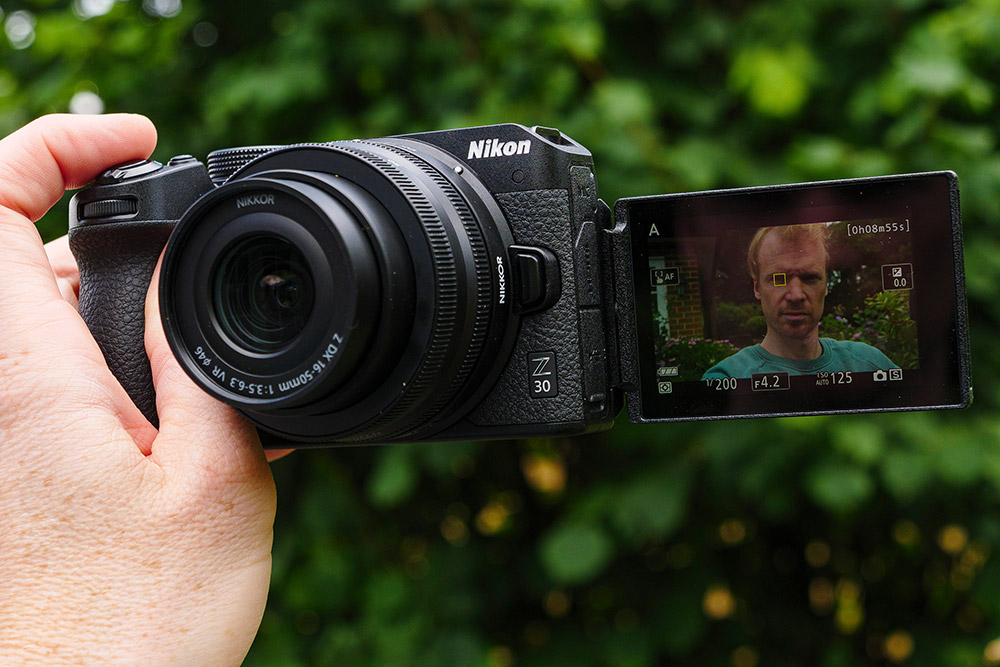
- Very lightweight
- Excellent, uncropped 4K
- Well priced
- No headphone jack
- No in-body stabilisation
- Price $607 / £599 body-only
- Single card slot
- No viewfinder
- Uncropped 4K video
Aimed squarely at vloggers, the Nikon Z30 shapes up as a natural rival to similarly priced vlogging cameras like the Sony ZV-E10 , with the same APS-C sensor. But as the Z system is much younger than Sony’s E-mount, you won’t have such a gargantuan selection of optics to choose from.
Still, on its own terms, the Nikon Z30 is an impressive camera. As we found in our full test and review, its comfortable grip makes for solid handling. The camera is easy to use one-handed, with the flip-around screen handy for self-taping. There’s no viewfinder, but a vlogging camera does not really need one, and it help keeps the weight down to a slender 405g. Not bad!
Video footage looks excellent, with uncropped 4K available at up to 30p, and a Flat colour profile that is is ideal for grading (it’s not quite a Log profile, but it’s close). Full HD is also available at up to 120p, bringing slow-motion into play.
There are a couple of omissions. We found that the lack of a headphone jack compromises the Z30’s usefulness somewhat for video – having no way to accurately monitor your audio mid-shoot could cause problems. Also, while the lack of in-body stabilisation was presumably a sacrifice to keep the cost and weight down, it does make it harder to use the Z30 for run-and-gun shooting (and the cost-savings are somewhat negated anyway if you end up having to buy a gimbal).
Best for: vloggers on a budget
Read our Nikon Z30 review
Best Nikon mirrorless for style: Nikon Z fc

- Stylish, well-designed body
- Vari-angle screen
- Good image quality at high ISOs
- Somewhat bulky
- Basically the same as Z50
- Price $956 / £899 body-only
- 20.9 megapixel APS-C format sensor
- Retro-styled body
Using the same base specifications as the Z 50, the Z fc should appeal to all of those that want something that not only performs well, but also looks the part too.
With its attractive retro styling, it’s quite possibly the best looking Nikon Z camera – or at least, it was before the Nikon Zf arrived. But it’s not just a looker – another advantage is the use of a vari-angle screen, which is a bit more flexible and useful than the tilting version found on the Z50.
Which you opt for may also come down to price – sometimes the Z50 is cheaper, sometimes its the Z fc – so it’s worth shopping around to make sure you get the best deal.
Best for: vloggers, travel, entry-level photographers
Read our Nikon Z fc review
How to choose a Nikon mirrorless camera – key specs explained
What is a mirrorless camera anyway? As the name implies, it lacks a mirror in the camera body, unlike a DSLR, which uses a reflex mirror system to reflect an image into an optical viewfinder. There are plenty of other camera types that don’t use mirrors, like compacts and action cameras, but the term ‘mirrorless’ has come to refer specifically to interchangeable-lens cameras. See our piece on DSLR vs mirrorless for a more detailed explanation.
Focusing specifically on Nikon mirrorless cameras, here are the key specs you’ll want to pay attention to when choosing the right model for you.
Sensor: Sensor size is an important consideration when choosing any camera. In the Nikon mirrorless system you have two choices: full-frame, or a smaller APS-C sensor (Nikon calls them FX and DX, respectively). The larger full-frame sensors are better for image quality, especially in low light. However, APS-C cameras are not only more affordable, but also provide you with a lighter system that’s great for travel. We have a full outline of the key pros and cons of sensor sizes in our guide to full-frame vs APS-C .
Resolution: This refers to how many pixels the sensor has, expressed in megapixels (MP). The more megapixels, the more detail in images. This is great for printing, but demands more storage space and does increase the cost of the camera.
Screen & viewfinder: Almost all of Nikon’s mirrorless cameras have electronic viewfinders – only the vlogger-focused Z30 leaves it off. Size and resolution are the key specs to pay attention to here; the bigger the EVF, the better the shooting experience. Screen-wise, all Nikon mirrorless cameras have LCD screens that offer some kind of movement, either tilting or fully articulating. The latter is useful for video, especially recording pieces to camera, though photographers can also make use of it to explore unusual shooting angles.
Image stabilisation: All of Nikon’s full-frame cameras include in-body image stabilisation (IBIS). None of Nikon’s APS-C models offer it, which is something to think about – particularly if you’re likely to be using them with long lenses or in low light with slow shutter speeds. That said, you can mitigate for the lack of IBIS by always using lenses with stabilisation (Nikon calls it VR, or ‘Vibration Reduction’), or by using a tripod.
Frame rate: Also referred to as burst speed or continuous shooting speed, this is how fast the camera can fire off shots sequentially. A high burst rate is useful for capturing fast action – though it’s also worth checking a camera’s buffer depth, i.e. how many shots it can capture in a burst before it has to slow down and catch up.
Video: All Nikon mirrorless cameras can shoot 4K video, and the flagship Z9 and Z8 even offer 8K for high-end users.
Lens options: You might be thinking this is a redundant category, given that all the cameras on this list use the Z mount. However, things work slightly different with the APS-C DX-format models in the series (currently the Z50, the Z30 and the Z fc), as their smaller sensor incurs a 1.5x crop factor on the focal length of the lens.
This means, for example, a lens that provides a 35mm focal length on the Nikon Z7 II will provide a 52mm equivalent focal length when mounted to the Z50. There are a few Z-mount lenses specifically designed for DX-format cameras, though admittedly not very many so far.
Best Nikon mirrorless cameras: frequently asked questions
Which is the best nikon mirrorless for wildlife.
There is a straightforward answer to this question, albeit one that a lot of people aren’t going to like – the best Nikon mirrorless camera for wildlife is the Nikon Z9 . It just is. Out-of-this-world burst shooting capabilities, the intelligent subject-detect autofocus that can lock onto animals and birds, the sublime 45.7MP image quality – it all works seamlessly in tandem, and makes the Nikon Z9 not just one of the best Nikon mirrorless cameras for wildlife, but one of the best wildlife cameras you can buy, full-stop.
Of course, with a price tag of $5,496 / £5,299 for just the body, the Nikon Z9 is not going to be a realistic option for a lot of people. The Nikon Z8 is essentially a slimmed-down version of the Z9 with a lot of the same internals; however, at $3,696 / £3,999, it’s still not what you’d call budget-friendly.

For a more modestly priced option, the Nikon Z6 II is a good choice for wildlife . Its focusing system is reliable and accurate, and it keeps on going when the light gets low. Its full-frame sensor produces great-looking 24.5MP images, and wildlife photographers can take advantage of the 14fps burst mode. It costs around $1,596 / £1,799.
If this is also too high a price, then an APS-C model could be a good choice. The Nikon Z50 ticks a lot of boxes for wildlife photographers , with a compact, portable body and 11fps burst shooting. It’s a reliable little all-rounder, and it’s hard to argue with the street price of around $756 / £789.
Plus, the small sensor size means the effective focal length of your lenses will be extended by 1.5x – so, for example, a 50mm lens will behave like a 75mm lens. This can be immensely useful when hunting for images of shy wildlife subjects.
Can you use Nikon mirrorless cameras with F-mount DSLR lenses?
Yes, you can mount Nikon F-mount lenses to your Nikon Z-mount camera, and in many cases still enjoy full functionality of features like autofocus and stabilisation. All you need is a Nikon FTZ adapter , which slots between the camera and lens. There’s also an FTZ II adapter at $250 / £249, which is basically the same but has a redesigned construction that keeps out of the way of some of the function buttons on the Z9. Adapters are easy to find; you can get the FTZ adapter from MPB for around $160-170 / £170-180 .
Be aware that this process only works in one direction – you can’t adapt mirrorless Z lenses onto F-mount DSLRs. This is because DSLRs have a thicker body to allow room for the mirror, so any Nikon Z lens would be mounted too far from the sensor to focus.

Which Nikon mirrorless cameras have an articulating screen?
The Nikon Zf and the Nikon Z fc have fully articulating screens, as does the vlogging-focused Nikon Z30. The Nikon Z9 and Z8 receive half points here, as they have two-way tilting screens that are pretty close to fully articulating.
Other Nikon mirrorless cameras, including the Z5, Z50, Z6 II, Z7 II, Z6 and Z7, use various types of tilting screens, rather than fully articulating.
Text by Amy Davies, with contributions from Jon Stapley.
Once you’ve found the perfect camera for you, have a look at some of the best Nikon Z-mount lenses . Or have a look at more buying guides , and our latest reviews .
Follow AP on Facebook , Twitter , Instagram , YouTube and TikTok .

Amy is a highly experienced photography and technology journalist who has been working on AP since 2018, having been working in the industry since 2009. She is a graduate of the magazine journalism course at Cardiff University and has written for a wide range of publications and websites. As Features Editor, she is responsible for commissioning an eclectic mix of features connected to general photography, along with interviews. She is also a very experienced reviewer of cameras and associated technology, with her reviews featured on multiple sites including TechRadar, Digital Camera World, Trusted Reviews, ePhotozine, Stuff, Expert Reviews, T3, Photography Blog and more. She is also an expert on smartphone photography and smartphones generally.

You may also like...

April 26, 2024
The ultimate guide to tripods
Choosing the right support for your needs doesn't have to be difficult. Andy Westlake talks you through the tripod options
by Andy Westlake
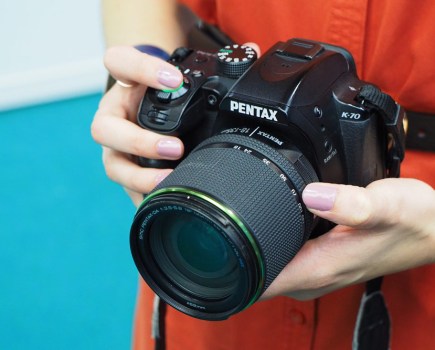
The best cameras for beginners in 2024
Ideal models for new and budding photographers, and those who want a camera for good quality images at a fair price.
by Amy Davies
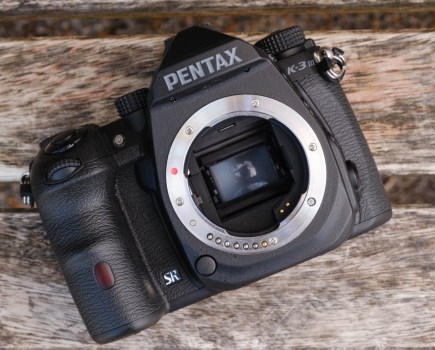
April 25, 2024
Best Pentax DSLRs of all time
Tim Coleman guides us through the best Pentax DSLR options available in 2023, both new and second-hand options along with some classics
by Tim Coleman

Looking to improve your photography? Amateur Photographer is the magazine for you, subscribe today and pay just £26 for your first 13 issues!
No thanks, I’m not interested!
The best travel camera for 2024: the finest choices for your adventures
The best travel cameras for your next big trip
- Best overall
- Best-looking
- Best action cam
- Best tough camera
- Best premium compact
- Best small full-frame
- Best hybrid vlogger
Best for moving subjects
- Best superzoom
How to choose
- How we test
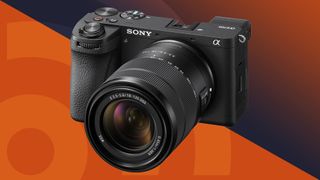
1. The list in brief 2. Best for most people 3. Best value 4. Best-looking 5. Best action 6. Best tough 7. Best premium compact 8. Best small full-frame 9. Best hybrid travel vlogger 10. Best for moving subjects 11. Best superzoom bridge 12. How to choose 13. How we test
Road trip or flyaway vacation, the best travel cameras let you capture incredible images of your holiday adventures. From action cameras to compact mirrorless models, we've extensively reviewed the top travel-friendly cameras and rounded up our recommendations in the expert guide below. Whatever your itinerary, this is list is your ticket to the ideal travel camera.
Based on our tests, we think the best travel camera overall is the OM System OM-5. A portable, weatherproof Micro Four Thirds model, it shoots higher quality images than a smartphone while offering the useful flexibility of interchangeable lenses.
Whatever your expectations and budget, you'll find a travel camera to fit the bill below. Our list includes some of the best mirrorless cameras , as well as some of the top compact cameras . Our expert reviewers have spent many hours testing the best options, using them in the real world to assess how well they perform when traveling. You'll find the results distilled in the list below, together with buying advice to consider when choosing a travel camera.

Tim is TechRadar's Cameras editor, with over 15 years in the photo video industry and most of those in the world of tech journalism, Tim has developed a deeply technical knowledge and practical experience with all things camera related. He’s also worked in video production with clients including Canon, and volunteers his spare time to consult a non-profit, diverse stories team based in Nairobi.
The quick list
If you don’t have time to read our full list of the best travel cameras, you can read the round-up below for a shortcut to the top options for your needs and budget. If you find one that takes your fancy, use the links to jump to our full write-up.

The best travel camera overall
Squeezing a host of features into a compact, weatherproof body that’s compatible with a range of lenses, the OM-5 is the ideal travel camera.
Read more below

The best value travel camera
With a large 1-inch sensor and useful 15x optical zoom, the Panasonic TZ200 puts smartphone-beating performance in your pocket.
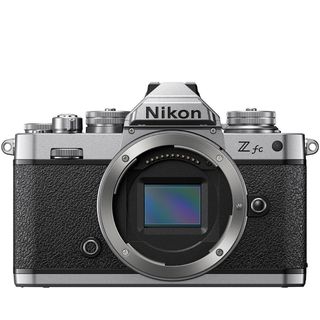
The best-looking travel camera
Don’t be fooled by its lovely retro looks: the Nikon Z fc is every bit the modern travel camera, with a useful touchscreen and top image quality.
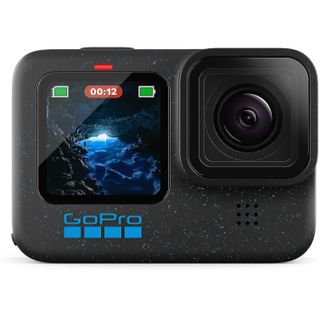
The best action camera for travel
The GoPro Hero 12 Black is the best all-round action camera available ideal for capturing your adrenaline-filled travels, with 8:9 sensor ideal for sharing travel videos to social.
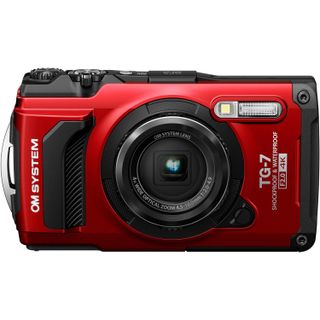
The best tough travel camera
For rough and tumble travels you'll want a tough camera and they don't come much better than the OM System Tough TG-7.

The best premium compact
With a large sensor, fixed 23mm focal length, small form factor, retro design and film simulations, the X100VI is a powerful tool for street photography and documenting your travels.
Load the next 4 products...

The best small full-frame camera
Combining a small form factor with a high-res 61MP sensor and fantastic autofocus, the Sony A7C R is the best full-frame camera for travel photography.

The best hybrid for travel vlogging
A capable sensor and automated settings, including a Vlogging mode, make the Fujifilm X-S20 an accessible tool for stills and video on the go.
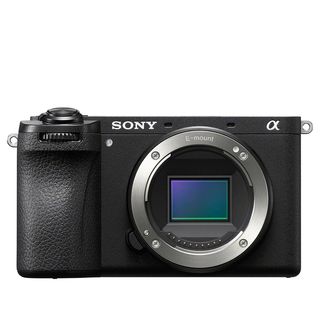
The best for moving subjects
The compact A6700 uses AI-powered autofocus to reliably snap on to animals, insects, cars and more. The Fuji X-S20 is better for video, though.
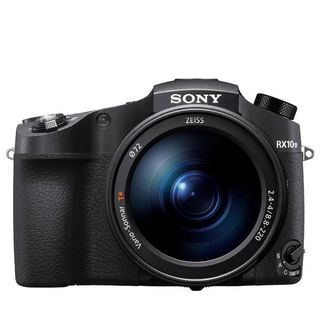
The best superzoom camera
Even with a 1-inch sensor, the Sony RX10 IV delivers sharp stills and video, with the added versatility of a generous 24-600mm zoom range.
The best travel cameras in 2024
Why you can trust TechRadar We spend hours testing every product or service we review, so you can be sure you’re buying the best. Find out more about how we test.
Below you'll find full write-ups for each of the best travel cameras in our list. We've tested each one extensively, so you can be sure that our recommendations can be trusted.
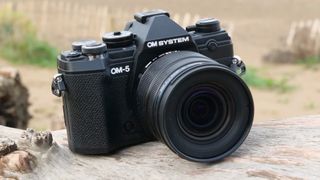
1. OM System OM-5
Our expert review:
Specifications
Reasons to buy, reasons to avoid.
✅ You want a robust travel camera: Light enough to travel with but tough enough to deal with bad weather, the OM-5 is a ruggedly dependable camera. ✅ You shoot handheld a lot: The OM-5 has excellent image stabilization for stills, meaning you can cross a tripod off your packing list.
❌ You want the best image quality: Its Micro Four Thirds sensor is decent enough, but some rivals offer more pixels and better low light performance. ❌ You have large hands: Handling is surprisingly good for a small camera, but the grip is not very deep, especially for those with bigger hands.
The OM-5 is only a relatively minor update of the Olympus OM-D E-M5 Mark III , but its combination of talents make it an ideal travel camera in our book – particularly if you want the flexibility of interchangeable lenses. It shoehorns a lot of features into a compact, weatherproof body that's compatible with a wealth of equally small lenses. Most of its skills, including excellent in-body image stabilization and computational photography modes, are also designed with travelers and adventurers in mind.
Our tests found that the OM-5 delivers excellent video and stills quality for its size, helped by a stabilization system (good for 6.5-stops of compensation) that gives you a high hit-rate of keepers. We also enjoyed the high-quality feel of the camera's dials, as well as in-camera software tricks, like Live ND and in-camera focus stacking, which are ideal for macro shots or blurring skies for an ethereal effect. Less good are the fairly average EVF resolution, 4K /30p limit for video and relative limitations of its smaller sensor, but these are all acceptable trade-offs considering this camera's size and price.
Read our in-depth OM System OM-5 review
- ^ Back to the top
The best-value travel camera
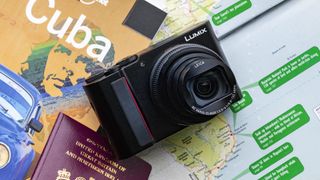
2. Panasonic Lumix ZS200 / TZ200
✅ You want an all-in-one compact: You can’t beat the TZ200 for portability, but it’s also a feature-packed option with a useful zoom range and 1.0-inch sensor. ✅ You want a large zoom range: At 15x optical zoom, the TZ200 offers the versatility to shoot all sorts of subjects on your travels.
❌ You like an ergonomic grip: The Lumix TZ200 has plenty of manual controls on the metal body, but there’s not much of a grip to get your fingers around. ❌ You want a cheap camera: Its generous feature set makes the TZ200 excellent value, but its still pretty pricey for a premium compact.
With smartphones now raising the bar for point-and-shoot photography, compact cameras have to offer something special to justify their place in your travel bag. The ZS200 / TZ200 does that with its large 1-inch sensor and versatile 15x optical zoom. It might be towards the upper end of the compact camera market, but Panasonic 's travel zoom continues to offer great value.
Its large 1in sensor produces better natural image quality than most smartphones, despite the latter's advances in multi-frame processing. Our tests found colors to be nice and punchy, with the dynamic range allowing you to recover lost shadow detail with post-processing if needed. Even at 24mm, vignetting and distortion is nicely controlled. There's also a handy built-in electronic viewfinder, which makes it easier to compose images in bright light. It's still quite pricey, but this is still the best travel zoom compact camera available right now.
Read our in-depth Panasonic Lumix ZS200 / TZ200 review
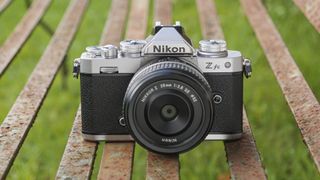
3. Nikon Z fc
✅ You care about camera design: From the retro dials to the circular viewfinder, the Nikon Z fc channels classic style to fantastic effect. ✅ You like manual exposure control: Dedicated dials for ISO, shutter speed and exposure, complemented by a lens control ring, give excellent manual control.
❌ You need a wide choice of lenses: There are only a handful of Z-series kit lenses designed for the APS-C format, limiting your options for expansion. ❌ You want a rugged camera: Although it looks like the sturdy FM2, the Z fc isn’t weather-sealed, so it’s not one to take on rainy adventures.
Travel photography is all about capturing memories and Nikon’s Z fc fully embraces the concept of nostalgia: it’s a stunning homage to the 30-year-old Nikon FM2 – complete with retro styling, dimensions and dials. Despite the throwback design, it’s a very modern camera inside, sharing many of its specs with the capable Nikon Z50. While some photographers might wish for a full-frame sensor, the Z fc’s APS-C number does a stellar job of capturing stills and 4K video, aided by reliable tracking autofocus. Our tests found that its 20.9MP sensor had an excellent handle on noise, especially under ISO 800, while dynamic range was impressive.
Its vari-angle touchscreen is also a brilliant addition, making it easy to frame travel selfies – or folding away completely for a leather-back look that lets you pretend it's the Eighties. The Nikon Z fc isn’t as sturdy as the camera that inspired it (there’s no weatherproofing, for example), but it’s still a beautifully unique camera for casual use. And with dedicated dials for ISO, shutter speed and exposure, plus a customizable lens ring, it’s also an easy one to control on the go.
Read our in-depth Nikon Z fc review

4. GoPro Hero 12 Black
✅ You want a rugged travel camera: Waterproof down to 10m, the GoPro Hero 12 Black is a great choice for capturing action-packed travels. ✅ You plan to share on social: The 8:7 aspect ratio of its sensor gives you lots of flexibility to crop footage for social, including vertical videos.
❌ You plan to shoot in low light: Its 1/1.9in sensor shoots sharp footage, but it still struggles with noise handling in lower lighting conditions. ❌ You want a hybrid for stills: While the sensor can shoot 27MP stills, you’ll get a better photography experience from a standard alternative.
If you're looking for a high resolution action camera for your travels that's as comfortable shooting smooth videos as it is crisp photos, then the GoPro Hero 12 Black tops the bill. It was an underwhelming update of the Hero 11 Black, but that's not necessarily a bad thing because that camera was already highly capable. There's the same 1/1.9in sensor with versatile 8:9 aspect ratio – you can reframe footage for different social channels without sacrificing quality, and its max resolution of 5.3K/60p beats the DJI Osmo Action 4. You can capture dramatic TimeWarps at the full 5.3K resolution, shoot photo sequences as a rapid 30fps, and pull 24.7MP stills from 5.3K video.
Design-wise, there's no change to the Hero 11 Black, the two rugged models are physically identical and come with a large Enduro battery as standard, giving more time between recharges on the road. The same interface lets you tweak the user experience, with ‘Easy’ and ‘Pro’ modes to suit your skill level. Superior Horizon Lock and HyperSmooth 5.0 smarts do a remarkable job of stabilizing handheld video. Minor updates from the Hero 11 Black are mainly for pros, including flat Log color profiles, 10-bit video, and multi-channel audio capabilities. For most people however, there's little reason to upgrade or to pick the Hero 12 Black over its predecessor which could save you a little money.
Read our in-depth hands-on GoPro Hero 12 Black review
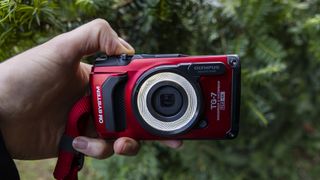
5. OM System Tough TG-7
✅ You want a hardcore camera: With a case that’s waterproof, shockproof and freezeproof, the OM System Tough TG-7 is built to take a beating. ✅ You like a simple interface: Premium features include RAW shooting and 4K video, but the camera itself is easy to operate, even in tricky conditions.
❌ You want the best image quality: Results from the 1/2.3in sensor are fine, but the TG-7 tends to overexpose, and detail is lost at the telephoto end. ❌ You like using a viewfinder: The Tough TG-7 doesn’t have a viewfinder, and the 3-inch LCD screen has limited visibility in bright sunlight.
The biggest change in the OM System Tough TG-7 and the camera it replaces is in the name – since OM System acquired Olympus, it has wrought extremely minor upgrades to key models from the Olympus range, including the TG-6. None-the-less, we haven't seen another tough camera to better the TG-6 in that time, and so if you want the best tough camera available today, the TG-7 now tops the list.
Tough cameras like the TG-6 are freeze-proof, shockproof and waterproof and can therefore be used in scenarios that you simply wouldn't consider with your phone or expensive camera, and for that reason the TG-7 is still one of the best travel cameras you can buy. Its industrial design feels reassuringly rugged, while large buttons make it convenient to operate beneath the waves or while wearing gloves, plus its 3-inch LCD display offers decent visibility in most conditions.
We found image quality to be reasonable for a camera with a 1/2.3-inch sensor, with nice, rich colors – although there was a tendency to overexpose and blow out highlights. An equivalent zoom range of 25-100mm is fair, plus the inclusion of 4K video and raw shooting enhance flexibility. Its image quality might not match your phone for regular photos, but the TG-7 will allow you to be capturing extreme travel memories when you otherwise couldn't, plus there's a range of useful accessories such as a ring light for close up photography.
Read our in-depth OM System Tough TG-7 review
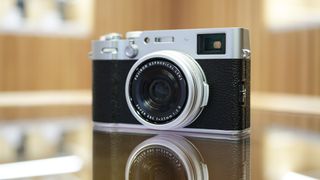
6. Fujifilm X100VI
✅ You're exploring the city: With a fixed 23mm f/2 lens, Fujifilm's best autofocus, tilt screen and hybrid viewfinder, the X100V is a fantastic choice for street photography. ✅ You want a premium camera: From its retro design to its metal body, the X100V feels well-made and looks the business.
❌ You don’t want a fixed focal length: The 23mm lens is fantastic, but some users will find it limiting, especially if you value the ability to zoom. ❌ You’re on a tight budget: The X100VI is a popular but niche premium camera, and its increased price will put it out of budget for many.
We'd class the Fujifilm X100VI as a niche premium compact camera, but the range has grown in popularity since its inception in 2010 and is more popular than ever. The sixth generation model keeps the fixed 23mm f/2 lens and retro design that's been inspired by 1950s analogue cameras and despite its single focal length and no zoom it is one of the best travel cameras you can buy if it's in your price range.
The X100VI keeps all that users have grown to love about the X100-series; sharp fixed lens, large sensor, retro design, and unique hybrid viewfinder, but then builds on the X100V with a higher-resolution 40MP sensor and in-body image stabilization. The result is a significantly more versatile camera, for example the digital teleconverter can crop into the full image for 50mm (at 20MP) and 70mm (at 10MP) focal length looks, while stablization lets you shoot slower shutter speeds in low light.
Other key improvements over the X100V include more detailed 6K video and Fujifilm's best-ever autofocus that includes advanced subject detection for photo and video. You can rely on the X100VI as a discreet everyday camera to document the world around, especially your travels, and it comes with 20 film simulation color profiles inspired by actual Fujifilm 35mm film that you can customize with recipes to develop your own style.
Read our in-depth Fujifilm X100VI review
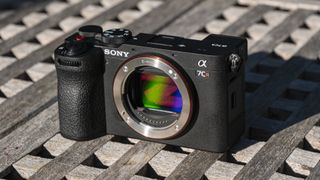
7. Sony A7C R
✅ You want the sharpest stills: With a 61MP full-frame sensor, you won’t get sharper travel snaps from any other camera in this list. ✅ You want a small, powerful camera: Despite the full-frame sensor inside, the A7C R is very compact and fits neatly in the hand.
❌ You value good handling: The small design has drawbacks, including a compromised viewfinder and absent AF joystick. ❌ You plan to use big lenses: Its compact proportions mean the Sony A7C R is mismatched with larger telephoto lenses.
By combining a small, travel-friendly form factor with a 61MP full frame sensor and fantastic autofocus, Sony has created arguably the ultimate travel camera. Successor to the Sony A7C – already one of our favorite travel photography tools – and announced alongside the A7C II , the A7C R fits nicely in the hand, while a flip screen and new dials offer welcome control.
Equipped with Sony’s top-grade autofocus and AI-powered subject tracking, the A7C R can cleverly and reliably track a broad range of subjects. You won’t find a better full frame sensor, either: borrowed from the A7R V , it captures stunning, pin-sharp stills in all conditions. Cropping potential is vast, and video footage is decent too.
There are trade-offs, though. In testing, we found that the A7C R’s compact proportions come with handling compromises, especially compared to the traditional design of the A7R V. The viewfinder feels small and fiddly, and we wish Sony had included an AF joystick. It’s also not a camera to pair with large telephoto lenses. But the real kicker is the cost: it’s significantly more expensive than the A7C II. That premium means it’s only a camera to consider if you need absolutely the best possible image quality on your travels.
Read our in-depth Sony A7C R review
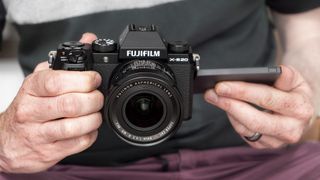
8. Fujifilm X-S20
✅ You value longevity: The X-S20 has double the battery life of the X-S10, making it a great choice for long days of travel photography. ✅ You shoot video, too: Capturing sharp 26MP stills and 6K/30p open gate video, the Fujifilm X-S20 is a true mirrorless hybrid.
❌ You need weather proofing: Build quality of the X-S20 is good, but you’re better off with the Sony A6700 if you need a weatherproof camera. ❌ You have a limited budget: Its additional features come at the cost of a steep price hike compared to the Fujifilm X-S10, which makes it a harder sell.
Channelling everything we liked about the X-S10 – including a compact, well-balanced body – the Fujifilm X-S20 cements its position as a fantastic mirrorless cameras for travel. It handles comfortably, with simplified dials making it accessible for beginners. In testing, we found new novice-friendly features – such as a dedicated Vlogging mode – also make the X-S20 a forgiving camera for touring first-timers.
The X-S20 is blessed with a proven shooting system, utilising the same 26.1MP sensor as the X-S10 and X-T4 to produce quality stills. It also eases the way for beginners with an automatic scene detection mode, which harnesses the power of Fuji’s latest X-Processor 5 to reliably choose the correct settings. From our first impressions, it works better than the automatic subject tracking, which was a little hit and miss.
With 6K/30p 4:2:2 10-bit internal video recording also on offer, plus in-body image stabilization that worked well in testing, the Fujifilm X-S20 is a solid option for content creators on the move. The lack of weather-sealing will discourage adventurous travellers, while the price tag means it isn’t one to leave in an unattended bag. But at just 26g heavier than its predecessor, the X-S20 is a very capable all-rounder for travel.
Read our in-depth Fujifilm X-S20 review

9. Sony A6700
✅ You want a capable travel hybrid: A sharp APS-C sensor, five-axis stabilization and AI autofocus make the A6700 a great all-rounder to take on the road. ✅ You like to get hands-on: A more ergonomic grip and lots of direct-access buttons make the A6700 a nice camera to handle and use.
❌ You shoot mostly video: The A6700 can record sharp video, but there’s a heavy 1.6x crop on 4K/120p slow-mo and Active SteadyShot stabilization isn’t the best. ❌ You like simple menus: The interface on the A6700 has quite a learning curve, and it can be tricky to navigate when shooting out and about.
It's a close-run thing between the Sony A6700 and the Fujifilm X-S20 above, but if you shoot a lot of moving subjects then the Sony should be your choice. Like the Fuji, it has a 26MP APS-C sensor and comes in a compact, travel-friendly form. And like the Fuji, it's a genuine hybrid, offering decent video options to go with its stills prowess. But there are some key differences.
First, the good: the A6700 has the same AI-powered chipset as the far more expensive Sony A7R V , and this helps it deliver incredible subject tracking; seriously, this camera will lock on to humans, animals, insects, cars, trains, aircraft and more, then follow them unerringly around the frame. However, its video chops aren't as impressive as those of the Fuji. 4K 120p slow-mo footage is subjected to a heavy 1.6x crop, while the five-axis stabilization doesn't work as well when filming as it does when shooting stills. The complex menu system also leaves something to be desired.
Still, it handles well, has a great battery and would make an excellent all-rounder for your next trip - so long as you're slightly more focused on images than video.
Read our in-depth Sony A6700 review
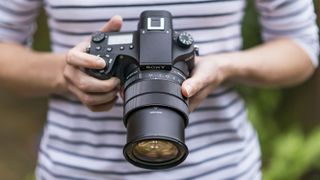
10. Sony Cyber-shot RX10 IV
✅ You like to zoom in: With a sharp, fast 24-600mm, the RX100 IV offers fantastic versatility to capture a range of subjects on your travels. ✅ You want an all-in-one option: The RX100 IV is a high-end bridge camera with a big zoom range, high-quality EVF and capable AF system.
❌ You want a small camera: While it ticks most of the boxes for travel photography, the RX100 IV is bigger and heavier than many rivals. ❌ You like a slick touchscreen: Its tilting touchscreen is a useful addition, but you can’t use it to navigate menus or swipe through images.
In terms of offering something for everybody, the RX10 IV ticks a lot of boxes. It's like having a bag full of lenses, but with the benefit of never having to change them. There's a very long zoom (going all the way from 24-600mm), while the maximum aperture is pretty wide throughout the lens.
The RX10 IV's sensor might not be as a large as the ones you'll find on a mirrorless camera or DSLR, but Sony's 20.1MP one-inch chip proved itself to be very capable in our tests. Noise was well-controlled, and you'd have no problem making an A3 print from one of its files (particularly if you shoot at under ISO 800).
You also get 24fps shooting, cracking 4K video quality and handling to rival a DSLR. The major downside? The high price – if your budget is tighter, don't forget about this camera's predecessor, the RX10 III .
Read our in-depth Sony Cyber-shot RX10 IV review
How to choose the best travel camera for you
Picking the right travel camera can be trickier than finding affordable flights. You’ll want a shooting tool that’s compact enough to conveniently carry on your travels, yet still capable of capturing sharp stills and stable video of your jet-setting adventures.
There are a few key things to keep in mind when choosing your ideal travel camera. Among the most important is size. While pocketable compacts offer convenience, the quality of your travel snaps will be boosted by the bigger sensors of larger mirrorless models.
If your adventures are likely to involve going off the beaten track, it’s worth considering a travel camera with rugged credentials. This could be one of the best action cameras , such as the GoPro Hero 11 Black – perfect if you plan to shoot quick, slick travel clips. Or it could be a sturdy compact such as the Olympic TG-6, which is one of the best waterproof cameras .
It’s also worth thinking about what subjects you might be shooting on your trip. A long zoom range will be handy on safari , while something light and fast is better for capturing street snaps on a city break. Travel compacts, such as the Panasonic Lumix ZS200 / TZ200, usually use a zoom lens to cover a range of shooting scenarios. Interchangeable lens cameras like the Fujifilm X-T30 II can similarly offer the flexibility of both worlds, but only if you’re happy to travel with extra barrels in your backpack.
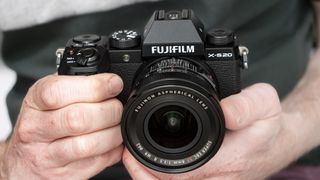
Which type of camera is best for traveling?
Travel cameras come in a range of shapes and sizes. Which style is best for you will depend on how you like to travel, what you like to shoot and how much gear you’re willing to cart around.
Travel zoom compacts such as the Panasonic Lumix ZS200 / TZ200 are pocket friendly, yet offer a broad scope for capturing a range of subjects. Thanks to generous zoom ranges, they give you the opportunity to get close to the action, or to shoot wide. The trade-off for having all of this flexibility in a compact body is generally a smaller sensor, which is less useful for shooting in low light.
If you’d like neat proportions but don’t need the versatility of a zoom lens, premium compact cameras could be worth considering. Models such as the Fujifilm X100V sacrifice zoom range in favour of larger sensors that are better at gathering light – usually a one-inch or, in the case of the X100V, an APS-C chip.
Between compacts and mirrorless cameras is where you’ll find bridge cameras. Bulkier than a standard compact, they offer more comfortable handling and a large zoom range, but without the need to carry different lenses. New bridge cameras are increasingly rare, but the Sony Cyber-shot RX10 IV remains a great example.
If you don’t mind traveling with multiple lenses, many of the best mirrorless cameras have been specifically designed with travel in mind. In the case of models like the OM System OM-5 , that means a portable, weatherproof body, useful image stabilization for shooting on the move, plus a versatile Micro Four Thirds sensor that balances size and performance. And with lots of different lenses to choose from, you can pack different optics depending on the type of trip you’re taking – or opt for a reliable all-round option.
Is a DSLR or mirrorless camera better for travel photography?
When it comes to travel photography, most photographers look for a balance between portability and performance. If this is the combination you’re after, mirrorless cameras will almost aways have the edge over their DSLR rivals. Mirrorless models are generally smaller and lighter than DSLRs, making them easier to wield and travel with.
Despite their more compact proportions, many of the best mirrorless travel cameras can also match or outclass DSLR cameras when it comes to image quality, as well as autofocus abilities and video features. This makes them versatile tools for shooting on the move, especially if you choose a model with in-body image stabilization for sharp handheld results. If you pick a mirrorless camera with an established lens mount system, you’ll also find no shortage of glass to pack for your trip.
That said, there are reasons why you might still want to consider a DSLR camera for travel. Some photographers prefer the chunkier ergonomic grip for which the DSLR format is famous, especially if they plan on shooting for hours on end. The best DSLR cameras also offer superlative battery life, which can be useful if your travel plans include days away from electricity.
Budget might also be a factor, especially if you’re concerned about taking an expensive camera on your travels. Older DSLR cameras can offer great value, as can second-hand mirrorless models. It’s also worth looking at our round-up of the best cheap cameras , which includes some options that are a good fit for travel photography.
- Read our in-depth DSLR vs Mirrorless comparison
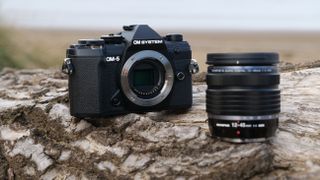
How we test travel cameras
Buying a camera these days is a big investment, and travel cameras are no different – so every camera in this guide has been tested extensively by us. For travel cameras in particular, real-world tests are the most revealing way to understand a camera's performance and character, so we focus heavily on those, along with standardized tests for factors like ISO performance.
To start with, we look at the camera's design, handling and controls to get a sense of how suitable it is for life on the road, and any particular features that might be particularly useful for globe-trotters. When we take it out on a shoot, we'll use it both handheld and on a tripod to get a sense of where its strengths lie, and test its startup speed.
When it comes to performance, we use a formatted SD card and shoot in both raw and JPEG (if available). For burst shooting tests, we dial in our regular test settings (1/250 sec, ISO 200, continuous AF) and shoot a series of frames in front of a stopwatch to see if it lives up to its claimed speeds. We'll also look at how quickly the buffers clears and repeat the test for both raw and JPEG files.

In various lighting conditions, we also test the camera's different autofocus modes (including Face and Eye AF) in single point, area and continuous modes. We also shoot a range of photos of different styles (portrait, landscape, low light, macro/close-up) in raw and JPEG to get a sense of metering and its sensor's ability to handle noise and resolve fine detail.
If the camera's raw files are supported by Adobe Camera Raw, we'll also process some test images to see how we can push areas like shadow recovery. And we'll also test its ISO performance across the whole range to get a sense of the levels we'd be happy to push the camera to.
Battery life is tested in a real-world fashion, as we use the camera over the course of the day with the screen set to the default settings. Once the battery has reached zero, we'll then count the number of shots to see how it compares to the camera's CIPA rating. Finally, we test the camera's video skills by shooting some test footage at different frame-rates and resolutions, along with its companion app.
We then take everything we've learned about the camera and factor in its price to get a sense of the value-for-money it offers, before reaching our final verdict.
Get daily insight, inspiration and deals in your inbox
Get the hottest deals available in your inbox plus news, reviews, opinion, analysis and more from the TechRadar team.

Tim is the Cameras editor at TechRadar. He has enjoyed more than 15 years in the photo video industry with most of those in the world of tech journalism. During his time as Deputy Technical Editor with Amateur Photographer, as a freelancer and consequently editor at Tech Radar, Tim has developed a deeply technical knowledge and practical experience with cameras, educating others through news, reviews and features. He’s also worked in video production for Studio 44 with clients including Canon, and volunteers his spare time to consult a non-profit, diverse stories team based in Nairobi. Tim is curious, a keen creative, avid footballer and runner, and moderate flat white drinker who has lived in Kenya and believes we have much to enjoy and learn from each other.
- Chris Rowlands
- Mark Wilson Senior news editor
'AI will be a watershed moment and the great mega-trend of our generation' – photo contest experts tell us how they’re dealing with a tidal wave of AI-generated images
DJI drones could be banned in the US soon – here's what you need to know
Turtle Beach VelocityOne flightstick review - a compact, feature-packed flight sim controller, for less
Most Popular
- 2 Sony’s wearable air conditioner is the first step towards a real Dune stillsuit
- 3 NYT Strands today — hints, answers and spangram for Friday, April 26 (game #54)
- 4 I listened to Taylor Swift’s new songs on a 22-year-old Sony Walkman and it was a tortured experience I won’t try again
- 5 The obscure little PC that wanted to be a big NAS — super compact Maiyunda M1 doesn't cost that much, offers up to 40TB SSD storage, runs Windows and has 4 Gigabit Ethernet ports
- 2 Netflix movie of the day: Living is a feel-good Oscar nominee with 96% on Rotten Tomatoes
- 3 Researchers produce thinnest sheet of metal ever using a 100-year old Japanese technique — Goldene could pave way for super catalysts, ultra high density optical storage and much more
- 4 The obscure little PC that wanted to be a big NAS — super compact Maiyunda M1 doesn't cost that much, offers up to 40TB SSD storage, runs Windows and has 4 Gigabit Ethernet ports
- 5 Over a billion users could be at risk from keyboard logging app security flaw
The 12 Best Cameras for Travel Photography in 2024
A Post By: Matt Murray

This article was updated in February 2024 with contributions from Matt Murray and Jaymes Dempsey.
Need a top-notch travel camera so you can capture gorgeous photos of your next adventure? You’ve come to the right place.
Picking the best camera for travel photography can be hard work, considering the array of options on the market. Fortunately, I’ve spent decades traveling with dozens of cameras (film, instant, and digital), and below, I share my top 12 favorite models.
Note that I’ve offered a variety of choices, including models for beginners, professionals, and everyone in between – as well as cameras at every price point, from affordable point-and-shoot models all the way up to pro-level full-frame cameras. (In other words: No matter your requirements, we’ve got you covered!)
So if you’re ready to find the perfect camera, then let’s dive right in, starting with our top choice:
1. Sony a7C II

The original a7C was an excellent travel photography camera in its own right, thanks to the full-frame sensor and compact body – but the Sony a7C II , which debuted in the fall of 2023, is even better than its predecessor.
Sony’s latest full-frame offering is an all-around great camera, but travel photographers in particular will appreciate the extremely compact body combined with the impressive 33 MP full-frame sensor. Expect outstanding low-light capabilities for interior architecture and nighttime street shots as well as amazing autofocus performance when capturing travel portraits and action scenes. Plus, if you like to do a mix of photo and video shooting while exploring distant countries, you’ll love the beautiful 4K/60p video.
The in-body image stabilization ensures sharper handheld shots when working at slower shutter speeds, such as when shooting at restaurants and in churches (where tripod use is often restricted), and the camera also includes access to a tremendous line of travel photography lenses. My biggest gripe is the lower-resolution electronic viewfinder, which is on par with the old a7C as well as the Sony a7 III. But it’s still highly usable, and for serious travel shooters looking for top-notch image quality in a compact body, the a7C II is a stellar pick.
- Ultra-compact body
- Excellent 33 MP full-frame sensor
- Amazing low-light performance
- In-body image stabilization
- 2.36M-dot electronic viewfinder
- Somewhat pricey
2. Nikon Z fc

Looking for solid image quality in a portable, easy-to-use camera? Then check out the Nikon Z fc , which offers plenty of handy features, not to mention a retro-style, streamlined camera body.
The Z fc boasts a high-quality APS-C sensor , so you’ll have no problem capturing beautiful images of landscapes, cities, and any other subject you might encounter on your travels – yet the camera is relatively small and inconspicuous, so you won’t need to worry when photographing in busy areas or carrying the camera for long hours on buses, planes, or trains.
The film-type dials on the top of the camera promise a tactile shooting experience, and the articulating screen makes it easy to capture photos and videos of all kinds. Speaking of video, the Z fc does offer 4K recording, so if you also like to vlog or shoot cinema-type footage while traveling, you’ll be thoroughly impressed by the results.
And did I mention that you can grab the Z fc for under $1000? In other words, it’s a great option for travel photographers on a budget!
- Great image quality
- Reasonable price
- Beautiful design
- Retro style doesn’t suit all photographers
- Not as small as point-and-shoot options
3. Fujifilm X-T30 II

The X-T30 II is the latest model in Fujifilm’s midrange APS-C lineup, which successfully packs high-level features into smaller, lighter bodies. The X-T30 II boasts a capable 26-megapixel APS-C sensor (so you won’t struggle to capture printable images even in low-light scenarios), and it can shoot up to a whopping 30 frames per second (so you don’t need to worry about capturing those split-second moments on your travels). Like other Fujifilm cameras, the X-T30 II has face- and eye-detection autofocus, which is a big help for travel portraits and street shots . It also includes Fujifilm’s renowned film simulations .
When you buy into the Fujifilm system, you’ll gain access to dozens of great travel photography lenses ; in fact, the hard part is actually deciding which is right for you! My personal go-to lens for travel photography is the XF 18-55mm f/2.8-4 lens . While the X-T30 II doesn’t include in-body image stabilization, the technology is included in several of Fujifilm’s best travel lenses, so as long as you choose your lenses carefully, you won’t have problems handholding indoors or at night.
The X-T30 II offers a uniquely tactile shooting experience thanks to a shutter speed and exposure compensation dial, so if you’re a fan of film-camera ergonomics, this camera will make you feel especially at home. It offers surprisingly great value, too; at the time of writing, you’ll pay just $900 for the camera body (though you will need to buy a lens separately).
- Excellent lens lineup from the affordable XC lenses to enthusiast and professional XF lenses
- Stunning image quality with a range of JPEG film simulations
- Many amazing features
- Not as robust as Fujifilm’s higher-end models
4. Sony RX100 VII

Sony keeps improving the RX100 line, and the RX100 VII is its best model yet. It may have a smaller sensor than the Nikon Z fc featured above, but the RX100 VII is still a powerful performer. It boasts impressive autofocus, a flip-screen for vlogging and selfies, a mic socket, and a huge zoom range (equivalent to 24-200mm in full-frame terms).
The RX100 VII also borrows tech from Sony’s flagship models, which is why it can shoot up to 20 frames per second with no viewfinder blackout.
If you’re a watersports fan, there’s an added bonus: the RX100 has underwater housing available for surfing, diving, and snorkeling photos. At around $1300 USD, the RX100 VII is on the pricier side, but for serious travel photographers, it’s an excellent choice.
- Impressive autofocus
- Handy zoom range
- Up to 20 frames-per-second shooting
- Expensive for a compact camera
- Smaller 1-inch sensor
5. Olympus OM-D E-M10 Mark IV

Olympus may not be the world’s most popular camera brand, but that’s okay – especially if the company continues to develop outstanding models like the OM-D E-M10 Mark IV .
In many ways, the E-M10 Mark IV is an ideal travel photography camera. It offers amazing image quality – thanks to a 20 MP Four-Thirds sensor – yet it’s remarkably compact, so you can literally slip it in your pocket or handbag while traveling and only pull it out as needed. And the lenses are designed with portability in mind, too; a perfect choice for a lightweight setup is the 14-42mm EZ lens , though if you want more range, take a look at the 14-150mm .
Other features include a tilting 3-inch screen (so you can capture low-angle shots as desired), a 2.36M-dot electronic viewfinder (for a DSLR-like shooting experience), and in-body image stabilization (so you can work handheld even in low-light travel scenarios). Plus, the price is incredible; you can grab the E-M10 Mark IV for just $700, and if you want to add a capable kit lens, you’ll pay just $799. How’s that for a bargain travel camera?
- Compact and light
- Excellent image quality
- Good range of lenses
- Smaller sensor
- Lower-resolution EVF
6. Sony a7 IV

If you’re an advanced travel photographer in need of a do-everything camera, consider the Sony a7 IV , a full-frame, pro-level model that combines incredible autofocusing, beautiful image quality, and capable video into one reasonably priced package.
The a7 IV isn’t designed specifically for travel, so while it’s not big , it’s not especially compact, either. But you can comfortably travel with it in a backpack or even around your neck, and for serious shooters, the bevy of top-notch features will make up for the extra bulk.
The a7 IV’s incredible sensor and in-body image stabilization allow you to capture sharp handheld photos indoors (e.g., at museums and churches) and at night. And thanks to the 3.68M-dot electronic viewfinder, you can expect a lifelike shooting experience (along with other cool perks like exposure simulation), while the fully articulating screen makes it easy to create unique low- and high-angle shots of popular landmarks. Finally, the 4K/60p recording capabilities make the camera a top option for hybrid shooters; you can vlog, shoot video, and capture beautiful images all on the same day.
- Astonishingly good image quality
- Great video features
- Fully articulating screen
- Beautiful EVF
- Pricey compared to other models on this list
- Larger than other options
7. Nikon D5600

This next model needs no introduction; Nikon SLRs were favored by many famous travel photographers in the 1980s and beyond. The D5600 is the latest camera in Nikon’s midrange APS-C series, and it’s a perfect choice for beginners and enthusiast photographers alike.
The D5600 boasts Nikon’s excellent ergonomics, and the camera feels reassuringly comfortable in your hand, although it’s not as compact as other models on this list. Image quality is superb and low-light shooting is very impressive. Plus, you get a fully articulating screen (for selfies, vlogging, and tough compositions) along with excellent battery life.
These days, you can purchase a new D5600 for a great price, and it’s even cheaper if you buy it used – so if you’re in need of a reasonably high-level camera with a bargain price tag, it’s definitely a model worth checking out.
- Good ergonomics and handling
- Good battery life
- No 4K video
- On the larger side
8. Ricoh GR III

Ricoh has been producing super-compact GR cameras since the film heydays of the late 1990s. Those classic point-and-shoot GR models were known for their sharp wide-angle lenses and minimalist controls, and the digital line of GR cameras is no different.
The Ricoh GR III is a perfect mix of portability, optical quality, and impressive features. You get a fixed 28mm full-frame equivalent f/2.8 lens capable of producing great images, and four-stop shake reduction that ensures sharp files even in challenging light.
The GR III is often compared to another camera in this list, the Fujifilm X100V, but I’d encourage you to grab the Ricoh if you prefer a smaller camera with a wider angle of view.
- Truly pocketable
- Four-stop shake reduction
- Fantastic wide-angle lens
- The straight-out-of-camera JPEGs are not as good as Fujifilm’s
- Battery life could be better
9. Sony a6700

It’s easy to see why Sony has grabbed a big share of the mirrorless camera market in recent years: The company produces an impressive range of cameras that appeal to professionals and enthusiasts alike.
The Sony a6700 may not have a full-frame sensor like some of its stablemates, but its compact body and impressive specs make it a strong candidate for the best enthusiast travel photography camera on the market. The a6700 features a 26-megapixel APS-C sensor, outstanding autofocusing for photography and video, and five-axis optical image stabilization. The 180-degree flip screen also makes the a6700 handy for vlogging and selfies.
And speaking of vlogging and video: While the a6700’s predecessor, the a6600, only offered 4K/30p, the a6700 now offers 4K/60p and can even capture 4K/120p video (albeit with a heavy crop) for those epic slow-motion travel clips!
I do think the layout and controls could be improved, but it’s one of the only drawbacks to an otherwise excellent product. Quick note: If you like the look of the a6700 but you’re on a tighter budget, also consider the a6400 . It may not be as impressive as the a6700, but it offers excellent value for money.
- Small and light
- Great lens lineup
- Good image quality
- Handling and ergonomics could be improved
10. Olympus Tough TG-6

Going on an extreme adventure? The Olympus Tough TG-6 could be the best travel camera for you. This compact point-and-shoot model can withstand a lot of punishment, thanks to its shockproof, dustproof, and crushproof body.
The TG-6 can also work in temperatures as low as 14 degrees Fahrenheit (-10 degrees Celsius), and it’s fogproof, even during sudden changes in temperature. As I found out on a recent trip to Indonesia – where I was frequently moving from an air-conditioned hotel room to the outside heat and humidity – a foggy camera can be a real inconvenience.
For snorkeling and diving fans, the Tough TG-6 will love being underwater almost as much as you. It’s waterproof up to 49 ft (15 m), and it boasts several nifty underwater modes, including a microscope mode that can focus on objects 0.39 in (1 cm) away.
- Super tough
- Only 12 megapixels
- More suited to adventurers than enthusiast photographers
11. Fujifilm X100V

I’m a huge fan of the Fujifilm X100 series cameras (I’ve owned three of the five models released over the last decade). In fact, many photographers loyal to other brands buy an X100-series camera as their “take-everywhere” body.
The X100V is small and light, yet it boasts an incredible 35mm f/2 fixed lens. Other useful features include its leaf shutter (good for photographing in quieter places like museums and churches ) as well as a built-in neutral density filter (perfect for beautiful long-exposure landscapes and wide-aperture shots in bright light). And of course, you get a range of stunning JPEG film simulations that are ready to go as soon as you turn on the camera.
While the entire X100 series is great, note that the latest model, the X100V, does have an important improvement over its predecessors: it’s weather-resistant. This makes it an excellent choice for photographers who shoot in sand, rain, snow, and more.
- Excellent lens
- Built-in ND filter
- Fujifilm JPEGs
- Weather-resistant
- No in-body image stabilization
- More expensive than its predecessors
12. Canon PowerShot G1 X Mark III

The Canon PowerShot G1 X Mark III is the third iteration of a popular point-and-shoot series from Canon. It’s sleek, it’s stylish, and it almost looks like a mini DSLR.
Many compact cameras have a tiny sensor – one inch or smaller – but the G1 X Mark III is an exception; it boasts an impressive APS-C sensor, which is one of the biggest sensors offered in such a portable camera. It also features a handy zoom range of 24-72mm and an optical stabilizer for shooting in low light, so you’ll be ready to handle any travel photo scenario you encounter.
The G1 X Mark III is easy to use and produces images with high clarity and outstanding colors. The only downside is the price tag: At around $1000 USD, it may be on the high end for some enthusiast photographers, but for intermediate shooters, it’s certainly worth the extra cash.
- Large APS-C sensor
- Compact size
- Articulating screen
- Premium price
What is the best camera for travel photography?
Choosing the perfect travel photography camera is a difficult task, one that depends on many factors. Before you hit that “Buy” button, try to determine what you value most, then evaluate the different cameras I’ve discussed based on those criteria.
So what is the best camera for travel photography? Only you can answer that question! Read my list carefully, think about what matters to you – and, if you’re still struggling, go to a camera shop, where you can talk to the staff and hold each camera in your hands.
Then, when you’re ready, grab a camera and hit the road!
Now over to you:
What travel photography camera do you plan to buy? Share your thoughts in the comments below!

Read more from our Cameras & Equipment category
Matt Murray is a travel, portrait and stock photographer from Brisbane, Australia. Matt publishes Fujifilm X-series body reviews, lens reviews and photo galleries on his website Matt Loves Fuji . Matt also hosts an analogue photography podcast Matt Loves Cameras featuring reviews of classic film and instant cameras.

- Guaranteed for 2 full months
- Pay by PayPal or Credit Card
- Instant Digital Download

- All our best articles for the week
- Fun photographic challenges
- Special offers and discounts

- Student Successes
- My Learning
6 Best Mirrorless Cameras for Travel in 2024

You can also select your interests for free access to our premium training:
Whether you’re a roving reporter or a sun-seeker, the best mirrorless camera for travel helps you capture memorable images on the go.
It’s best if you have a camera that’s compact, lightweight, and easy to carry. But you don’t want to compromise on photo or video performance. That’s why the best travel cameras are portable and powerful!
The Nikon Z50 is our choice as the best mirrorless camera for travel. It’s a compact APS-C mirrorless camera with excellent features for photography and videography. It’s beginner-friendly yet high-performance. And you can select the best travel glass from Nikon’s Z-range of lenses.
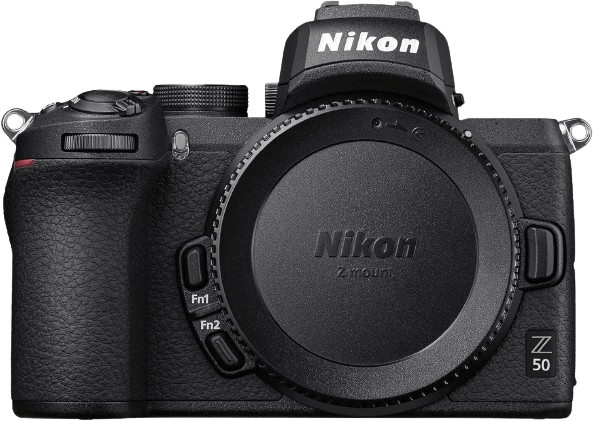
If you buy a product through one of our referral links we will earn a commission (without costing you anything). Prices last updated on .
As an Amazon Associate, I earn from qualifying purchases. Product prices and availability are accurate as of the date/time indicated and are subject to change. Any price and availability information displayed on Amazon at the time of purchase will apply to the purchase of this product.
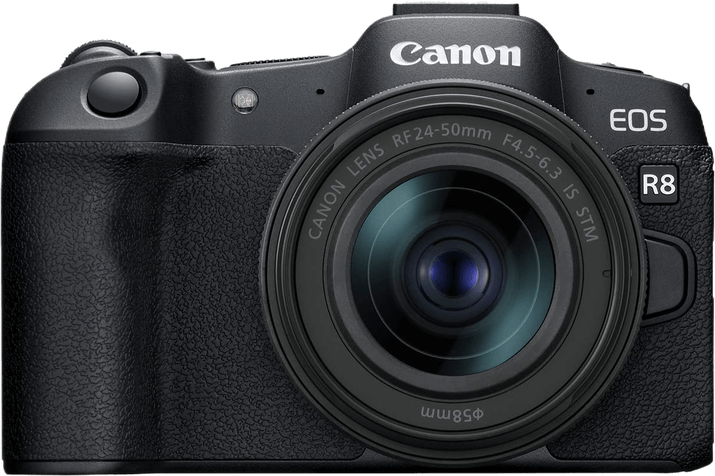

What Is the Best Mirrorless Camera for Travel?
The best mirrorless camera for travel should be portable but still produce eye-catching media. This is why the Nikon Z50 , Canon EOS R8 , and Fujifilm X100V are our top three recommendations.
Traveling is always a huge source of inspiration. And to capture the wondrous sights in all their glory, you need a reliable camera. For this reason, mirrorless cameras are perfect travel companions.
They are lighter and more compact than DSLR cameras. And they have more well-rounded features. As we’ll see in our list, many mirrorless models are complete hybrid cameras . This means they produce high-quality photographs and videos.
You also have a wider selection of mirrorless cameras available than DSLRs. Manufacturers are going full steam ahead with their mirrorless lines while phasing out DSLRs . Now’s the time to invest in a mirrorless travel camera!
Here’s a quick rundown of all the best cameras for travel with some pro points. We look at each camera in more detail in the section after. And we have an FAQ section at the end if you need more information about travel cameras and gear .
- High-quality images with 20.9 MP sensor
- Compact and lightweight, perfect for travel
- Excellent low-light performance with high ISO
- "Selfie" flip-down LCD touchscreen for vlogging
- Ease of sharing with built-in Wi-Fi and Bluetooth
- Exceptional 24.2 MP full-frame sensor
- Compact design with advanced functionality
- Versatile 24–50mm zoom lens option
- Built-in OLED EVF, vari-angle LCD touchscreen
- Outstanding 4K recording with oversampled 6K
- 26.1 MP sensor for superior image quality
- Advanced Hybrid Viewfinder to capture the perfect shot
- Tilting LCD touchscreen for intuitive controls, framing
- Weather-sealing option for tough conditions
- Stunning 4K video and super slow-motion footage
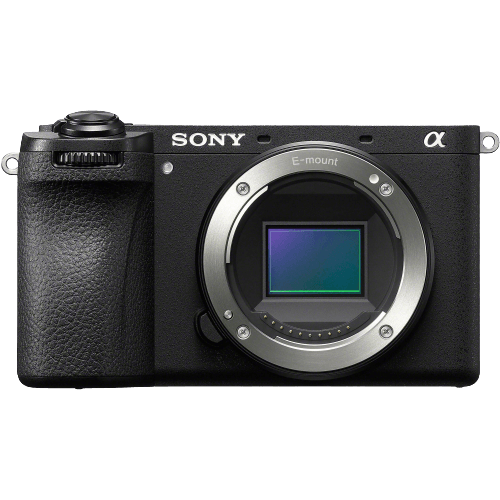
- 4K/60p 6K oversampled recording
- Pack a powerful 26 MP APS-C sensor
- Superior image quality with BIONZ XR processing
- AI and Real-Rime Recognition for precision tracking
- Lightweight, perfect for creative adventures

- High-quality images with 20 MP 4/3 Live MOS sensor
- Compact, lightweight for easy portability
- Provides 1,053 high-precision focus points
- Advanced high-res, ND, focus-stacking, HDR features
- Dustproof, splashproof, freezeproof

- Incredible 40 MP X-Trans 5 HR sensor
- Pixel-Shift Multi-Shot mode for 160 MP files
- Fast, action-freezing shutter speeds up to 1/180,000 s
- 7-stop in-body image stabilization
- Records up to 6.2K in 4:2:2 10-bit color internally
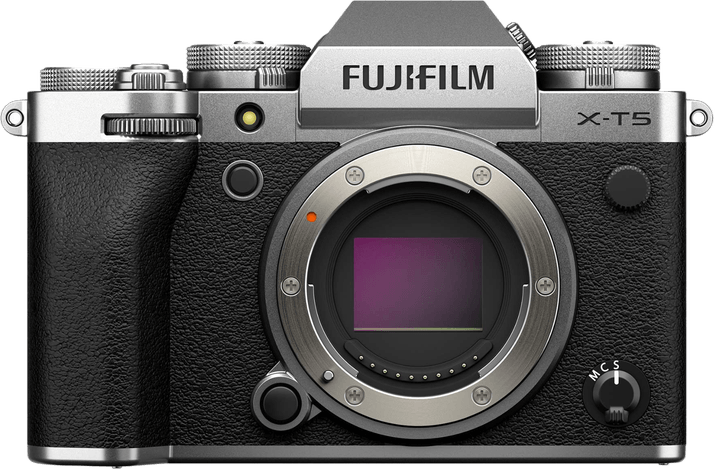
6 Best Mirrorless Cameras for Travel
Now, we look at all the best mirrorless cameras for travel in more detail. We’ve included a wide range of mirrorless cameras so everyone can find the best camera for them.
We have beginner-friendly APS-C cameras and full-frame models for more experienced travelers. It’s a short but optimized list of the best cameras for travel.
1. Nikon Z50
The Nikon Z50 takes the top spot as the best mirrorless camera for travel. It won’t be the right camera for every travel photographer. But its beginner-friendly design and feature set give it broad appeal. Even the most cynical users will be impressed by its results.
Its lightweight and compact body make it an easy fit for any travel camera backpack . Its decent level of environmental sealing protects the camera in dry or humid conditions. And it can even withstand light rain showers.
Nikon’s DX-format (APS-C) sensor produces lovely 20.9 MP images. While that resolution isn’t record-breaking, the image quality is fantastic. The images are bright and vibrant. And you get a low level of digital noise when working at higher ISO settings.
You can also enhance your travel photos on the go using the in-camera effects and filters. You don’t need a computer or photo editing software. It’s easy to add the filters in the camera’s interface and then send them to your smartphone using Wi-Fi connectivity.
With 4K video features, the Z50 is also a great camera for travel vloggers . It offers a frame rate of 30 fps (frames per second) at full resolution. And the flip-down screen makes it easy to record yourself. Webcam functionality lets you live stream or video call loved ones back home.
Face- and eye-detection autofocus (AF) is ideal for capturing environmental portraits as you pass through exotic places. The AF also tracks moving subjects and works well in low-light situations.
As you can see, this entry-level Nikon has plenty to offer the enthusiastic traveler. It’s also an affordable mirrorless camera . You can buy a brand new Z50 with a versatile kit lens .
2. Canon EOS R8
We’re confident in promoting the Canon EOS R8 as the best full-frame camera for travel. First, it’s one of the most compact and lightweight cameras . Second, it’s weather-sealed and rugged. Third, it has incredible features for photography and video.
You’ll find plenty of full-frame cameras with higher resolutions than 24.2 MP. But the R8 still captures the world around it with accuracy and vitality. The larger pixel size gives you a better dynamic range, meaning you get more detail from bright and dark areas.
A wide ISO range gives you plenty of flexibility with your exposure settings. Low-light performance is excellent, with very little noise. And you have a 50 ISO range for sunny days, helping you maximize picture quality.
This Canon camera is also a great option for traveling videographers. Its 4K video footage is sharp and crystal-clear, and its 60 fps frame rate at full resolution enhances the footage further. The 4K video is uncropped and has no 30-minute time limit.
When working in Full HD, you have faster frame rates, including a 180 fps mode for super-smooth slow-motion videos. You also have ports for external sound devices, like microphones. And the flexible vari-angle touchscreen helps you film from any angle.
The 100% AF frame coverage gives you incredible accuracy when focusing. It can detect heads, faces, and eyes, even working with cats, dogs, and other animals. And the advanced subject tracking helps you capture those more hectic moments.
The lack of image stabilization is disappointing. And there’s only one memory card slot. That means you’ll have to carry plenty of spare SD cards in a secure memory card case.
The EOS R8 is brilliantly versatile, delivering for photographers and videographers. It’s the perfect camera for the globe-trotting multimedia producer. And it’s the best Canon mirrorless camera for travel.
You need a slightly bigger budget to buy the R8 instead of the Z50 . But it’s worth it if you want a full-frame mirrorless camera that does almost everything ! There is also a versatile 16-50mm lens kit version you can buy.
3. Fujifilm X100V
There are many different types and styles of travel photography. Travel street photography is one of the most popular. If that’s how you like to shoot when traveling, we recommend the Fujifilm X100V .
Okay, the X100V isn’t exactly a mirrorless camera. Due to its fixed lens and rangefinder design, it’s more of a compact camera. But it’s packed with some of Fujifilm’s best mirrorless technology. And it’s such a great travel camera that we can’t leave it off our list.
The first thing you might notice is the stylish retro design. There’s no denying it looks fabulous. And that fixed lens has a 23mm focal length, giving you a lovely wide-angle field of view. It also has an f/2 max aperture, so the low-light performance is good too.
Unlike your standard compact camera, this Fujifilm camera packs a powerful 26.1 MP APS-C sensor. A quad-core X-Processor 4 processing engine backs this, and together, they make a formidable team.
The image quality is truly breathtaking. It beats many other interchangeable-lens cameras in this category.
Fujifilm’s unique film simulation modes give images a retro look that matches the camera’s design. These modes have special filters for some of Fujifilm’s most famous film stocks. Thus, you get the classic film aesthetic without the hassle and expense of using an analog camera.
Analog cameras can’t shoot sharp 4K video, but the Fujifilm X100V can. It even records 10-bit 4:2:2 color via the HTML port. And you have slow-motion frame rates in Full HD quality. You can even apply the film simulation effects to your high-res video footage.
Manual on-body controls round out the retro camera style, giving you a more traditional, hands-on experience. The camera is a bit heavy for its size, weighing 1.05 lb (478 g). But the build quality is exceptional, and the weather sealing gives you peace of mind when shooting outdoors.
The Fujifilm X100V is proving evermore popular with street and travel photographers. Its weight is a problem if you like traveling light. And its price means you must take extra care when you travel through dangerous countries. But those who buy one rarely regret it.
4. Sony a6700
The a6700 is the perfect travel camera if you’re a filmmaker with a severe case of wanderlust. It has all the camera features for vlogging and streaming. Its video quality is good enough for professional travel videographers. But it’s pretty good for still photography, too.
We’ve grown accustomed to mirrorless cameras with 4K video . But not all 4K video is equal. The Sony a6700 produces 4K video superior to most of its rivals despite its compact size and light weight. The video quality is sharp and clear.
The video is also uncropped and has no time limit other than battery power. It uses 10-bit 4:2:2 color sampling, enhancing the quality even further. It even gives you faster frame rates, like a 120 fps option at full resolution. That’s spectacular 4K slow-motion footage!
You can leave your camera gimbal at home when traveling with this Sony mirrorless . It has five-axis image stabilization and gyroscopic video stabilization. So you can shoot hand-held without fear of camera shake ruining the shot.
A 26 MP resolution sensor means you can also snap gorgeous travel shots. The expanded ISO range gives you excellent flexibility in variable conditions. And there is very little noise at the top end. There’s even a 50 ISO setting for those bright sunny days.
A 759-focus-point AF system is impressive for an APS-C mirrorless. The speed and accuracy are outstanding. And the subject detection and tracking work well in low-light situations. Face- and eye-detection help you snap portraits of the people you meet on your travels.
The battery life is excellent, even when shooting 4K videos. It’s compatible with fast UHS-II SD cards, which is another bonus for videographers. The weather-sealing makes it a durable camera for adventurous media makers .
The Sony a6700 is the definition of a hybrid camera. The videography and photography features are impressive by any standards. And the size and durability make it one of the best mirrorless cameras for travel.
5. Olympus OM System OM-5
The Olympus OM System OM-5 is compact, rugged, and packed with features. It might only have a small Micro Four Thirds camera sensor, but it holds its own compared to other mirrorless cameras.
It’s a great camera for producing high-quality video content . And overall performance belies its compact size. A 20 MP resolution gives you lovely image quality with a true-to-life color rendition.
But if 20 MP isn’t enough, you can switch to the high-res shot mode for more. It creates a composite of several exposures, giving you stunning 50 MP images. You can even use this mode without a tripod!
You can also play with the camera’s built-in HDR mode. It works similarly, using several exposures for one image. The camera combines them, so you don’t need a computer or editing software. The same goes for the focus stacking mode.
Five-axis image stabilization gives you even better control over your exposure settings. And an advanced 1053-point AF system keeps everything in focus. It handles human faces well and tracks fast-moving subjects.
Recording 4K video at 30 fps means this OM System camera is a great choice for video makers. The rotating touchscreen helps you shoot vlogs or streams. And you can hook it up with external audio devices like microphones.
It even has a vertical video mode. This helps you produce social media-optimized video content.
USB charging is a big bonus on a travel camera. It means you can charge up whenever you find a cafe or social venue. You can also take a portable power bank to keep yourself topped up at all times.
The Olympus OM System OM-5 is a rugged mirrorless camera. It’s weather-sealed against rain and dust. And it even works in sub-zero temperatures, which is good news for Arctic explorers.
You can take this camera anywhere, and it will still work. This is exactly what you need from the best travel camera!
6. Fujifilm X-T5
The Fujifilm X-T5 is one of the most powerful APS-C mirrorless cameras ever. Its retro-style body design looks fabulous and is reasonably compact. This Fujifilm camera is ideal for travel photographers who want high-resolution images.
A 40.2 MP resolution would be impressive enough on a full-frame camera. But on an APS-C model, it’s truly breathtaking. The level of detail is intense, and the colors have a deep richness. This is perfect for capturing the sights as you navigate the globe.
The expanded high ISO setting of 51,200 is somewhat limited. But the camera’s low-light performance is generally strong . It also has a 64 ISO low setting, helping you get the most out of the 40.2 MP sensor.
You’re also not only limited to 40.2 MP. The X-T5 takes picture quality to a whole new level with the Pixel-Shift Multi-Shot mode. It creates a composite of several exposures using the image stabilization system. And the final result is a phenomenal 160 MP image.
The video specs are just as impressive, with 6.2K video resolution and 10-bit 4:2:2 color rendering. Video recording at 6.2K is limited to a 30 fps frame rate. But you can shoot at 60 fps in 4K, which is uncropped, and there’s no time limit. It also doubles as a high-resolution webcam.
In-body stabilization helps keep your images sharp and your videos shake-free. The advanced AF system also recognizes subjects like humans, animals, cars, and airplanes!
A strong 580-shot battery life keeps you snapping for hours on end. Using the Pixel-Shift mode or recording in 6.2K drains the battery quickly. But the USB charging capability lets you top up on the go.
The Fujifilm X-T5 might be overkill for some travel photographers. But if you want incredible high-resolution travel images, this camera delivers . It’s also weather-sealed, so it’s rugged enough for a life chasing horizons.
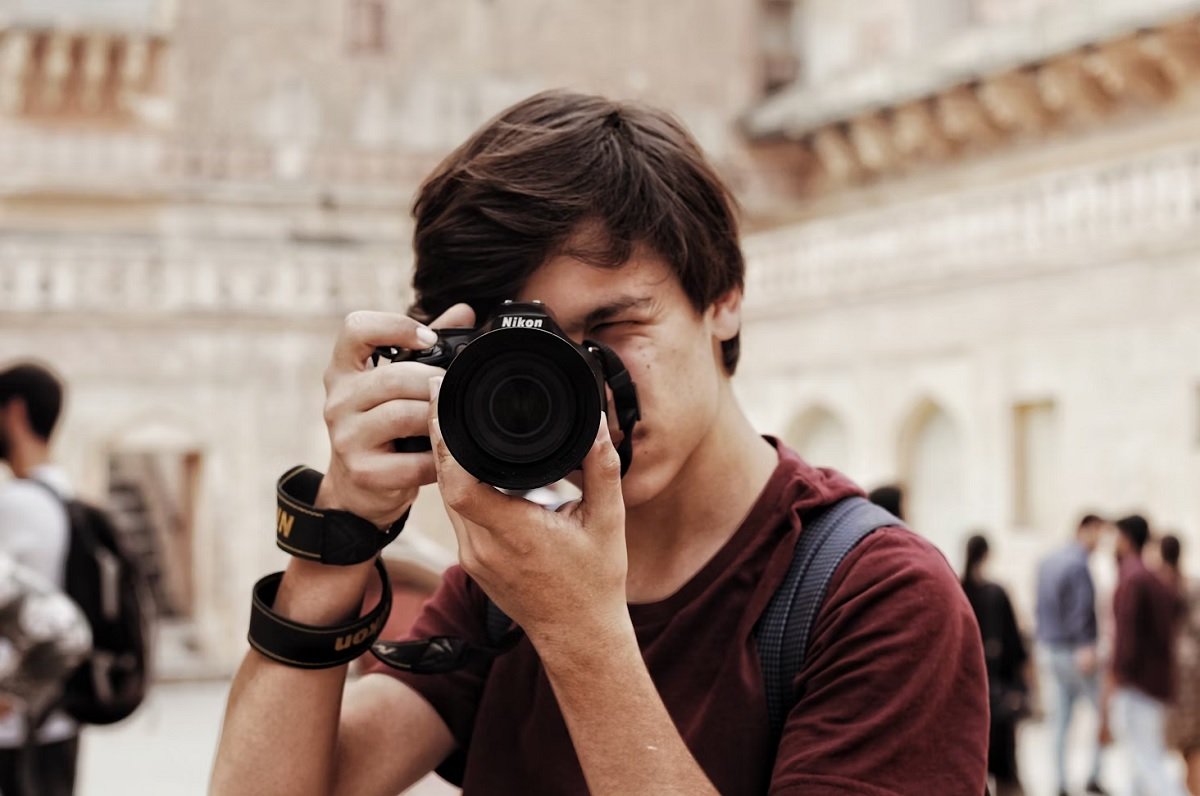
Best Cameras and Gear for Travel FAQs
One key to successful travel photography is getting the right gear. Of course, a good travel camera is the top priority. But that’s not the only equipment you need before you set off. Here is some info on other gear a travel photographer might need .
What’s the Best Compact Camera for Travel?
True compacts like the Panasonic Lumix ZS200 are brilliant travel companions. You can carry the ZS200 in your pocket—it’s that small! Yet it offers 20 MP images from a one-inch sensor and 4K video recording.
As a compact or point-and-shoot camera , it has a fixed lens. It’s a Leica lens, so the optical quality is excellent. And it gives you a 15x optical zoom for incredible versatility.
Vloggers and travel video makers might prefer the Sony ZV-1 II . With 4K video, a built-in microphone, and a rotating LCD screen, it has everything a vlogger needs. It even has special cinematic vlogging modes to help your content stand out.
We included the Fujifilm X100V on our list. It’s technically a compact camera. But it’s a bigger camera and has more features in common with a mirrorless camera.
If you want a smaller travel camera, see our full article for all the best compact cameras for travel . These pocket-sized machines are perfect for international travel. And they are all-in-one units, so there’s no need for extra gear like lenses.
What’s the Best Travel Camera Backpack?
If you’re traveling with a lot of high-end camera gear, we recommend the Manfrotto PRO Light Multiloader . We reviewed and scored 18 of the best camera backpacks , and the Multiloader came out on top.
This camera backpack has everything a photographer needs. It has plenty of storage space for your gear and extra pockets and pouches for other essentials. It has padded shoulder straps, a chest strap, and back padding for added comfort.
Exceptional build quality gives you peace of mind. It can endure a lot of tension and strain, so you know this backpack won’t fall apart on the first trip.
Every little detail has been thought through. Nothing is random or there for the sake of it. It’s one of the most well-designed camera backpacks a photographer can buy.
Read our in-depth review of the PRO Light Multiloader .
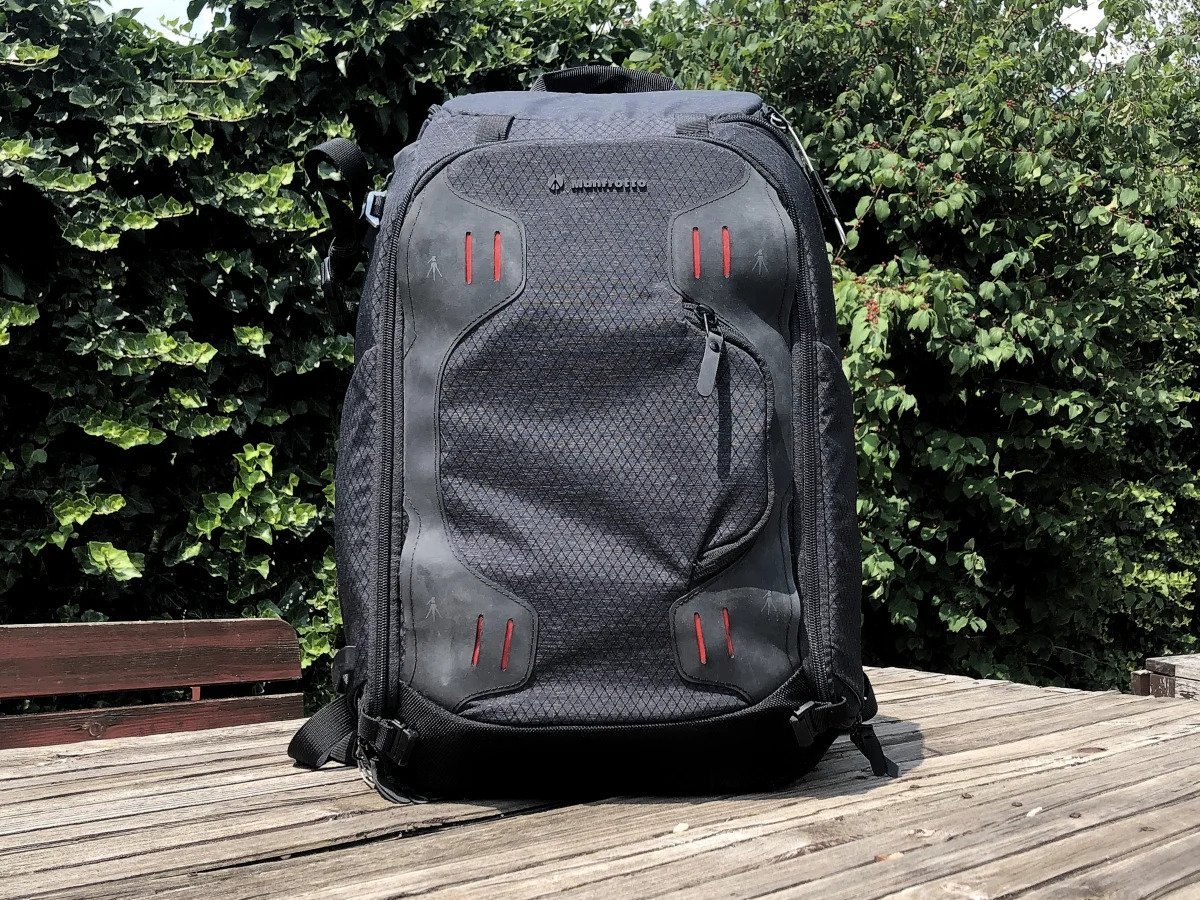
If you want something smaller for day trips, the Wandrd Duo Daypack is the perfect solution. Its overall quality is brilliant, and the durable materials make it a robust day bag. The outer nylon is waterproof, and rubber-covered zippers create a weather-sealed cocoon for gear.
It has a sleek and subtle design. It doesn’t look like a camera backpack, so you’re not making yourself an easy target for thieves in dangerous countries. But it also protects your camera equipment.
There’s also a unique “pop camera cube” for your mirrorless. And there are extra padded pockets for lenses and other photography accessories.
Check out our full Duo Daypack review for a detailed look at this fabulous camera backpack.
Every travel photographer needs a reliable camera backpack to carry their gear. It’s best not to travel with a mirrorless camera unless you have a spacious and protective camera backpack .
What’s the Best Travel Tripod?
The K&F Concept Lightweight Tripod is the perfect option for travelers. It weighs 2.4 lb (1.1 kg) with a folded size of 15.3 inches (39 cm), making it easy to attach to your camera backpack.
It’s also a strong tripod with a maximum load capacity of 17.6 lb (8 kg). That’s enough for any mirrorless cameras on our list, even if you’re using larger lenses.
Telescopic legs and a ball head give you excellent mounting flexibility. An Arca-Swiss-type quick-release plate makes mounting and dismounting the camera super easy. And it’s a versatile tripod you can take anywhere.
Traveling with lots of gear can be a pain. So you have to make sacrifices when choosing what to take with you. But even if you’re traveling light, you can still pack a handy travel tripod .
Conclusion: Best Mirrorless Camera for Travel
The best mirrorless camera for travel is compact and lightweight but still delivers eye-catching media. And all the cameras we’ve listed today hit that brief. Whether you’re shooting stills or video, a travel camera on our list will meet your needs.
The Nikon Z50 is our top mirrorless camera for travel. It has a compact camera body that’ll fit in any camera backpack. You get gorgeous photographs and video footage. And it has creative features for curious travel photographers.
More experienced photographers prefer the EOS R8 with its full-frame sensor and advanced features. Street-style travel photographers will love the X100V . Traveling videographers should consider the a6700 . There’s a mirrorless travel camera for everyone!
- Search Please fill out this field.
- Manage Your Subscription
- Give a Gift Subscription
- Sweepstakes
- Travel Products
- Tech Essentials
The 13 Best Compact Cameras of 2024
These are the top point-and-shoot options for epic travel photography.
:max_bytes(150000):strip_icc():format(webp)/JessicaMacdonald-348aae07a15a41db984f7b3091d7dc40.png)
In This Article
Jump to a Section
- Our top picks
- Tips for Buying
- Why Trust T + L
We independently evaluate all recommended products and services. If you click on links we provide, we may receive compensation. Learn more .
Travel + Leisure / David Hattan
What’s the best way to relive your favorite travel experiences over and over again? By taking epic photos that you can upload to social media or transform into a coffee table photo book, of course. Investing in a proper camera with a high-quality sensor and a decent number of megapixels will yield better, more printable results than your phone camera. But that doesn’t mean you need to lug a full-size DSLR and several interchangeable lenses around with you. You can get amazing results with a compact, or point-and-shoot, camera.
B&H Senior Technologist Mark Steinberg defines a compact camera as one that is “pocketable, with a minimum number of protrusions, that can be used one-handed.” They’re a great option for anyone who prioritizes easy portability or casual photographers who want good results without a steep learning curve. There are several different kinds of compact cameras, from the budget-friendly to the professional quality, and from digital to film and instant. We’ve researched them all to find the best options across several different categories.
Best Overall
Sony cyber-shot dsc-rx100 vii digital camera.
B&H Photo
It has a high-quality sensor, near-instant autofocus, and a lens that fulfills both wide-angle and telephoto functions.
It’s an expensive option for occasional use only.
Chosen by Mark Steinberg as the best overall compact camera, the Sony Cyber-shot DSC-RX100 VII is the seventh generation of a series that has been raising the bar for compacts since its inception. It’s simple to use for novice photographers, with enough manual settings to allow for experimentation and growth. The 1-inch Exmor RS BSI CMOS sensor is a major highlight, allowing for high sensitivity with a maximum resolution of 20.1 megapixels. With 8x optical zoom and 24–200mm equivalence, the ZEISS Vario-Sonnar T* lens gives you the freedom to switch between wide angle and telephoto photography for everything from landscapes to wildlife.
Whatever your subject, the 0.02-second hybrid autofocus ensures sharp images in both still and video mode. You can shoot single, continuous, burst, and self-timer images and set an upper or lower limit for your ISO up to a maximum of 12800 for impressive low-light results. If film is your passion, you’ll love the camera’s 20 frames-per-second, 4K video for its smooth movement and cinema-quality resolution. When it comes to viewing your footage, framing (and taking) your shot, or scrolling through the menu, use the 180-degree-flip LCD touchscreen. In high-glare conditions, you can also revert to the pop-up electronic viewfinder.
The RX100 VII offers Bluetooth and Wi-Fi connectivity for instant uploads to social media.
The Details: 20.1 megapixels | 1-inch Exmor RS BSI CMOS Sensor | 24–200mm lens | 3-inch LCD screen | 4K video | 4 x 2.3 x 1.7 inches | 10.7 ounces | Electronic viewfinder
Best Image Quality
Ricoh gr iiix digital camera.
This camera uses advanced lens and sensor technology to deliver undistorted, true-color images with a high level of sharpness across the entire frame.
If video is a priority, bear in mind that the GR IIIx shoots Full HD rather than 4K.
Suitable for all experience levels, the Ricoh GR IIIx Digital Camera was designed with the express purpose of providing superior image quality. The 26.1mm GR lens offers a 40mm angle of view in the 35mm format that’s meant to mirror your natural field of view. It also uses premium technology to eliminate distortion, render colors accurately, and create amazingly sharp images. This is complemented by the camera’s high-resolution CMOS image sensor, which captures HD detail suitable for large-scale prints with up to 24.2 megapixels.
Other highlights include the camera’s impressive shake reduction technology and its fast, precise hybrid autofocus with eight focus modes to choose from including one that automatically detects the eyes and faces for perfect portraits. We love that you can shoot in macro, while an interval composite shooting mode allows you to capture star trail images (you’ll need to buy a tripod separately.) These are the unique images that set your travel shots apart. The camera offers Full HD video, a LCD touch screen with instantly adjustable brightness, and 2GB of built-in memory — a lifesaver when your memory card malfunctions at the crucial moment.
The Details: 24.2 megapixels | 1-inch CMOS sensor | 26.1mm GR lens | 3-inch LCD screen | Full HD video | 4.3 x 2.4 x 1.4 inches | 9.2 ounces | No viewfinder
Best Full-frame Compact
Sony cyber-shot rx1r ii digital camera.
This camera packs the full-frame sensor of a professional DSLR into an unbelievably compact, travel-sized body.
You could buy a good DSLR body and lens for a similar price.
The Sony Cyber-shot DSC-RX1R II is meant for professional photographers with a price tag and learning curve to match. The 35mm full-frame back-illuminated CMOS sensor is the largest available, offering more light, more information, better quality, and a greater dynamic range than the APS-C frame found in standard compact cameras. With 42.5 megapixels and the ability to shoot in uncompressed 14-bit RAW, this camera will produce pro-quality, large-scale prints with an astonishing amount of detail.
The ZEISS Sonnar T* 35mm f/2 lens is fixed with no optical zoom, making it best for wide-angle and close-up subjects (and especially, street photography). The large aperture allows you to work in low light and use an unusually shallow depth of field. And, if you’re familiar with terms like moiré and aliasing, you’ll appreciate the inclusion of the world’s first optical variable low-pass filter for reducing these kinds of distortion. Other perks include super-fast hybrid autofocus, Full HD video with the ability to capture slow-motion HD video, an electronic viewfinder, and an adjustable 3-inch LCD screen.
The Details: 42.4 megapixels | Full-frame BSI CMOS sensor | 35mm lens | 3-inch LCD screen | Full HD video | 4.5 x 2.6 x 2.8 inches | 1.1 pounds | Electronic viewfinder
Panasonic Lumix DC-ZS200D Digital Camera
You can bring subjects 15 times closer without sacrificing image quality, thanks to its optical zoom.
It’s slightly heavier and bulkier than some of the other compact cameras on this list.
If you want to be able to photograph animals, birds, or any other subject from a distance without forking out thousands of dollars for a DSLR with a telephoto lens, the Panasonic Lumix DC-ZS200D is an excellent option. The Leica DC Vario-Elmar 24–360mm lens offers a 15x optical zoom — which brings subjects 15 times closer without any of the pixelation associated with digital zoom. Optical Image Stabilizer technology means your photos won’t suffer from blurry camera shake either.
The 1-inch MOS sensor with 20.1 megapixels results in bright, colorful images that lend themselves well to print. You can expand your photographic skills by playing around with traditional aperture and shutter priority modes, or use preset scene and filter modes for instantly different effects. We especially love the camera’s Post Focus feature, which varies the focal point while taking 30 photos per second so that you can go back afterwards and select the best one. In terms of video, shoot in 4K or use high-speed Full HD for instant 120 frames-per-second, slow-motion playback.
The Details: 20.1 megapixels | 1-inch MOS sensor | 24–360mm lens | 3-inch OLED screen | 4K video | 4.4 x 2.6 x 1.8 inches | 12 ounces | Electronic viewfinder
Best Splurge
Leica q3 digital camera.
This is a professional camera that pays equal attention to still images and video, delivering best-in-class results for both.
It’s not the best choice for those who want telephoto functionality.
The Leica Q3 is an ultra-exclusive option limited to one purchase per customer. And don’t be fooled by its compact size — coming in at just under $6,000, it’s a premium product for serious professionals. It boasts a full-frame BSI CMOS sensor for unparalleled photo and video quality. With a maximum aperture size of f/1.7 and a maximum ISO of 100000, it performs unbelievably well in low light conditions. The Summilux 28mm fixed lens includes an integrated macro mode, making the camera ideal for close-up work as well as wide-angle street photography.
There’s no optical zoom. However, Triple Resolution Technology with up to 60 megapixels means you can use the digital zoom without losing significant detail. You can also shoot in 36 or 18 megapixel mode to save space on your memory card. Video is equally versatile with multiple formats to choose from including 8K, 4K, ProRes, and Full HD. All of your work benefits from hybrid autofocus and subject tracking, while the Leica FOTOS app can be used for audiovisual content creation. Finally, you can frame shots using the 3-inch display or the OLED viewfinder.
The Details: Up to 60 megapixels | Full-frame BSI CMOS sensor | 28mm lens | 3-inch LCD screen | 8K video | 5.1 x 3.2 x 3.6 inches | 1.6 pounds | Electronic viewfinder
Best for Videos and Vlogging
Canon powershot g7 x mark iii camera.
Designed to shoot high-quality video in vertical or horizontal formats, this camera offers Wi-Fi and Bluetooth connectivity and can live-stream direct to YouTube.
To realize full vlogging potential, you may need to purchase a tripod and remote control separately.
Looking for the best camera for filming quality reels? The Canon PowerShot G7 X Mark III is designed especially for this purpose with 4K and Full HD video, the ability to shoot horizontally or vertically, Wi-Fi and Bluetooth connectivity to social media, and the ability to live stream straight to YouTube. Whether you’re shooting video or still photos, the fact that you can tilt the LCD touch screen by 180 degrees makes it ideal for framing quality selfies.
The technology is impressive, too. We’re talking a 1-inch stacked CMOS sensor paired with a DIGIC 8 image processor for exceptionally fast autofocusing, with facial recognition that puts you in the center no matter how much you move around. The 24–100mm lens is suitable for a versatile mix of wide-angle and short telephoto shots, while the f/1.8-2.8 aperture performs well in low light conditions. Finally, the Optical Image Stabilizer reduces camera shake for clear, crisp results. Adding other gadgets is easy. The camera has a 3.5mm microphone terminal and can be purchased as part of a video creator kit that includes a tripod grip and remote control.
The Details: 20.1 megapixels | 1-inch stacked CMOS sensor | 24–100mm lens | 3-inch LCD screen | 4K video | 4.1 x 2.4 x 1.6 inches | 10.7 ounces | No viewfinder
Fujifilm X100VI Camera
This camera combines state-of-the-art technology with a vintage aesthetic and a full range of film simulation modes.
The lens is fixed, so any zoom comes with the compromise of digital cropping.
First off, the Fujifilm X100VI just looks cool, with a gorgeous silver-and-black or all-black aesthetic reminiscent of a vintage film camera. Beneath the retro exterior lies a cutting-edge X-Trans CMOS 5 HR sensor with a revolutionary image-processing algorithm for efficient light reception and amazing image resolution at any ISO sensitivity. Thanks to the fixed 23mm f/2 lens, you’ll also get 35mm equivalency in terms of low-light performance and the ability to achieve a shallow depth of field — for a much lower cost than a full-frame compact camera.
You can zoom digitally by 1.4x or 2x. The 425-point intelligent autofocus system is super fast, while built-in image stabilization reduces the appearance of camera shake by up to six f-stops. And when it comes to video, you can switch between 6.2K, 4K, and Full HD at will. Above all, we love that this camera includes 20 simulation modes inspired by iconic Fujifilm film types ranging from Eterna Bleach Bypass to Nostalgic Neg. You can even shoot using a Grain Effect that replicates the textured look of vintage film photography.
The Details: 40.2 megapixels | X-Trans CMOS 5 HR sensor | 23mm lens | 3-inch LCD screen | 6.2K video | 5 x 3 x 2.1 inches | 1.1 pounds | Hybrid electronic and optical viewfinder
Kodak Ektar H35 Half Frame Film Camera
It’s an inexpensive and easy-to-use film camera for maximum fun.
There’s a limit to how much you can do with such a basic setup, so it may not be ideal as your primary travel camera.
Perhaps you feel nostalgic for the days of film, or perhaps you grew up in the digital era and want to experience photography as it used to be. Either way, the Kodak Ektar H35 Half Frame Film Camera is great for film novices, those wanting to stretch their abilities as a photographer, and those who just love the retro look of original film. It’s inexpensive in terms of initial layout and because the half-frame format gives you twice as many images per roll as you’d get from a full-frame camera.
Weighing in at just three and a half ounces, this pocket-sized camera is made for on-the-go convenience. It features a 22mm f/9.5 lens — so with no zoom and no autofocus, it’s best for wide-angle shots and back-to-basics experimentation that’s as fun as it is challenging. You can frame shots using the optical viewfinder and deploy the built-in flash in low light or at night. The camera is compatible with black-and-white and color film and requires one AAA battery to work. Choose yours in Black, Brown, Sand, or Sage.
The Details: 22mm lens | 4.3 x 2.4 x 1.5 inches | 3.5 ounces | Optical viewfinder
Best Instant
Fujifilm instax mini evo instant camera.
Not only can you print photos instantly, you can also save a digital version to your smartphone via the app.
You’ll need to recharge after approximately 100 photos.
Available with a retro black or brown leather effect, the Fujifilm Instax Mini Evo Instant Camera lets you create 2 x 3-inch prints of your images in approximately 16 seconds. It features an autofocusing 28mm f/2 lens and uses automatic shutter speed and ISO for fool-proof results. Expressing your creativity is easy, with 10 lens effects (including Light Leak, Double Exposure, and Soft Focus) and 10 film effects from Vivid to Sepia. You can use these interchangeably for a total of 100 different possibilities.
Other features include a built-in flash, a self-timer, a selfie mirror, and a 3-inch LCD screen. What makes this instant camera different from the Polaroids of the past is the ability to use it in conjunction with the INSTAX app. This means being able to use your smartphone as a remote for releasing the camera shutter (handy for group shots and selfies) and being able to save a digital version of your instant prints complete with an INSTAX frame. From there, you can upload them to social media. You can even use Bluetooth to send pictures from your smartphone to the camera to print.
The Details: 2560 x 1920 pixels | 1/5-inch CMOS sensor | 28mm lens | 3-inch LCD screen | 4.8 x 3.4 x 1.4 inches | 10.1 ounces | No viewfinder
Best Durable
Ricoh pentax wg-90 digital camera.
Drop it, crush it, take it out in a sandstorm or underwater and this camera should still emerge in one piece.
If you’re looking for an underwater camera for scuba diving, scroll on — we’ve found ones with better depth ratings.
When it comes to durability, B&H’s Mark Steinberg recommends the Ricoh Pentax WG-90 above all others. It lives up to its armored appearance with some pretty impressive technical specs. It’s waterproof up to 46 feet underwater for up to two hours of continuous operation, making it ideal for surface water sports or snorkeling. It’s also shockproof against falls from five feet, crushproof against 220-pound-force weights, and dustproof. Heading somewhere cold? Unlike many of the cameras on this list, this one will still operate in temperatures as low as 14 degrees Fahrenheit.
Toughness aside, it’s also a great little camera from a photography perspective. The 16-megapixel BSI CMOS sensor offers high sensitivity and minimal noise, even when using the maximum ISO setting (6400.) A built-in ring light and flash help out in low-light situations, while the 28–140mm equivalent lens is suited to both wide-angle and short telephoto use with a 5x optical zoom. Choose from a range of shooting modes including Fish-Eye, Sports, and Handheld Night; or capture moving images with Full HD video.
The Details: 16 megapixels | 1/2.3-inch BSI CMOS sensor | Equivalent 28–140mm lens | 2.7-inch LCD screen | Full HD video | 4.8 x 2.4 x 1.2 inches | 6.1 ounces | No viewfinder
Best for Action Sports
Gopro hero12 black.
This camera stands out for its Emmy Award-winning video stabilization, 177-degree field of view, and action-ready, rugged build.
With a super wide-angle lens and no zoom functionality, this is a specialist camera for POV filming and photography only.
GoPro’s reputation precedes it in the action sports category, and the latest Hero12 camera really is a thing of wonder. Film High Dynamic Range (HDR) video in 5.3K, 4K, 2.7K, or Full HD. Revel in the 177-degree field of view that shows more of your daredevil POV than ever before. And know that whether you’re jumping out of an airplane or racing at high speed down a mountain, the camera’s HyperSmooth 6.0 video stabilization ensures the footage is super smooth. Turning a full 360 degrees? Horizon Lock keeps the horizon level throughout.
You can film vertically for direct upload to social media and slow things down by up to eight times for an epic fast-action/slow-motion effect. Meanwhile, Bluetooth audio support allows you to connect headphones for sound recording and remote voice commands. The camera also takes 27-megapixel still photos. Or, you can grab 24.7 megapixel stills from your video. The GoPro 12 is waterproof to 33 feet, can run continuously for over two and a half hours on Full HD, and features a new Enduro battery especially for temperatures down to 14 degrees Fahrenheit.
The Details: 27 megapixels | 1/1.9-inch CMOS sensor | 12–39mm equivalent lens | 2.3 and 1.4-inch LCD screens | 5.3K video | 2.8 x 2 x 1.3 inches | 5.4 ounces | No viewfinder
Best Waterproof
Sealife micro 3.0 digital underwater camera.
This camera dives as deep as you can and takes the stress out of O-ring maintenance with a permanently sealed body.
It’s very definitely geared towards underwater photography rather than as an all-rounder for topside travel shots.
Unlike the other waterproof cameras on this list, the SeaLife Micro 3.0 is designed with scuba divers in mind. It’s waterproof to 200 feet (exceeding recreational dive limits) and is permanently sealed making it suitable for even the most careless or inexperienced underwater photographer. Use the 100-degree wide-angle lens to get as close as possible to your subject for the best results. You can rely on the built-in underwater color correction to counteract the loss of red tones; or, for the more advanced, there’s a manual white balance option.
We love the large, f/2.8 aperture for its ability to make the most of limited ambient light. But if you tend to dive deep, the camera is also compatible with single or double after-market strobe sets. The camera delivers high-quality, 16-megapixel images in single or burst shooting mode and can also film 4K or Full HD video. And if you get all the way out to the dive site and realize you’ve left your memory card at home? No problem, the 64GB internal memory’s got your back. Finally, Piano Key controls make for easy menu navigation, even with dive gloves on.
The Details: 16 megapixels | 1/2.3-inch CMOS sensor | 20mm equivalent lens | 2.4-inch LCD screen | 4K video | 4.2 x 2.1 x 2.9 inches | 11.6 ounces | No viewfinder
Best Budget
Kodak pixpro az255 camera.
This is the ideal camera for beginners who want to learn, with automatic and manual settings at a very reasonable price point.
It requires two AA batteries.
If you’re just getting into photography and don’t want to make a major investment just yet, the Kodak Pixpro AZ255 offers plenty of functionality for roughly nine times less money than our overall winner. It uses a 16-megapixel CMOS sensor and is well suited to most kinds of photography with a wide-angle 24mm lens and a 25x optical zoom that brings you significantly closer to your subject without compromising image quality. You can also use the 4x digital zoom, although you should expect some pixelation.
Optical Image Stabilization helps eliminate blur, a continuous shooting mode ensures you never miss that action shot, and a built-in flash allows for nighttime shooting. And although the autofocus isn’t nearly as advanced as the more expensive models on this list, you’ll still benefit from subject tracking and face detection. Our favorite feature? The ability to keep things simple with 22 preset scene modes or to experiment with aperture priority, shutter priority, and full manual settings. You’re not limited to still photos — this camera also shoots Full HD video.
The Details: 16 megapixels | 1/2.3-inch BSI CMOS sensor | 24–600mm equivalent lens | 3-inch LCD screen | Full HD video | 4.5 x 3.1 x 2.7 inches | 12.5 ounces | No viewfinder
Tips for Buying a Compact Camera
Understand the specs.
Before purchasing a compact camera, it’s important to understand some of the key specifications to look out for.
Sensor size: Sensor size has the greatest impact on photo quality and clarity, especially in low-light conditions. The larger the sensor, the better your image quality will be with greater sensitivity and less noise (or graininess). B&H Senior Technologist Mark Steinberg says that BSI, or Back Side Illumination, sensors are superior for their ability to increase light-gathering efficiency.
Megapixels: A megapixel equals one million pixels. Pixels are the tiny digital squares that make up your image and the more you have, the more detail you’ll capture. Most digital cameras offer sufficient megapixels for viewing on a screen. But the number of megapixels becomes important when zooming in on an image, cropping it, or printing it. Look for a higher number of megapixels if you plan on printing your photos, but bear in mind that more megapixels means larger files and less space on your memory card.
Zoom: If you plan on photographing wildlife or anything else that requires a zoom, it’s important to understand the difference between optical and digital zoom. Optical zoom brings the subject closer before capturing the image, with a lens that extends outwards from the camera body. This preserves photo quality. Digital zoom simply crops and resizes a smaller section of the original image, resulting in a blurrier, grainier picture.
LCD screen: The LCD screen is important because it allows you to view and compose your image before taking a picture. It also allows you to play your images back and scroll through the settings menu. Therefore, it’s important to choose a high-resolution LCD screen that displays colors accurately, even in bright light. It also needs to be big enough for you to see details clearly. Some point-and-shoots offer touchscreen capability for increased ease of use.
Viewfinder: Many compact cameras lack a traditional viewfinder (the hole you look through to view and frame your image). But if you plan on shooting in bright conditions, investing in a camera with a viewfinder is helpful for when glare impacts your ability to see the LCD screen clearly.
Video resolution: Video resolution refers to the number of horizontal and vertical pixels. The more you have, the more detailed your footage will be. Look for Full HD (1920 x 1090 pixels) as a minimum or 4K (3840 x 2160 pixels) for premium, cinema-quality video.
Prioritize quality
It goes without saying that for the best results, you should spend as much as you can afford on the best quality camera possible. All of the specifications detailed above are worth considering, but if you focus on just one thing, Steinberg says that the most important factor in terms of image quality is the type and size of the sensor. If you plan on printing your vacation photos or using them to create a photo book or other memento, a reasonable number of megapixels (10 or more) is key. Finally, Steinberg points out that build quality and manufacturer support are also important.
Choose a camera based on your skill level and goals
Having said that, there’s no point in spending a fortune on a high-end compact camera with advanced specifications if all you really want is a simple way of capturing fun vacation snaps for social media. Beginners should prioritize cameras that are intuitive and simple to use. If your goals are more ambitious, Steinberg recommends looking for manual settings that will allow you to fine tune shutter speed, aperture size, and ISO for the best results.
It’s also worth considering where you’re traveling and your planned activities. If your camera will be exposed to dust, sand, humidity, or water, then looking for one that’s IP rated against dust and water ingress is crucial. When it comes to interpreting IP numbers, remember that the first number after the IP relates to dust while the second number relates to water. Only water ratings of seven or higher are fully waterproof. Scuba divers should be sure to check depth ratings.
In addition to considering all of the specifications listed above and how they relate to your requirements, Steinberg says it’s important to consider the ergonomics of the camera. Does it feel comfortable in your hands and next to your face? Are the controls and buttons easy for you to access and operate? Can you view the LCD screen clearly and does the menu navigation system make sense? You should also think about the ease of use. If you’re not sure, consider booking a free in-person or virtual appointment with a B&H expert to talk through different options.
Absolutely, and especially if you choose one with a decent number of megapixels. It’s generally accepted that in order for an image to be made into a high quality print, it needs to have 300 pixels per inch (300 PPI). The number of megapixels required to achieve this depends on how big you want your prints to be. For a standard 6 x 4 inch image, you’d need at least 2.2 megapixels. For a 5 x 7 inch image, you’d need at least 3.2 megapixels. It’s also worth remembering that good printing results are dependent on printer and paper quality too.
Before we tackle this question, it’s important to note that while compact cameras lack a mirror (and mirrorless cameras are more compact than DSLRs), mirrorless cameras are not the same as compact cameras for the purpose of this list. We’ve focused on point-and-shoot cameras for novice photographers and more advanced photographers who prioritize portability. Advantages of point-and-shoots over DSLRs include reduced size and weight, ease of use, and cost.
Mirrorless cameras were introduced in 2004 and have since evolved to compete with DSLRs as the category of choice for intermediate and professional photographers. They have a larger sensor than a traditional point-and-shoot, offering superior image quality. They’re bulkier, cost a lot more, and come with interchangeable lenses. The key difference between mirrorless and DSLR cameras is that mirrorless cameras let light hit the sensor directly whereas DSLRs use a mirror to reflect light onto the sensor.
This difference makes mirrorless cameras quicker and quieter — key advantages for fast-action and wildlife photography. High-end mirrorless cameras can also offer superior autofocus and better performance in low light conditions. DSLRs still hold the edge in terms of viewfinder accuracy, battery life, and a greater range of compatible lenses.
Why Trust Travel + Leisure
Jessica Macdonald has been writing about travel gear for more than a decade. She’s also a professional photographer who has sold images to many publications including Travel + Leisure. Although she typically shoots with her trusty Nikon DSLR, she has often used compact cameras especially for underwater photography. For this article, she conducted hours of online research and consulted the opinion of Mark Steinberg , a B&H Senior Technologist.
Love a great deal? Sign up for our T+L Recommends newsletter and we’ll send you our favorite travel products each week.
:max_bytes(150000):strip_icc():format(webp)/JasmineGrant-c7aebf391faf4c1c8767a407a955548a.jpg)

Review: The best travel camera for every type of photographer
UPDATE: Aug. 8, 2023, 5:00 AM EDT This guide has been updated to reflect Mashable's latest hands-on testing.
We live in an age of over-sharing, but the best travel cameras do so much more than help you post your adventures on Instagram, Youtube, or TikTok. Travel cameras can also help you freeze moments in time so that you never forget your favorite travel experiences. Travel photography can be a great way to capture pictures of your loved ones at their happiest, and you may look back on these photos decades in the future.
Of course, the best travel camera should also be used to show off your adventures on social media — we never said over-sharing was bad.
The best cameras for travel make it easy to take pictures without overstuffing your suitcase. While there are plenty of accessories for travel photography , modern travel cameras are lightweight, compact, and user-friendly.
As anyone who's had to sit on their suitcase to close it would know, you need to save every square inch you can when packing. You should always make sure you have the essentials , but nobody wants to have to throw things away at the airport gate because their bag is overweight .
Unless you're a professional YouTuber or National Geographic photographer, chances are you don't want to lug around a heavy-duty model, or a mirrorless camera that requires five different lens for each subject. Similarly, if you're not part of a camera crew traveling for work, a fragile camera that requires careful packing and gentle handling probably isn't worth the trouble.
Fortunately for you, Mashable is on the case, and we’ve been busy researching, testing, and reviewing travel cameras. When picking the best travel camera for every type of photographer — whether you’re a beginner, photography expert, action-adventurer, or content creator — we looked for easy-to-use and easy-to-pack cameras that won’t get in your way.
Should you bring a travel camera at all?
If you clicked on this article, you're likely planning to. But take a minute to consider your phone camera — if you have a new smartphone, it probably comes equipped with a camera that has formidable photography abilities of its own. In fact, the newest flagship smartphones have some downright futuristic photography capabilities. We're not even impressed by the iPhone's ability to shoot in 4K anymore. Give us advanced lowlight photography from Pixel phones, the Samsung Galaxy's famous ultra-zoom lens, or the Xiaomi smartphone with Leica cameras.
So, if you already have the latest iPhone , Samsung Galaxy , or Xiaomi model , is there any reason to carry an extra camera instead of just snapping pics with that?
Well, it depends. For skilled photographers, even the best smartphone cameras can't compare to a mirrorless camera from Sony or Leica . For everyone else, there are still lots of reasons to upgrade to the best travel cameras.
Are you going somewhere beachy and want to take cool underwater photos without worrying about water damage? Is this a ski trip or something active that requires image stabilization and 4K HDR video? Or would you just rather keep your phone safe in your bag at all times, so that you don't accidentally drop it while taking pictures? For all of the above, the best camera for travel will outperform your smartphone camera.
Whatever the reason (even if it's just better quality pics for the 'gram), if you want to pack the best camera for travel, you should evaluate your options based on the following:
Technical Considerations:
- Size/Weight: There's no point to investing in a professional model that doesn't fit in your travel bag. Make sure that your choice isn't so hefty that you don't end up leave your camera and lens at home.
- Image Quality: Anyone can snap a blurry picture of the Eiffel Tower, but you want a crystal-clear and totally unique photo to remember your trip. A camera's sensor size will be the biggest factor on overall image quality (more on this below).
- Zoom Range: Despite massive advances in smartphone camera technology, this is still one area in which most smartphones fall short. For close-up photography, you'll need cameras equipped with zoom lenses.
- Shooting Modes: Versatility is one of the other perks of toting around a camera — from drones that will give you aerial shots to vlogging cameras for video quality, different devices offer different advantages over your standard phone cam.
- Price: Above all, don't purchase anything beyond your means. For this guide, we've avoided $5,000 Lecia cameras, as these can be risky to travel with unless you're a professional photographer.
What's the difference between DSLR and mirrorless cameras?
When searching for the best travel cameras of 2023, we wanted to include the most common types of travel cameras: mirrorless cameras, DSLR cameras, action cameras, and drones. (We also decided to include a smartphone for good measure.) But what type of camera is best for your needs? Action cameras, drones, and smartphones are pretty self-explanatory, so what's the difference between DSLR and mirrorless cameras? And what camera is best for travel photography?
For a long time, DSLR cameras were the gold standard for high-quality digital cameras. They provide professional-level photo quality and more advanced features for experienced photographers. DSLR stands for digital single-lens reflex camera. In this type of camera, light passing through the lens bounces off a mirror into a traditional viewfinder. Even the best DSLR camera for travel will be larger in size compared to point-and-shoot and mirrorless cameras, and this can be an issue when traveling.
Mirrorless cameras don't have a mirror, and thus lack a traditional viewfinder (although they typically have a digital viewfinder). For this reason, mirrorless cameras are lighter and more compact than DSLR cameras, which also make them more travel-friendly. Because of the digital viewfinder, mirrorless cameras often have a shorter battery life compared to a DSLR.
You can take equally great images with both a mirrorless and DSLR camera. Because mirrorless cameras are newer (and more trendy), many of the best new cameras fall into this category. However, DSLR cameras are often much more affordable.
The specs to look for in the best travel cameras:
To pick the best camera for travel, you'll need a basic understanding of some photography terms and camera specifications. You could spend a lifetime mastering the art or photography, but before buying a camera, take the time to familiarize yourself with the following terms.
Megapixels: The unit itself (MP) denotes one million ("mega-") pixels, which essentially describes the detail of your photos. You can have too many megapixels, depending on your purpose — Instagram, for example, automatically downsizes overlarge images to 1.2MP.
Image File Format: This refers to the image formats supported by the camera. Typically, this includes .jpeg and raw image files. A camera with easy-to-access image files is an underrated feature. This can be important if you're traveling for a long time and want to be able to access your pictures externally from your camera ASAP. Make sure you can open and, if necessary, edit photos on your laptop or even phone (an adapter or external card reader will usually be needed as well).
Sensor: A camera's sensor has a huge impact on overall image quality, which is why sensor size is the main specification professional photographers look at. Bigger sensors have more pixels, which means better low-light and dynamic performance as well as reduced noise. However, smaller sensors have a better zoom range and are both lighter and cheaper. DSLR and mirrorless cameras usually have full-frame (~36mm wide) or APS-C (22.3-23.6mm wide) sensors, while compact cameras have 1-inch (13.2mm wide) sensors. The iPhone 11 has a 1/2.55" sensor, for comparison, and that will give you 12MP images. For a more detailed guide to sensor sizes, check out this graphic .
Lens: Pro photographers will rattle off details about the makers and materials of camera lenses, but what you really need to know is mostly just aperture and focal length. So while names like the "Nikon AF-S 24-70mm f/2.8 E ED VR" look intimidating, they really just boil down to naming conventions that list brand, lens type/size, focal length, maximum aperture, and miscellaneous details ("VR" here stands for vibration reduction) in that order.
Focal length denotes zoom, and aperture is how much light the lens lets in, which affects exposure and depth of field. Zoom is fairly straightforward — some lens have ranges, while others have a fixed focal length, so you'll have to move to get your subject in frame. Aperture, on the other hand, is measured in fractions. A smaller aperture, say of f/11, gives you less background blur (like, the opposite of portrait mode), aka more depth of field, and a darker image. Larger apertures — f/2.8 is pretty standard — will give you a very focused effect with lots of light.
Continuous Shooting Speed (Video Mode): Measured in fps — that is, frames per second — this number is what you look at if you need your camera to be capable of quick shots for action scenes. The higher the frame-rate, the smoother and clearer the action.
Max Video Resolution: This one is mostly for those people who want to edit a highlight reel of their travels, or vlog their trip. Otherwise, typical 1080p will do just fine for most purposes — you don't need to splurge on 4k unless you want to crop footage while retaining the quality (and you really don't need 8k unless you're a filmmaker).
While this sounds overwhelming (and it definitely can be, to be honest), if you aren't fussed about specs, our list below gives a quick breakdown of what each camera is good for, taking into consideration all its features. On the other hand, if you have a very specific lens type in mind or just want to fully understand your purchase before committing, take a look at the listed specs and how they compare.
With all this in mind, we've gathered the best cameras for travel below. Our top recommendations were hands-on tested by the Mashable team, and we've included some additional options so that you can find the best travel camera for your particular needs.
This guide is geared more toward photography beginners than pros, so we've favored cameras that are more affordable and beginner friendly. And to make sure they travel well, we've prioritized cameras that are durable, lightweight, and compact.
This article may contain affiliate links that Microsoft and/or the publisher may receive a commission from if you buy a product or service through those links.
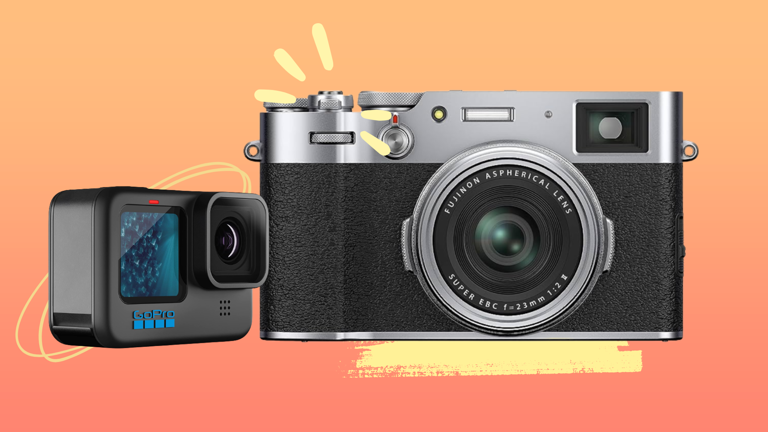
- Reviews TV REVIEWS v1.11 HEADPHONES REVIEWS v1.7 MONITOR REVIEWS v2.0 SOUNDBAR REVIEWS v1.3 MOUSE REVIEWS v1.5 KEYBOARD REVIEWS v1.3.1 PRINTER REVIEWS v1.2 VACUUM REVIEWS v1.3 PROJECTOR REVIEWS v0.8 TOASTER REVIEWS v1.0 BLENDER REVIEWS v1.0 KEYBOARD SWITCH REVIEWS v1.0 SPEAKER REVIEWS v0.8 CAMERA REVIEWS v0.12.1 LAPTOP REVIEWS v0.8.2
- In Progress
- Newsletters
- Compact Travel
- Table of Contents
- Best Camera
- Best Mid-Range
- Best Budget
- Best Vlogging
- Best Large Sensor
Notable Mentions
Recent updates, all reviews, the 5 best compact cameras for travel - spring 2024 reviews.

Point-and-shoot cameras are a natural choice for travel thanks to their compact sizes and built-in zoom lenses, making it a breeze to capture all your memories abroad without having to lug around a bulky kit with multiple lenses. While smartphone cameras have continued to improve, and they're usually the camera you've already got on you, some point-and-shoots offer improved image quality with larger sensors than the ones typically found in phones, while others offer longer zoom ranges that you simply can't get with the physically limited lenses on your smartphone.
We've bought and tested over 100 cameras in our lab, and below, you'll find the best small travel cameras we've tested. If you don't mind carrying a larger kit with interchangeable lenses, check out our picks for the best mirrorless cameras for travel . If you want to capture beautiful images of destination vistas, you might also want to check out our best cameras for landscape photography . Alternatively, if you're less interested in snapping places and more interested in the people that populate them, see our picks for the best street photography cameras .
Best Compact Camera For Travel

It isn't cheap, but the Sony RX100 VII is the best small travel camera that we've tested. Sony has perfected the formula for compact zoom cameras with its RX100 series. This latest model features a stacked 1-inch sensor that delivers blazing-fast burst rates and great image quality for its class, along with a pop-up viewfinder and flash, a large tilting screen, and a zoom lens—all packed into an incredibly portable camera.
While it doesn't have the widest zoom range on this list, its 24–200mm full-frame equivalent focal length still gives you a fair amount of range, offering some flexibility for framing and composition. The camera also has a highly effective autofocus system, ensuring your subjects stay in focus, even in busier settings. That said, like most compact cameras, it has a pretty short battery life, though you can always pack a spare battery or portable power bank to charge it on the go.
See our review
Best Mid-Range Compact Camera For Travel

The Canon PowerShot G5 X Mark II is a great mid-range option if you don't want to spend as much on a travel camera. It's easily one of the most comfortable point-and-shoots we've tested, thanks to a nicely designed grip and thumb rest. On top of that, its user interface is highly intuitive. It also has a nearly identical pop-up viewfinder as the one found on the Sony RX100 VII , which is great for sunny days when it's harder to see the screen.
The built-in lens here has a fairly wide max aperture, making it decently well-suited to dimmer lighting conditions. However, it has a slightly shorter zoom range than the Sony, with a 24–120mm equivalent focal length. The camera's autofocus system can also struggle to track subjects quickly and accurately, so keep that in mind if you plan on shooting faster subjects in busier settings. Otherwise, this camera has plenty to offer for travelers who want something compact and comfortable to shoot with.
Best Budget Compact Camera For Travel

The Canon PowerShot SX740 is one of the best point-and-shoot cameras to get if you're on a tighter budget. It uses a smaller sensor than the more premium options above, so there's a slight trade-off in image quality. On the upside, its built-in lens has a 40x optical zoom range, giving you a remarkably wide focal length range of 24–960mm. Though it doesn't have a viewfinder like the Canon PowerShot G5 X Mark II , the camera's tilt screen can flip up for selfies or waist-level shots, and it's incredibly portable.
Of course, the most cost-effective choice if your budget is really tight is to simply use your smartphone! Most smartphone cameras these days feature pretty impressive processing to compensate for their smaller sensors, which means you can still get great results despite some hardware limitations. The best part is that you've likely already got a smartphone on you, so it won't cost you anything extra or take up more space in your luggage. Still, if you want the shooting experience of a dedicated point-and-shoot camera, the PowerShot SX740 has quite a bit of value for its price.
Best Compact Vlogging Camera For Travel

While the previous picks are more photography-oriented, travel vloggers should take note of the Sony ZV-1, the best point-and-shoot camera for travel vlogging. Though it doesn't have a viewfinder, it's the only option on this list to feature a fully articulated screen, making it easy to monitor yourself while recording or to take the odd selfie. On top of that, it has vlogging-specific features like a detachable windscreen to reduce ambient noise when recording outside.
The Sony ZV-1 II has since replaced it and features a wider-angle lens that's a good fit for walk-and-talk vlogs. However, the newer model doesn't have optical stabilization, and its digital stabilization feature crops in some of that wider field of view. For those reasons, the original ZV-1 is still our top pick here, especially since you can get it for cheaper. It checks all the boxes for a compact, all-in-one vlogging camera for travel.
Best Large Sensor Compact Camera For Travel

The RICOH GR III is a fantastic option if image quality is your top priority. While you'll still get great images from 1-inch sensor cameras like the Sony RX100 VII or the Canon PowerShot G5 X Mark II , the RICOH boasts a larger APS-C sensor that delivers excellent image quality and better noise handling in low light. Its sleek, minimalist design makes it the most pocketable camera on this list, too, so you can bring it with you wherever your travels take you.
Of course, this isn't the travel camera for everyone. If you want the flexibility to zoom in on farther subjects or you like to shoot video on the side, you're out of luck here since the camera has a fixed 28mm equivalent focal length and has poor video capabilities. If 28mm is too wide for you, you can opt for the RICOH GR IIIx instead, which has a 40mm equivalent lens. Though it lacks a viewfinder or zoom lens, this is one of the best options if you want something super portable that doesn't compromise on image quality.
- Canon PowerShot G7 X Mark III: The Canon PowerShot G7 X Mark III is a good compact vlogging camera. Unlike the Sony ZV-1, it has a built-in livestreaming feature that some travel vloggers may find appealing. However, its autofocus isn't as effective, and the camera doesn't have a fully articulated screen. See our review
- Fujifilm X100V: The Fujifilm X100V is a beautifully designed point-and-shoot with an APS-C sensor. Unlike the RICOH GR III, it has a hybrid optical/electronic viewfinder and a tilting screen, making it more versatile. However, it isn't as compact as other options here, and the manufacturer has since replaced it with the in-demand Fujifilm X100VI. See our review
- Panasonic LUMIX ZS80: The Panasonic LUMIX ZS80 is one of the best budget options you can get, offering a ton of value for its price, and unlike the Canon PowerShot G5 X Mark II, it even has a viewfinder. However, it's been discontinued and is harder to find. See our review
Apr 10, 2024: We brushed up some of the text throughout the article for clarity and added a mention of the Fujifilm X100VI to ensure the article is up to date with the current market.
Mar 14, 2024: We've reviewed the article to ensure the text and recommendations are up to date.
Feb 14, 2024: Moved the Panasonic LUMIX ZS80 to the Notable Mentions because it's been discontinued and is hard to find in stock, and replaced it with the Canon PowerShot SX740 as the main budget pick.
Dec 18, 2023: Reviewed accuracy of picks with no change to recommendations.
Oct 19, 2023: Moved the Fujifilm X100V to Notable Mentions.
Our recommendations above are what we think are currently the best compact cameras for most people to buy for travel, according to their needs. We factor in the price, feedback from our visitors, and availability (no cameras that are difficult to find or almost out of stock in the U.S.).
If you would like to choose for yourself, here's the list of all our compact fixed-lens camera reviews. Be careful not to get caught up in the details. There is no single perfect camera. Personal taste, preference, and shooting habits will matter more in your selection.
- Meet the Team
- Work with Us
- Czech Republic
- Netherlands
- Switzerland
- Scandinavia
- Philippines
- South Korea
- New Zealand
- South Africa
- Budget Travel
- Work & Travel
- The Broke Backpacker Manifesto
- Travel Resources
- How to Travel on $10/day
Home » Gear » best nikon travel lenses
The 16 Best Travel Lenses for Nikon • Comprehensive Guide
Nikon is one of the oldest and most respected camera manufacturers in the world. For over 100 years, this company has been producing photographic equipment that is used and loved by all types of people.
Nikon gear is used by professional photographers, journalists, enthusiasts, and everyday-folk alike; it is thanks to their mutual love for Nikon that the company has been so successful.
Nikon is well-known for its camera sensors, which are among the most advanced camera bodies on the current market. That said, a sensor is nothing without a lens. Nikon users should be just as concerned with their travel lens selection as they are with their camera body, which is what we’re going to talk about today.
There are over 90 Nikon lenses to choose from and even more when you consider 3rd parties like Sigma, Tamron, and Rokinon. If you’re having trouble sorting through these lenses and choosing the best Nikon travel lens for yourself then we don’t blame you.
That’s why we’re here to help! We at Broke Backpacker have an extensive knowledge on Nikon’s lens library are ready to help you out with any and all of your questions.
We’ve compiled a list of the 16 best Nikon lenses for travel photography. Each lens is uniquely designed and will appeal to a certain type of photographer. Whether you’re a run-and-gunner, a Zen landscape master, or a pro at portraiture, there is a lens out there made just for you.
So let’s get to it then! Here are the best Nikon lenses for travel photography currently available!
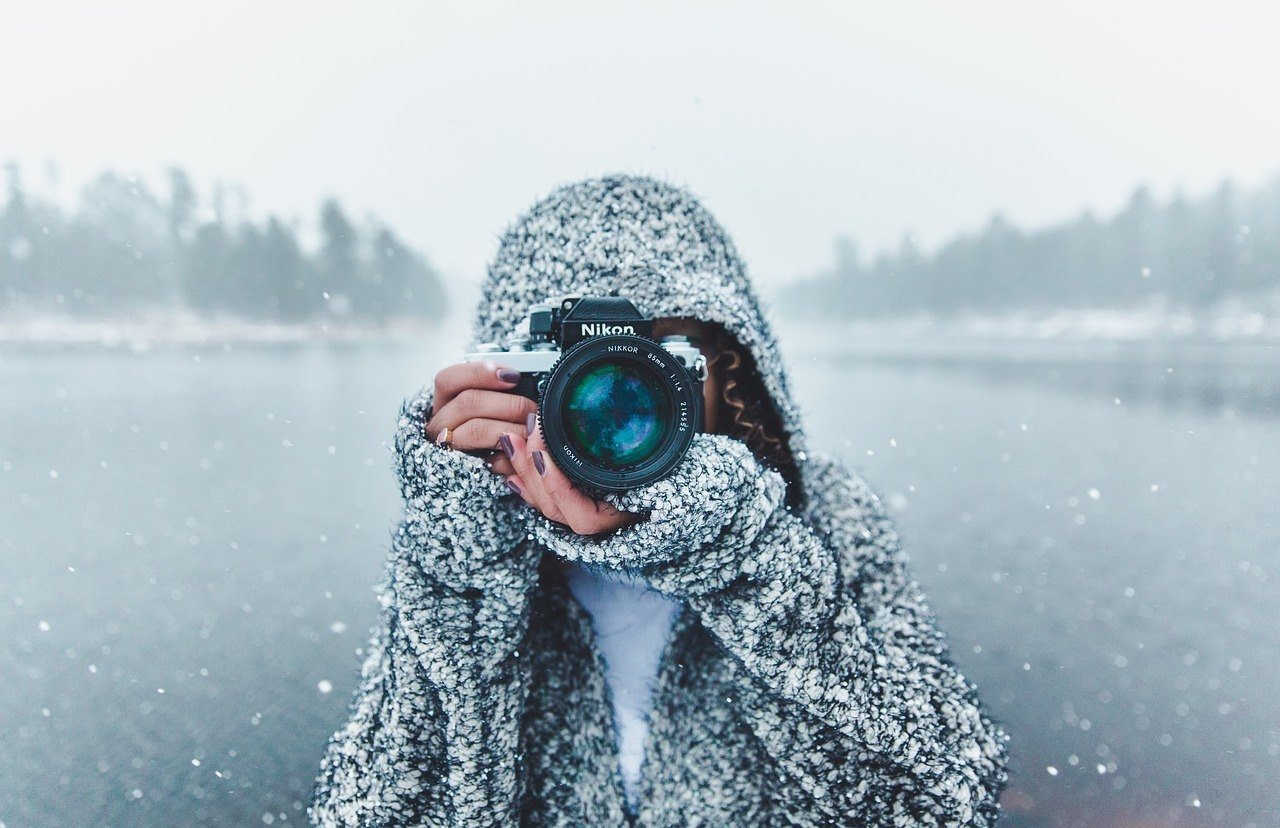
Quick Answers: Best Nikon FX Travel Lenses of 2024
Quick answers: best nikon dx travel lenses of 2024, best nikon travel lenses for fx mount, best nikon travel lenses for dx mount, things to consider when buying the best nikon travel lenses, faq about the best nikon travel lenses.
- Overall Best Travel Lens for Nikon FX – Nikon AF-S FX NIKKOR 24-120mm f/4G ED VR
- Best Budget Travel Lens for Nikon FX – Nikon 24-85mm F/3.5-4.5G ED VR AF-S
- Best Professional Travel Lens for Nikon FX – Nikon AF-S FX NIKKOR 24-70mm f/2.8G
- Best Prime Travel Lens for Nikon FX – Nikon 50mm f/1.4G SIC SW
- Jump to -> The List of Best Nikon FX Travel Lenses of 2024
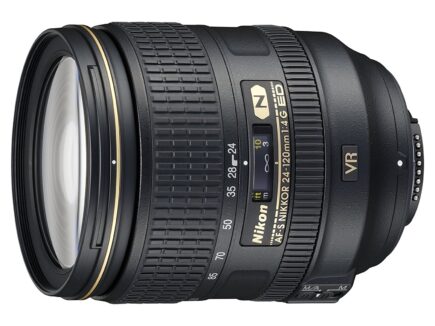
Nikon Nikkor 24-120mm f/4.0
- > Great focal range
- > Lightweight
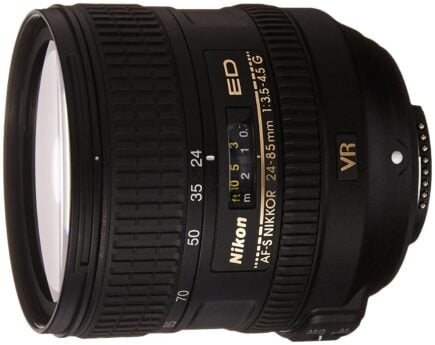
Nikon Nikkor 24-85mm f/3.5-4.5
- > Good center sharpness
- > Good autofocus
- > Affordable
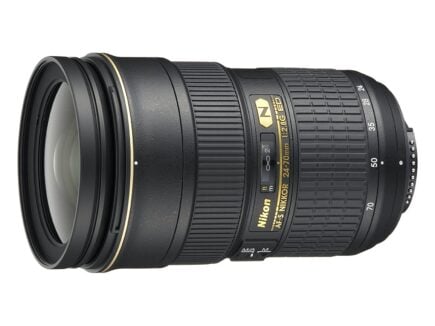
Nikon Nikkor 24-70mm f/2.8
- > Outstanding sharpness
- > Very robust
- > Great autofocus
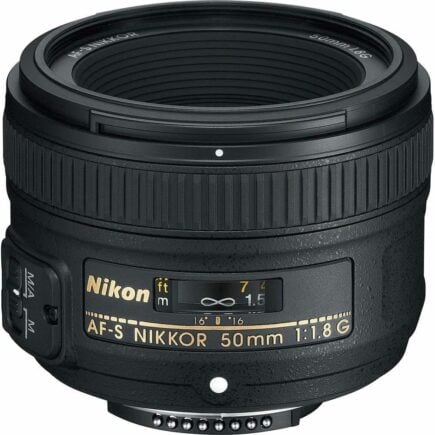
Nikon Nikkor 50mm f/1.8
- > Light and durable
- > Very affordable
- Overall Best Travel Lens for Nikon DX – Sigma 18-300mm F3.5-6.3 DC Macro OS HSM
- Best DX Budget Travel Lens for Nikon DX – Sigma 17-50mm f/2.8 EX DC OS HSM FLD
- Best DX Professional Travel Lens for Nikon DX – Sigma Art 18-35mm f/1.8
- Best EF-S Prime Travel Lens for Nikon DX – Nikon AF-S DX NIKKOR 35mm f/1.8G
- Jump to -> The List of Best Nikon DX Travel Lenses of 2024
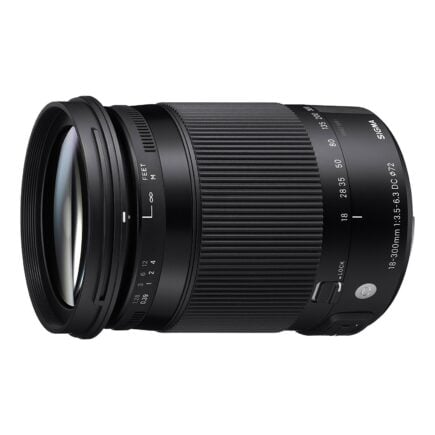
Sigma 18-300mm f/3.5-6.3
- > Good optics
- > Well designed
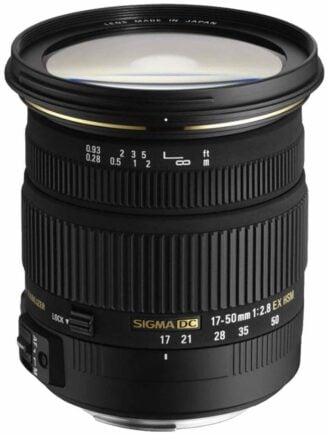
Sigma 17-50mm f/2.8
- > Fast aperture
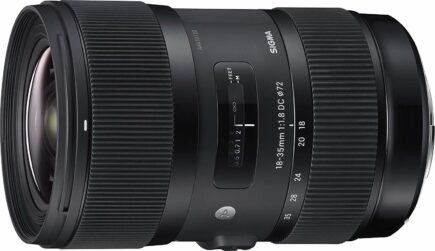
Sigma Art 18-35mm f/1.8
- > Unbeatable resolution
- > Unbeatable resolution Very fast aperture
- > Limited optical imperfections
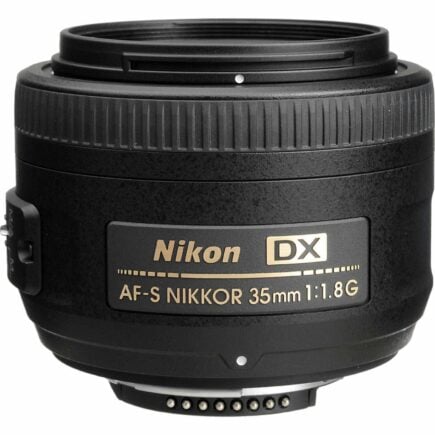
Nikon Nikkor 35mm f/1.8
- > Great performance
- > Amazing price
- > Very portable

REI is one of America’s biggest and most-loved outdoor gear retailers.
Now, for just $30, get a lifetime membership that entitles you to 10% OFF on most items, access to their trade-in scheme and discount rentals .
Overall Best Nikon Travel Lens (FX): Nikon AF-S FX NIKKOR 24-120mm f4 G ED VR
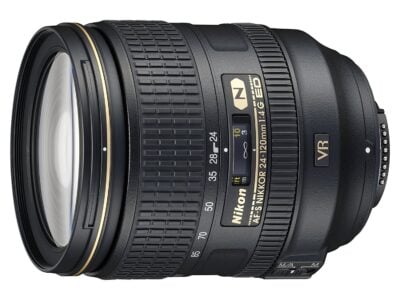
- Weight: 1.56 lb / 710 g
- Dimensions: 3.31 x 4.06″ / 84 x 103 mm
- Filter Size: 77mm
- Optical Stabilization: Yes
The Nikkor 24-120mm f/4 ED VR is our pick for the best Nikon travel lens! This iteration of the classic “do-everything travel zoom” is a worthy piece of equipment, thanks in part to its solid optical performance, effective vibration reduction, and relative lightweight.
Those who are traveling the world and need something both powerful and portable will find the 24-120mm is one of the best options.
The Nikon Nikkor 24-120mm f/4G ED VR appealing because of its useful focal range. At 24-120mm, this lens can capture all sorts of subjects and will appeal to many types of photographers.
Landscape photographers will appreciate the relatively wide 24mm angle while portrait photographers will get some pretty solid headshots at the telephoto end.
Optically, the Nikon Nikkor 24-120mm f/4 performs very well. Images are super sharp, particularly in the center, from the widest aperture. The corners are bit soft but improve dramatically when the lens is stopped down.
Vignetting and distortion are visible at both ends of the focal range but luckily these problems can easily be fixed in post-processing. The bokeh created by the 24-120mm isn’t the best, and many photographers find it too busy or chaotic.
To be honest, the problems that the Nikon Nikkor 24-120mm f/4G ED VR suffers from are to be expected. Travel zooms like this one are usually prone to optical imperfections but, given the usefulness of the lens’ focal range, these tradeoffs are almost always acceptable.
The Nikon Nikkor 24-120mm f/4 is made of high-grade plastics. Although these plastics are pretty durable, they are not weather resistant. Those who expose their lenses to elements frequently may be concerned with the Nikon 24-120mm’s ruggedness or lack thereof.
- Excellent sharpness.
- Very useful focal range and VR.
- Relatively lightweight.
- Vignetting/distortion when shot wide or telephoto.
- Unattractive bokeh.
- Plastic construction.
Best Budget Nikon Travel Lens (FX): Nikon 24-85mm F/3.5-4.5G ED VR AF-S
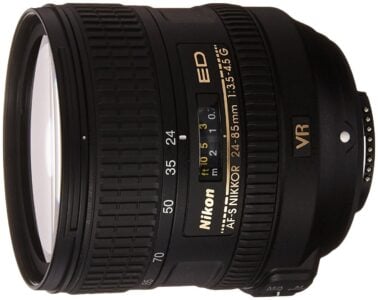
- Weight: 1.02 lb / 465 g
- Dimensions: 3.07 x 3.23″ / 78 x 82 mm
- Filter Size: 72mm
For those who don’t want to shell out $1,000+ for a professional zoom, the Nikon 24-85mm f/3.5-4.5G ED VR is an excellent alternative. For around $500, you can have a lens with good image quality, a solid set of features, and excellent packability. Though the Nikon 24-85mm f/3.5-4.5 is far from perfect, it still does a great job of capturing beautiful images.
Optically, the Nikon 24-85mm f/3.5-4.5G ED VR performs pretty well. Center sharpness is excellent throughout the entire focal range. The vibration reduction and autofocusing systems are very capable as well and should increase photo quality in either dimly lit or fast-paced environments.
The Nikon 24-85mm f/3.5-4.5G ED VR does suffer from quite a few optical blemishes. Distortion, both the barrelling and pincushion varieties, is noticeable throughout the focal range. Vignetting and corner softness are also strong when the lens is used wide open.
Even though it was designed to be used on the FX mount, the Nikon 24-85mm f/3.5-4.5G ED VR oddly enough feels more suited for a DX camera. Because of the sensor cropping, the corners suffer less from softness and vignetting while on a DX body.
Regardless of its inherent flaws, the Nikon 24-85mm f/3.5-4.5G ED VR is still an effective lens that is capable of delivering excellent photos. It will require a little extra effort to get the most out of this camera but, once you master it, the Nikon 24-85mm f/3.5-4.5G ED VR can be one of the best budget travel lenses for Nikon FX users.
- Good center sharpness throughout the focal range.
- Quick, silent autofocus.
- Affordable.
- Distortion throughout the range.
- Heavy vignetting.
- Optical blemishes more apparent on FX mount.
Best Professional Nikon Travel Lens (FX): Nikon AF-S FX NIKKOR 24-70mm f/2.8G
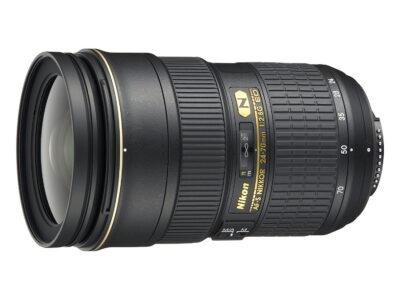
- Weight: 1.98 lb / 900 g
- Dimensions: 3.27 x 5.24″ / 83 x 133 mm
- Optical Stabilization: No
For those looking for a superlative lens and are willing to fork out the necessary dough, the Nikon AF-S FX Nikkor 24-70mm f/2.8G is one of the best that money can buy.
Thanks to its stellar image sharpness, blazing fast autofocus, and superb build quality, the Nikon AF-S FX Nikkor 24-70mm f/2.8G is our choice for the best travel lens for professional Nikon photographers.
The Nikon AF-S FX Nikkor 24-70mm f/2.8G is a worthy addition to the photographic world. Like most other fixed-aperture zooms, the Nikon AF-S FX Nikkor 24-70mm f/2.8G is near-flawless optically.
More than that, it just performs amazingly well – autofocus is some of the fastest in the Nikon line, and construction is of such high quality the lens can handle most forms of weather.
All and all, the Nikon AF-S FX Nikkor 24-70mm f/2.8G strives to be a perfect lens and, for the most part, comes close. As is the case with pro medium zooms though, the question is “what doesn’t this lens have?”
Like a lot of Nikon lenses, distortion and vignetting are present in the Nikon AF-S FX Nikkor 24-70mm f/2.8G, but to a much lesser degree. Many photographers will not notice these imperfections. Those that do can easily fix them with post-processing software as always.
The Nikon AF-S FX Nikkor 24-70mm f/2.8G also lacks vibration reduction tech, perhaps to keep costs and/or size down to a minimum. The fast f/2.8 aperture should do well enough in low light. For those that really want the VR though, there’s a newer, more expensive model that comes equipped with it.
- Outstanding sharpness.
- Extremely quick autofocus.
- Very robust build-quality.
- Some corner softness and vignetting.
- No vibration reduction tech.
Best Prime Nikon Travel Lens (FX): Nikon 50mm f/1.8G
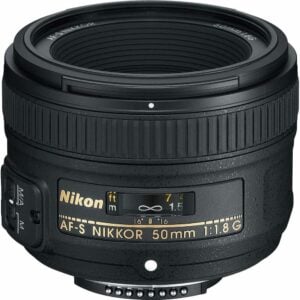
- Weight: 6.53 oz / 185 g
- Dimensions: 2.84 x 2.06″ / 72.1 x 52.4 mm
- Filter Size: 58mm
Almost every photographer’s first prime lens is a 50mm, or “nifty fifty.” These lenses are popular first choices because they’re almost always a) useful b) effective and c) affordable. Nikon’s own 50mm f/1.8 is no exception to this trend!
The Nikon 50mm f/1.8G is everything that you’d expect from a nifty fifty – it’s sharp, portable, very fast, and, best of all, a screaming deal.
Optically, the Nikon 50mm f/1.8G is a solid performer. Sharpness is respectable when shot wide open and becomes impressive when stopped down to f/2.8 and f/4.
Vignetting and corner sharpness are present in the Nikon 50mm f/1.8G when it’s shot wide open. Most will hardly recognize these faults since the background will probably be thrown out anyways and lost in the lens’ bokeh, which is gorgeous by the way. Distortion is a bit heavy for a prime lens but this can easily be fixed in post-processing.
It goes without saying that the Nikon 50mm f/1.8G is very portable, weighing only a paltry 185 grams. The lens doesn’t have the best depth of field markings, which may or may not turn off traditional photographers who like to know their hyperfocal values.
At the end of the day, what makes the Nikon 50mm f/1.8G so great is its unbeatable price. For around $200 new, you can have an extremely useful lens that sacrifices little in the way of performance.
Those looking for the best prime lens for Nikon then should look no further than the Nikon 50mm f/1.8G.
- Light yet durable.
- Amazing price.
- Distortion.
- Vignetting/corner softness at widest aperture.
- Poor DOF markings.
Best Nikon Travel Lens for Landscape Photographers (FX): Nikon AF-S FX NIKKOR 16-35mm f/4G ED VR
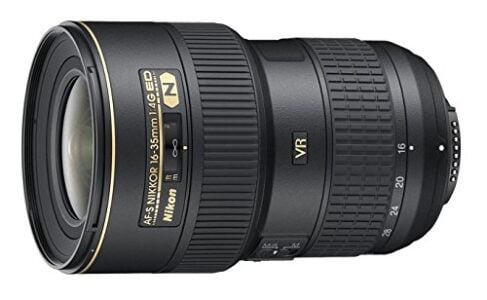
- Weight: 1.50 lb / 680 g
- Dimensions: 3.25 x 4.92″ / 82.5 x 125 mm
The Nikon Nikkor 16-35mm f/4G ED VR is an exceptional wide-angle lens. The photos that this camera produces have an awesome resolution, are generally free of optical blemishes and just drop-dead gorgeous.
For landscape photographers, the Nikkor 16-35mm f/4G ED VR is one of the best Nikon travel lenses that they can own.
There’s little to begrudge of the Nikon Nikkor 16-35mm f/4G ED VR in terms of image quality. From f/4.0, center sharpness is superb and by f/8.0 the entire frame is crisper than a fresh set of bed sheets. Corners do show a bit of softness when the lens is used wide-open but this is to be expected from an ultra wide angle.
Distortion is very apparent when the lens is set to 16mm. This distortion is nothing debilitating – modern post-processing software can fix this imperfection – but it just really stands out within the focal range.
Luckily, all other forms of optical blemishing are well controlled in the Nikon Nikkor 16-35mm f/4G ED VR. Chromatic aberrations are nearly absent and vignetting is limited throughout the focal range.
The Nikon Nikkor 16-35mm f/4G ED VR comes equipped with vibration reduction technology, which is great for those using their DSLR for filmmaking. Pure landscape photographers may use this feature less frequently but it doesn’t hurt to have.
- Impressive sharpness.
- Well controlled vignetting and chromatic aberrations.
- VR tech for filmmaking.
- Corners are a bit soft at wide apertures.
- Heavy distortion when shot at 16mm.
- Perhaps a bit large (but only).
Best Nikon Travel Lens for Portrait Photographers (FX): Nikon AF S NIKKOR 85mm f/1.8G
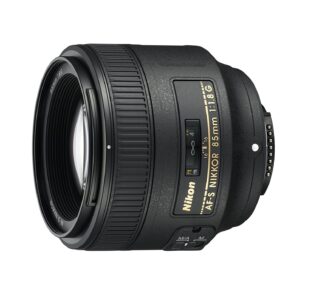
- Weight: 12.35 oz / 350 g
- Dimensions: 3.15 x 2.87″ / 80 x 73 mm
- Filter Size: 67mm
85mm lenses are some of my favorites because, aside from their useful focal length and portable size, they almost always have near-perfect optics. The Nikon 85mm f/1.8G is such a lens.
With stellar sharpness and not too much else to complain about, the Nikon 85mm f/1.8G is one of the best Nikon travel lenses for portrait photographers.
Optically, there’s not a lot that the Nikon 85mm f/1.8G could improve on. Images are very sharp even at the widest aperture. Corners are a bit soft at the widest aperture but these will probably go unnoticed since this lens is primarily a portrait lens. When the lens is stopped down, images are tack sharp from corner to corner.
Any and all other optical blemishes are not an issue in the Nikon 85mm f/1.8G. Vignetting and distortion are practically non-existent and chromatic aberrations are very limited.
Unfortunately, the autofocus is a bit of head scratcher in the Nikon 85mm f/1.8G, at least when compared to its predecessor. The Nikon 85mm’s new autofocus system is quieter but is for some reason slower than the older model.
Even with its slightly slower autofocusing system, we still believe that this model is the best version of the lens. Most photographers will find that they don’t need the autofocus to be any faster.
Construction-wise, the Nikon 85mm f/1.8G is small and well-built. Overall, it’s a sturdy lens and should hold up quite well although its plastic construction may not appease photographers that don’t care for the material in the first place.
- Fantastic image quality.
- Fast and light.
- Great price.
- A little soft at larger apertures (but still great!).
- Autofocus is a bit slower than its predecessor.
- Plastic construction may irk some purists.
Best Nikon Travel Lens for Astrophotographers (FX): Rokinon 20mm f/1.8 AS ED UMC
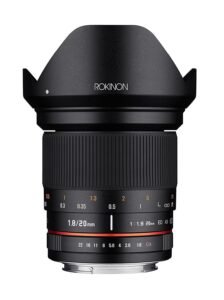
- Weight: 1.09 lbs/497 g
- Dimensions: 3.27” x 3.48”
- Image Stabilization: No
Lenses produced by the Korean company Rokinon, or Samyang as it’s sometimes referred to, are very popular with astrophotographers mostly due to their excellent performance and price. The Rokinon 20mm f/1.8 AS ED UMC is one of the best lenses from this company. With an ultra-wide angle and super fast aperture, you can capture the night sky in all of its splendor and not have to break the bank in the process.
For these reasons, we think that the Rokinon 20mm f/1.8 AS ED UMC is the best Nikon travel lens for astrophotography.
Rokinon lenses are cheaper because they do not use a lot of expensive electronics that are usually included in modern day lenses. As such, most if not all of Rokinon lenses do not have autofocusing capabilities. This means that you’ll have to focus the Rokinon 20mm f/1.8 AS ED UMC manually.
Honestly, focusing manually isn’t as much of a pain as some make it out to be; it is, sometimes, preferable. The zoom ring is smooth and easy to understand, thanks to the detailed DOF markings on the side of the barrel.
Optically, the Rokinon 20mm f/1.8 AS ED UMC performs very well. Sharpness is great but CA is noticeable at wider apertures. To alleviate chroma, try stopping the lens down a tad to eliminate CA but not so much too much to cause diffraction, which sets in about f/11.
The body of the Rokinon 20mm f/1.8 AS ED UMC is built from high-grade plastics while the mount is metal; both are quite sturdy. The whole lens can feel quite bulky, though not as much as some other full frame lenses.
- Great bang for your buck.
- Limited distortion.
- Awesome aperture for an ultrawide.
- Manual only.
- CA and vignetting present at the widest aperture.
Best Nikon Travel Lens for Telephoto Lovers (FX): Nikon 70-300mm f/4.5-5.6G ED IF AF-S VR
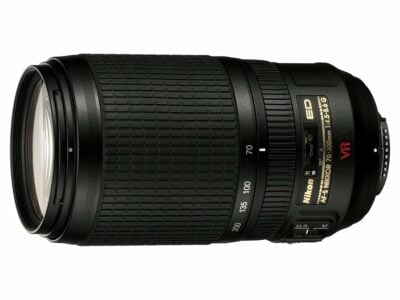
- Weight: 26.3 oz / 745 g
- Dimensions: 143.5mm x 80mm / 5.6 in. x 3.1 in
The Nikon 70-300mm f/4.5-5.6G VR is one of the most surprising lenses on this list. For less than $500, this lens is, somehow, shockingly sharp, very lightweight, and functionally complete thanks to additions like VR and internal zooming.
In short, we love this lens and think it’s not only one of the best telephotos but hands-down one of the best lenses for Nikon.
There is a lot to like about the Nikon 70-300mm f/4.5-5.6G VR. Optically, this lens impresses, beginning sharp at its widest aperture and staying respectably sharp throughout its entire range.
The resolution does drop a bit as the lens approaches the 200mm mark but the degradation is marginal. CA also picks up as you zoom in but, as the image resolution, is relatively unobtrusive.
Since the Nikon 70-300mm f/4.5-5.6G VR has a slower aperture, it’s not very adept at shooting in low-light situations. The normally responsive autofocus tends to get lost and shutter speeds can become dangerously low. Vibration reduction tech is thankfully included in the lens, which helps a lot when the light is dim.
Construction-wise, the Nikon 70-300mm f/4.5-5.6G VR is made from high-grade plastics that are assembled very well. The lens feels robust in your hands yet still light.
What more is there to say about this lens except that it’s fantastic. Granted, it does have a few shortcomings and it obviously can’t match the resolution of the more expensive telephotos e.g. the Nikon 70-200mm f/2.8. These points being made, what the Nikon 70-300mm f/4.5-5.6G VR accomplishes for its price point is still remarkable.
- Awesome sharpness.
- Very light body that includes VR, internal zooming, and sealing.
- Struggles in low-light.
- Sharpness drops as you zoom in.
- CA present.

Do You Want to Travel FOREVER??
Pop your email in below to get a FREE copy of ‘How to Travel the World on $10 a Day!’.
Overall Best Nikon Travel Lens (DX): Sigma 18-300mm F3.5-6.3 DC Macro OS HSM
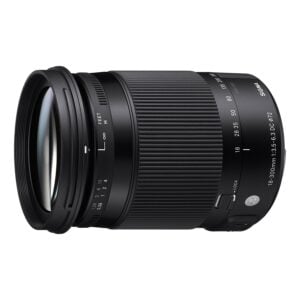
- Weight: 20.6 oz / 585 g
- Dimensions: 4.0 in. x 3.1 in / 101.5mm x 79mm
Superzoom lenses get a bit of a bad rap sometimes. Many of them, in the process of doing so much, sacrifice a lot of optical quality.
Though every once in a while, a superzoom comes along that doesn’t give away too much, and is able to perform up to and beyond the call of duty; the Sigma 18-300mm f/3.5-6.3 DC Macro OS HSM is one such lens.
The Sigma 18-300mm f/3.5-6.3 DC Macro OS HSM is able to capture excellent photos and does a good job of covering up its inherent flaws.
The inclusion of optical stabilization helps to mitigate the lens’ limited aperture and an excellent build quality ensures both durability and portability.
Price-wise, there’s little to complain about with the Sigma 18-300mm f/3.5-6.3 as well. Given these points, we think that the Sigma 18-300mm f/3.5-6.3 DC Macro OS HSM is the best overall travel lens for Nikon DX users who want to have their cake and eat it too.
The Sigma 18-300mm f/3.5-6.3 DC Macro OS HSM offers commendable image resolutions. Sharpness is excellent at wider angles but does drop marginally as the lens is zoomed in. This lens also produces some excellent colors and contrast but not so much a pleasing bokeh.
Chromatic aberrations in the Sigma 18-300mm f/3.5-6.3 DC Macro OS HSM are well controlled. Distortion and vignetting are predictably present, as is the case usually with superzooms, but these are never debilitating.
Most users will be shocked at and probably even sold by how light the Sigma 18-300mm f/3.5-6.3 DC Macro OS HSM is. At 585 grams, this baby is practically feather-like especially when you consider how much it does.
The body still feels solid, although the zoom ring is somewhat fiddly at times.
- Solid optical performance for a superzoom.
- Durable, lightweight construction that includes optical stabilization.
- Very affordable.
- Bokeh is unattractive.
- Focus ring is tedious.
- Does more but at a sacrifice of quality.
Best Budget Nikon Travel Lens (DX): Sigma 17-50mm f/2.8 EX DC OS HSM FLD
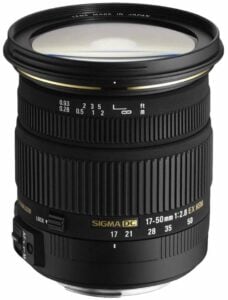
- Weight: 1.24 lb / 565 g
- Dimensions: 3.3 x 3.6″ / 8.38 x 9.14 cm
- Image Stabilization: Yes
Like its 18-300mm cousin, the Sigma 17-50mm f/2.8 EX DC OS is a well-performing piece of equipment that is made unignorable by its low cost. For only $300 (!!!!), you can own a fixed aperture medium zoom lens that performs admirably.
Given this amazing deal, it’s no wonder that we think the Sigma 17-50mm f/2.8 is the best budget lens for Nikon DX users.
The Sigma 17-50mm f/2.8 EX DC OS HSM performs very well. Sharpness is overall very good though the edges can be a little soft when the lens is used wide open. Vignetting is present at wider apertures as well but chromatic aberrations and distortion are both well-controlled.
Image stabilization is built into the Sigma 17-50mm f/2.8 and works as it should. Combined with fast aperture, the Sigma 17-50mm f/2.8 EX DC OS HSM is a stud in low light situations. Filmmakers will especially appreciate this setup when trying to film in dim interiors or dusky streets.
The Sigma 17-50mm f/2.8 EX DC OS HSM is an overall lightweight lens, more so than many of Nikon’s other zooms. This is due to its all-plastic construction, which is great for cutting weight but does make the lens feel a little more fragile.
The focus ring of the Sigma Sigma 17-50mm f/2.8 EX DC OS HSM feels a little more finicky than usual and can be difficult to use sometimes.
- Excellent price point.
- Great center resolution.
- Fast aperture and image stabilization
- Visible corner softness when shot wide open.
- Tedious focus ring.
Best Professional Nikon Travel Lens (DX): Sigma 18-35mm F1.8 Art DC HSM
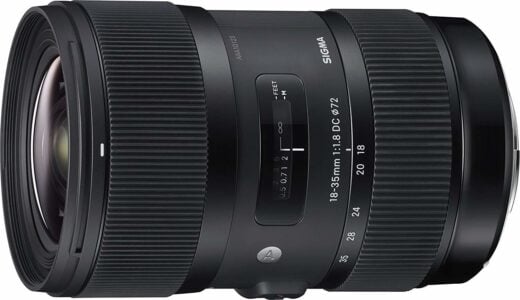
- Weight: 1.78 lb / 811 g
- Dimensions: 3.07” x 4.76” / 78 x 121 mm
If I were trying to convince someone to invest in a DX system over the full frame FX one, I would submit to them the Sigma Art 18-35mm f/1.8.
Simply put, this lens is one of the most gorgeous, useful, and respected lenses in all of photography. It is, without a shadow of a doubt, one of the greatest lenses made in recent years and is, deservingly, the best professional travel lens for Nikon’s DX mount.
The Sigma Art 18-35mm f/1.8 has it all – supreme image quality, a super fast aperture, robust construction, and lightning-quick autofocus. The Sigma Art 18-35mm f/1.8 is amazingly sharp, frame-wise from corner to corner and focal-wise from end to end.
Chromatic aberrations, vignetting, and distortion is present but in microscopic amounts. Optically this lens is superlative.
The Sigma Art 18-35mm f/1.8 is made from various alloys and feels very robust, perhaps tank-like. Topping out at over 800 grams, this lens is definitely on the heavier side. Many photographers enjoy the weightiness though and find that it adds a nice balance to the lens.
The focal range of the Sigma Art 18-35mm f/1.8 is pretty small and one may wonder if it can be considered a travel lens at all.
At the very least, the range of the Sigma Art 18-35mm lies in that sweet spot where many of the most useful focal lengths lie. Given the unprecedented performance of this lens as well, we think that it’s a worthy tradeoff.
- Ridiculously sharp at all times.
- Extremely fast.
- Very few optical blemishes (CA, distortion, vignetting, etc)
- Big and fat.
- Pretty limited focal range for a travel lens.
Best Prime Nikon Travel Lens (DX) : Nikon AF-S DX NIKKOR 35mm f/1.8G
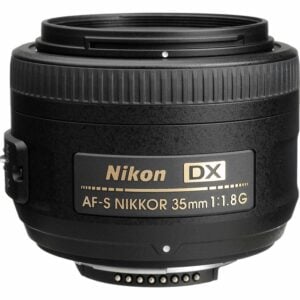
- Weight: 10.76 oz / 305 g
- Dimensions: 2.83 x 2.81″ / 72 x 71.5 mm
Much in the same way every full frame owner needs a “nifty fifty,” every owner of an APS-C camera should own 35mm prime lens. The best 35mm prime lens that a DX owner can buy is the Nikon AF-S DX NIKKOR 35mm f/1.8G.
With excellent optics, solid performance, and an insignificant price tag, the Nikon 35mm f/1.8 is one of the most reliable Nikon lenses available.
Like the Nikon 50mm f/1.8, the 35mm will be very useful to every kind of photographer, and may end being the most used lens in their kits.
The Nikon AF-S DX NIKKOR 35mm f/1.8G performs much in the same as the other enthusiast-level f/1.8 primes in the Nikon library – images produced by the 35mm, though not devoid of problems, are for the most part very attractive.
Sharpness is excellent even at the widest aperture and peaks at around f/2.8 and f/4.0. Distortion is present, sometimes in disconcerting levels although editing software can still fix this. Chromatic aberration and vignetting are well controlled.
True to the other f/1.8 Nikon primes, the body of the Nikon 35mm f/1.8 is very small and portable. That being said, the Nikon 35mm f/1.8 is still made primarily of plastics and is not meant to withstand extreme weather.
The key consideration when buying this lens – and the thing that will most likely convince people to do so – is the fact that it’s so cheap. For only a few hundred dollars, you get a lens that works very well and produces some really beautiful photos.
For the amount of money you’re putting up, the Nikon 35mm f/1.8 is an excellent investment.
- Great performance.
- Very portable.
- A bit more distortion than usual for a prime.
- Some CA and vignetting.
Best Nikon Travel Lens for Landscape Photographers (DX): Nikon AF-P DX NIKKOR 10-20mm f/4.5-5.6G VR
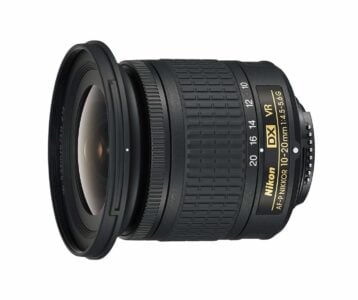
- Weight: 8.11 oz / 230 g
- Dimensions: 3.03 x 2.87″ / 77 x 73 mm
For the price you pay, the AF-P DX NIKKOR 10-20mm f/4.5-5.6G VR is a total diamond in the rough and certainly one of the best lenses for Nikon shooters who like wide angles!
Though somewhat unimpressive on paper, the Nikon 10-20mm f/4.5-5.6 offers excellent image quality, packability, and even vibration reduction, which is a bit of treat considering this lens is than $300!
Resolution-wise, the Nikon 10-20mm does pretty well. Center sharpness is great throughout the zoom range while the corners catch up once the lens is stopped down. 15mm appears to be the sweet spot as well as 10mm and 20mm are both admirably sharp as opposed to being excellently sharp.
Vignetting and distortion are all present in the Nikon 10-20mm f/4.5-5.6G but no more than what should be expected from a wide angle zoom. Chromatic aberrations are the most obvious optical blemish with this lens and will have to be addressed in post-processing.
The vibration reduction and autofocusing systems in the Nikon 10-20mm f/4.5-5.6 both perform very well. The autofocus is quick, accurate, and virtually silent. The VR does a great job making up for the Nikon 10-20mm f/4.5-5.6G’s less than inspiring aperture, and promises up to 3.5 stops of compensation.
Aside from the price, one of the best features of the Nikon 10-20mm f/4.5-5.6G is its size. This pint-sized lens is so small that it could fit in a pocket. For those traveling light, the ability to do this is hard to turn down.
- Great image quality.
- Very light and small.
- VR tech compensates for aperture.
- Pretty slow aperture.
- Noticeable CA that will have to be corrected.
Best Nikon Travel Lens Portrait Photographers (DX): Nikon 50mm f/1.8G
If you know a bit about the physics of photography, then you probably know that a full frame lens can be mounted on an APS-C camera. When a full frame lens is used a such, the focal length is effectively lengthened as well.
If this concept is foreign to you, please refer to the Sensor Size section located at the end of this guide for a brief explanation.
When the Nikon 50mm f/1.8G is mounted on a DX body, it makes for a great alternative to the classic 85mm. With a new, equivalent length of 75mm and without sacrificing any optical quality, the Nikon 50mm f/1.8G is a very capable tool and one of the best travel Nikon lenses for portrait photographers.
In terms of optics, the Nikon 50mm f/1.8G barely changes at all when mounted on a DX body. This lens is still as sharp, responsive, and useful as ever.
For a more detailed explanation of the Nikon 50mm f/1.8G’s performance, refer to our earlier review in the Best Travel Lenses for Nikon FX section.
With an extra 25mms of length comes a narrower field of view with more isolated subjects. Portrait photographers will immediately latch on to these changes and take advantage of them in their work.
Using the Nikon 50mm f/1.8G primarily as a portrait lens also limits its flaws, as the inherent corner softness and vignetting become less noticeable. All-in-all, the Nikon 50mm f/1.8G is just as impressive on a DX if not an improvement.
Best Nikon Travel Lens for Astrophotographers (DX): Rokinon 16MAF-N 16mm f/2.0
- Weight: 1.26 lb / 571 g
- Dimensions: 3.27 x 3.42″ / 83 x 86.9 mm
Rokinon delivers another winning lens! With excellent image quality, a fast aperture, and a low price tag that Rokinon 16mm f/2.0 is one of the best travel lenses for Nikon astrophotographers, so long as they don’t mind focusing manually.
Like the Rokinon 16mm f/1.8 reviewed prior, the Rokinon 16mm f/2.0 performs more than admirably. Center resolution is excellent at all apertures and by f/5.6 the entire frame is tack-sharp. CA, vignetting, and distortion are all well controlled in this lens and are only present in moderate amounts.
As is commonplace with Rokinon lenses, there are no electronic components in the 16mm f/2.0, which means that there is no autofocus. Users will have to manually focus this lens like they used to do in the good ol’ days.
Manual focus isn’t so bad. Landscape photographers will hardly miss autofocus as it’s not like their subjects are moving all that fast. Astrophotographers will not sweat the exclusion of it either as they usually just leave the lens set to infinity to capture those stars.
The Rokinon 16mm f/2.0 is made from high-grade plastics and has a solid metal mount. Those who are apprehensive of buying plastic lenses should feel good about the Rokinon 16mm f/2.0 as it feels very sturdy.
I’ve taken Rokinon lenses into some pretty hairy situations and they’ve held up just as well if not better than my weather-sealed equipment.
Ultra-wide angles lenses with fast apertures are usually very pricey. You can get the Rokinon 16mm f/2.0 for around only $300, which should be a convincing price. Granted, you don’t have autofocus but who needs it anyway?
- Distortion, CA, and vignetting are well controlled.
- Inexpensive.
- Manual focus.
- Softer corners and more imperfections when used wide-open.
Best Nikon Travel Lens for Telephoto Lovers (DX): Nikon 55-200mm f/4-5.6G ED IF AF-S DX VR
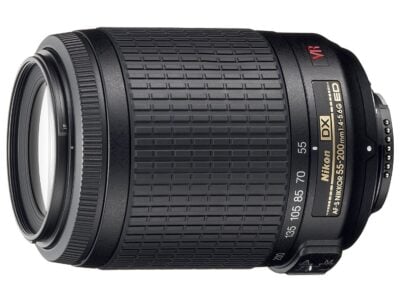
- Weight: 10.58 oz / 300 g
- Dimensions: 2.78 x 3.27″ / 70.5 x 83 mm
- Filter Size: 52mm
Though not the sharpest telephoto lens nor the fastest one, both in terms of autofocus and aperture, the Nikon 55-200mm f/4-5.6G ED IF AF-S DX VR still manages to impress, thanks to its small size and price point.
For DX users who need something longer, this is one of the best Nikon travel lenses available.
Sharpness is pretty good in the Nikon 55-200mm f/4-5.6G – centers are crisp throughout the focal range while the corners are acceptable.
You’ll have to stop down to about f/8.0 to achieve maximum sharpness. Luckily, the VR is effective and helps to counteract the slower shutter speeds that occur when stopping down.
In terms of optical blemishes, chromatic aberrations are well-controlled, distortion is average, and vignetting is pronounced. Any and all of these can be addressed in post-processing, of course.
Unfortunately, the autofocus of the Nikon 55-200mm f/4-5.6G is a bit slow. Taking the slower aperture into account, action photographers may become frustrated with this lens. Those who shoot fast moving targets (e.g. sports or wildlife) may want to look for a different lens.
Like many of the best Nikon travel lenses on this list, the biggest selling point of the Nikon 55-200mm f/4-5.6G is the fact that it’s so small and affordable.
Travel photographers who don’t want to fork out $1,000 for a giant telephoto lens and don’t mind the slower performance should take fancy to the Nikon 55-200mm f/4-5.6G.
- Good center sharpness.
- Effective vibration reduction.
- Small and affordable.
- Slow autofocus.
- Corners are just ok.
- Not so good for action photographers.

Now, you could spend a fat chunk of $$$ on the WRONG present for someone. Wrong size hiking boots, wrong fit backpack, wrong shape sleeping bag… As any adventurer will tell you, gear is a personal choice.
So give the adventurer in your life the gift of convenience: buy them an REI Co-op gift card! REI is The Broke Backpacker’s retailer of choice for ALL things outdoors, and an REI gift card is the perfect present you can buy from them. And then you won’t have to keep the receipt. 😉
Photographers should value lenses just as much as their travel camera ! Lenses are one of the most important aspects of photography because they are the ones that actually refract the light and create the image (which is then written by the camera sensor).
Sharpness, contrast, color, composition; all of these aspects are influenced greatly by the quality of your lens. As one photographer once aptly put it: “you don’t invest in cameras; you invest in good glass.”
There are several things to consider when you are looking for the best travel lenses for a Nikon camera. Aspects like size, weight, vibration reduction, and more are all vital components to the making of a great travel lens.
Below is a list of features to consider when searching for the best travel lens for your Nikon camera.
Note that I’m going to be giving a crash course on several photographic concepts here. I’ll try to explain them as best as possible; otherwise, feel free to post any question regarding photography in the comment section below.
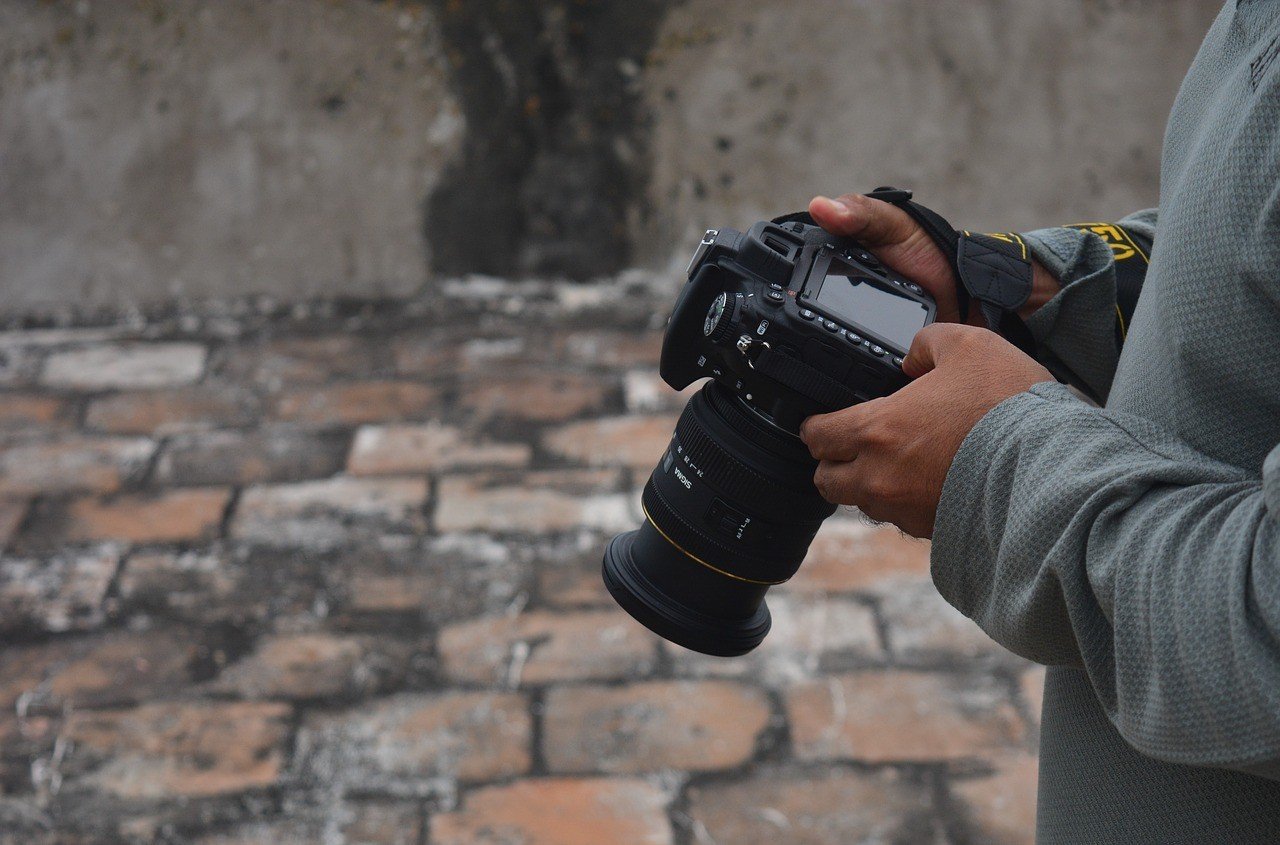
Size/Weight
Lenses vary greatly in size and shape; some are small enough to fit in your pocket, others are gargantuan pieces of equipment that require special storage. A lens’ mass and dimensions will play a large part in the size of a photographer’s bag and how they conduct themselves in the field.
Larger lenses obviously take up more space and add more weight to your pack. Sure, that lens appears small when it’s by itself but add 3 or 4 more to your pack and things quickly add up.
I have carried both ultralight and heavy camera packs and can attest that even a moderately heavy bag feels good for about a half-mile of walking.
If your camera bag has limited space and/or you like larger, higher-grade lenses, you’ll have to pick and choose your equipment wisely. Be very conscious of how much a lens weighs and how it measures. Be sure to think hard about how much you’re willing to carry.
If your camera bag is looking a bit shabby, maybe consider upgrading it as well. A good camera bag should fit your body like a glove and be able to hold all of the necessary equipment. Be sure to read our guide on the best travel camera bags for some ideas!
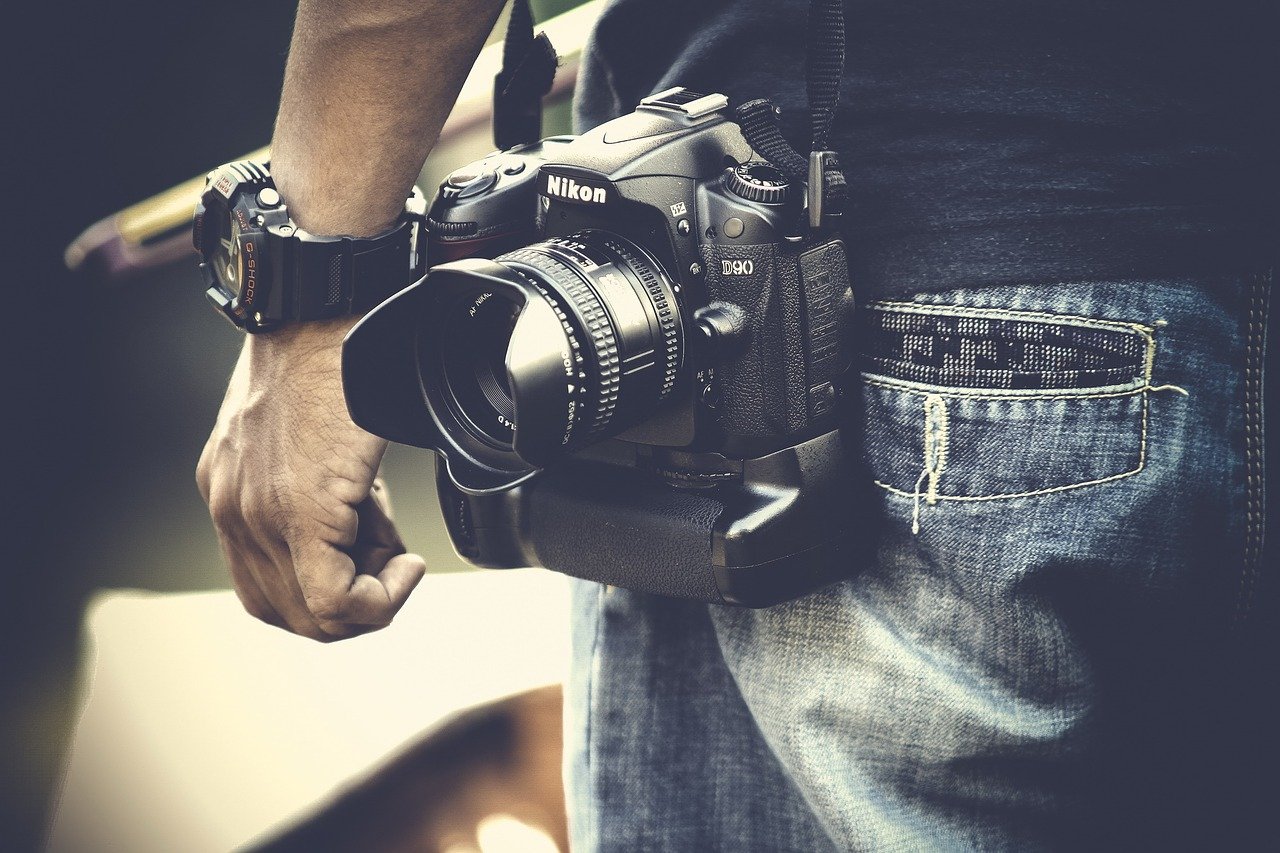
Along with shutter speed and ISO, the aperture is a vital part of the exposure triangle , which every photographer should be well-versed in.
Though shutter speed and ISO fall within the jurisdiction of the camera, the aperture is controlled via the lens. With the proper aperture and ability to use it, photographers will have much more power when it comes to creating the photos that they want.
Fast apertures – those that have a value of around f/2.8 or less – are usually the most desirable. Though not always the case, a faster aperture is usually indicative of optical quality. Regardless, fast apertures are usually most useful during situations that call for bokeh or those that are dimly lit .
In zoom lenses, constant aperture s are much more important as these definitely lead to higher quality images. The most common constant aperture ratings are f/2.8 and f/4.0. Both offer excellent quality of images.
A quick aperture is not always necessary as lots of lenses with slower apertures offer exceptional image quality.
Peak sharpness isn’t usually reached until around f/5.6 or f/8.0 anyway and shooting at extremely low apertures (e.g. f/1.4) can be more difficult than you think. Unless you really want a fast aperture, you may not need to spend the extra money.
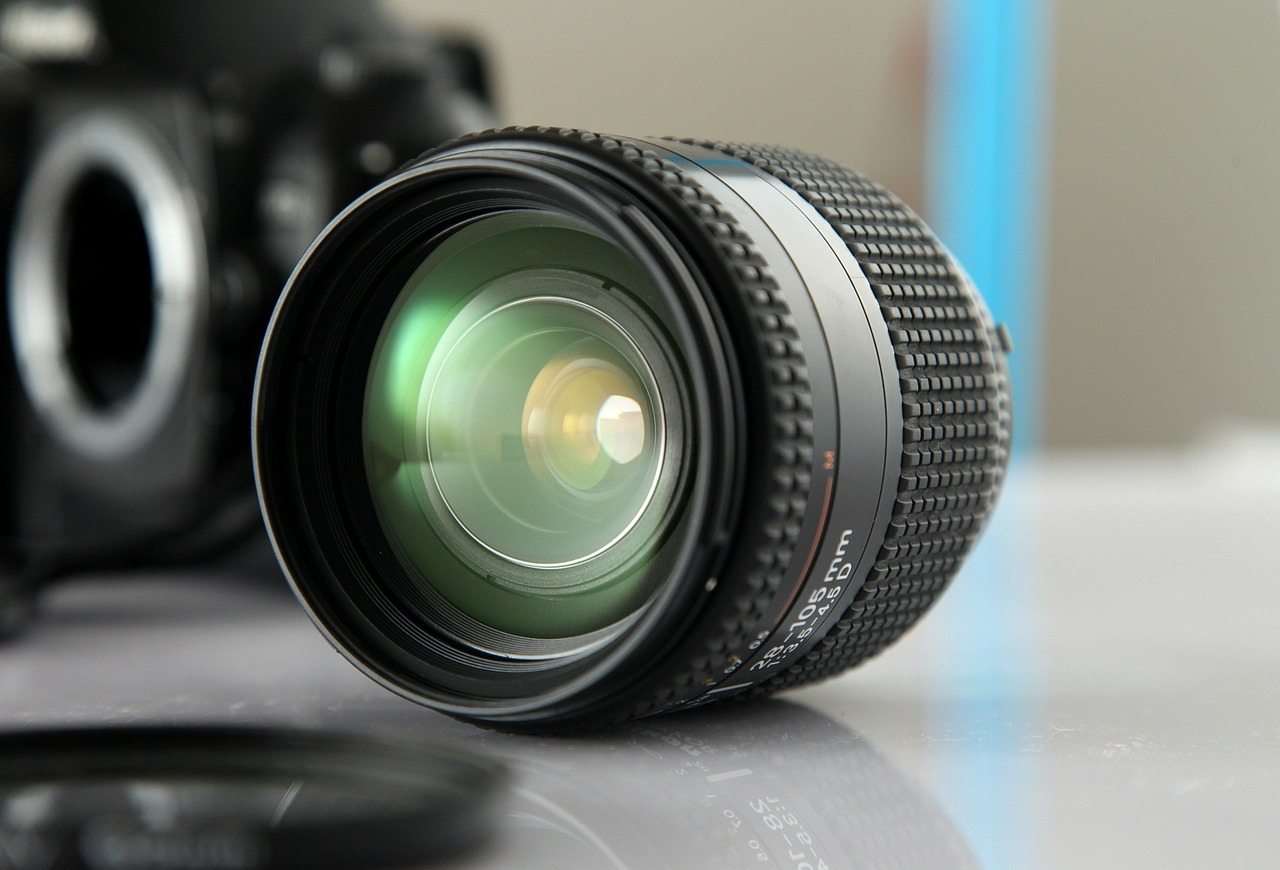
Focal Length/Type
Without getting into the physics of focal lengths , I will simply say that certain lenses with certain focal lengths are better for capturing certain scenes. Longer lenses, renowned for their shallow depth of field and isolating qualities, are great for portraits. Wider lenses, with their expansive fields of view, are great for interior shots when space is tight or for capturing big vistas.
It is very important to think about whether or not you want a lens that covers a single focal length or many.
If you’re like many photographers then you’ll probably value optical flexibility with a lens that covers more than one focal length. Lenses that can change their field of view are called zoom lenses , and these are among the most popular types of lenses.
Some zoom lenses o have trouble with certain optical imperfections (vignetting, chromatic aberrations, etc) and with maintaining sharpness. Generally speaking, the more expensive zooms do handle these issues better.
If you’re ok with shooting at only one focal length then consider a good prime lens . Prime lenses are usually sharper, cheaper, and more durable than zooms.
What type of photographer you are will determine what kind of focal length you find most useful. You’ll often find that certain lengths are more suitable to your style of shooting, or that you favor a particular lens over another.
Do not feel handicapped by what kind of lens you own though. With a bit of creativity and skill, you can make a lens do whatever you want. Remember: a lens is only as good as the photographer that uses it.
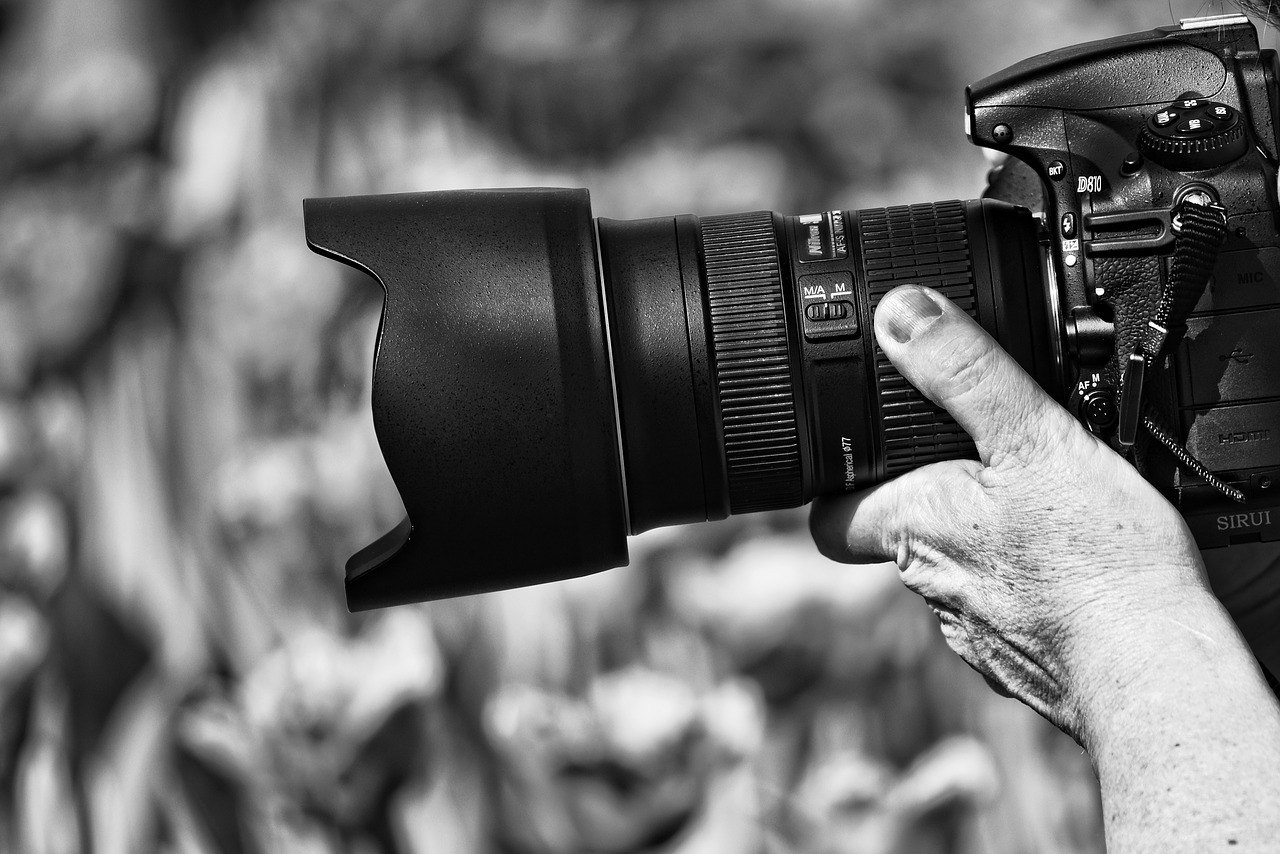
Not every autofocusing system is created equal – some are lightning-fast, utilizing state-of-the-art technology, while others are sluggish doofuses that can’t make heads or tails of a subject. How well an autofocus system behaves in a lens may or may not be a deal breaker for you.
Those who photograph fast-moving subjects – like in sports, concerts or wildlife photography – will need a lens that can keep up. In these cases, a quicker and more accurate autofocus system will be very beneficial.
These types of photographers also need to know that camera sensors play a role in autofocus as well – it’s not always just the lens doing the work.
Some photographers may not need fast autofocus or even autofocusing at all for that matter! Manual focusing lenses are still prevalent today and, aside from being markedly cheaper, can be very useful in certain situations.
Astrophotographers may actually prefer manual lenses because of their superb focus rings and because autofocus is usually useless in the pitch-black anyways.
Other photographers may even enjoy the vintage-like feel that comes with manual lenses, much like a musician might enjoy an old record.
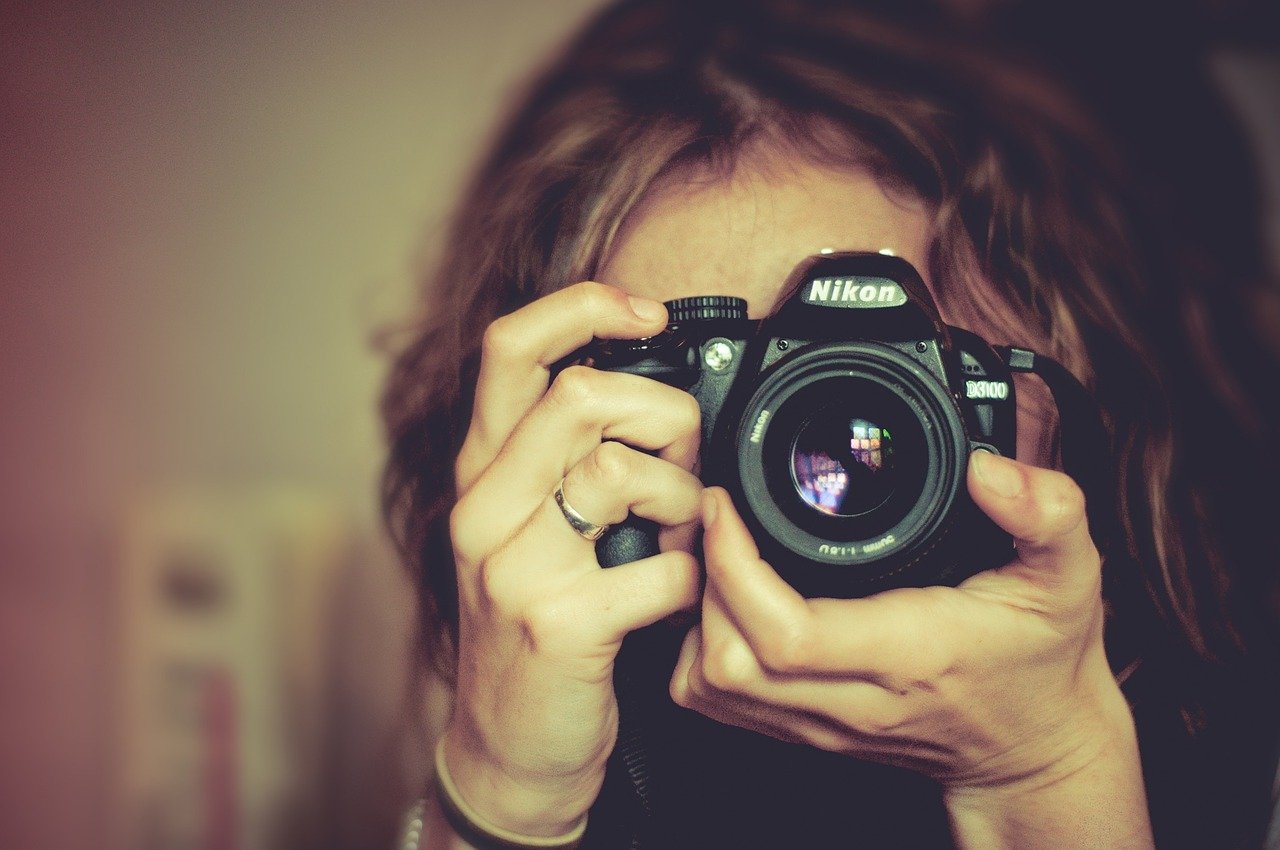
Filter Thread
Filters are used in photography to achieve creative effects as well as provide extra protection to a camera. These filters are attached to the front of a lens along a threading that has a unique rating (e.g. 58mm. 77mm, 82mm, etc).
There really isn’t such a thing as a proper filter threading. Most filter sizes have become standardized and there is almost always a full set of filters for each threading. No matter your lens, there’s a filter that will fit it.
One big reason to consider filter sizes has to deal with costs. As you buy more lenses you may end up with multiple filter threadings and, in turn, have to invest in filters for each one. This can be frustrating, especially when you know that filters behave in the same regardless of their size. Who wants to spend more money on the same?
A good way to avoid this annoyance is to invest in step-down rings, which then be used to adapt larger filters onto smaller threadings. Simply buy a set of filters that you know will be large enough for all of your lenses and then adapt to different threadings using the step-down rings.
Or think about investing in a slot-in filter system, which uses a screw-in adapter to hold a plate-like filter. Polarizer filters are not effective with slot-in filter systems.
For more information on filters, refer to the filter section of our Best Camera Accessories guide . You’ll also read about more general tools for your travel camera.
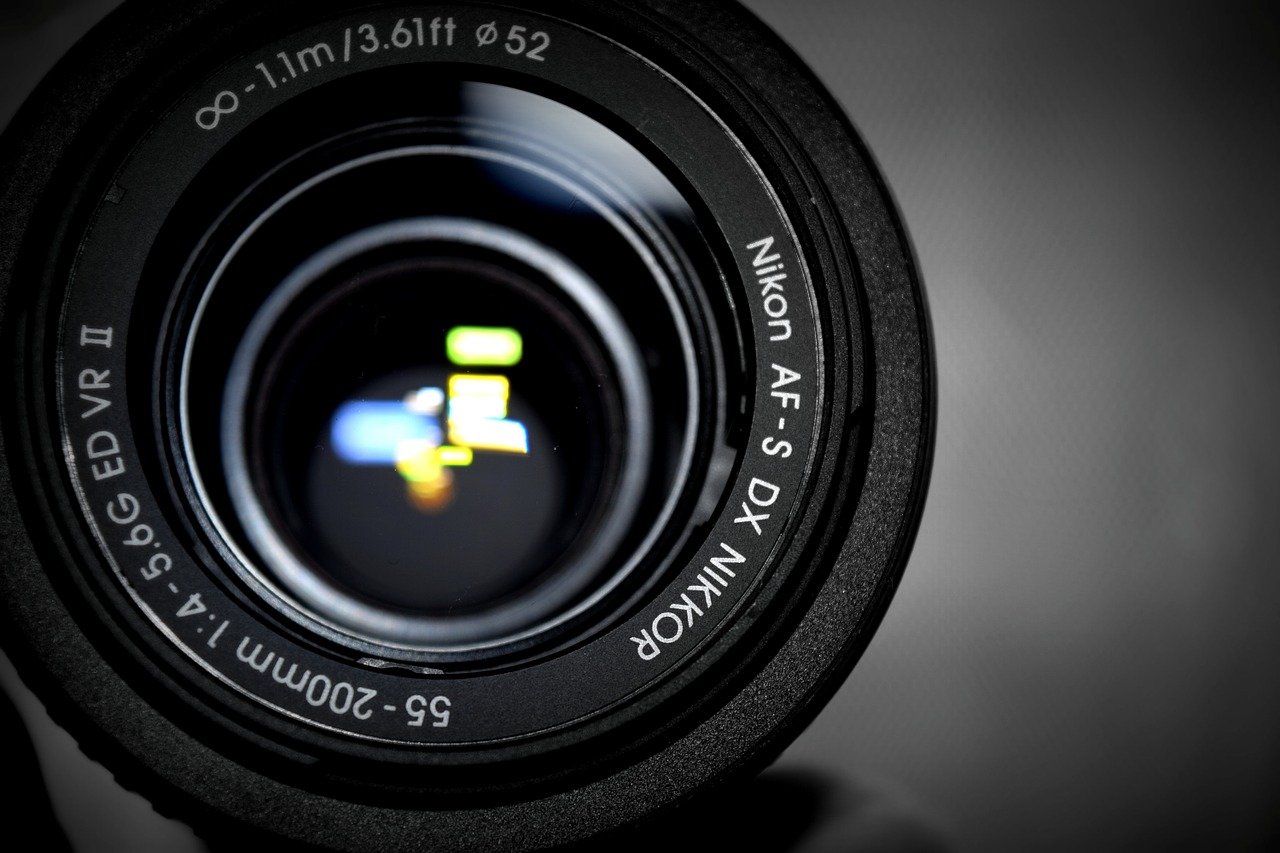
Vibration Reduction/Optical Stabilization
Optical stabilization technology has become extremely commonplace in modern-day lenses. This tech is found in all sorts of lenses, from cheap pieces of shit to luxurious, professional-grade glass. It is, at the end of the day, a very useful feature to have in your lenses as it can allow for some very crisp images.
Optical stabilization is referred to differently by different companies (e.g. image stabilization, IBIS, etc). Nikon refers to their optical stabilization tech as vibration reduction.
Vibration reduction (VR) works by compensating for shake caused by hand holding a camera. Handshake causes blurry images, which appears as a distinct softness, and most photographers tend to dislike this.
This shakiness is often unavoidable unless you’re using a tripod. With VR, blurriness caused by shaky hands is much less noticeable and sometimes eliminated altogether.
Whether or not you need optical stabilization is something to consider when you choose from the best Nikon travel lenses. If you’re a landscape photographer who constantly has their camera mounted on a tripod, optical stabilization is pretty redundant.
On the other hand, if you shoot subjects that require you to move often or you just like to have your camera ready in your hands, then VR would be useful.
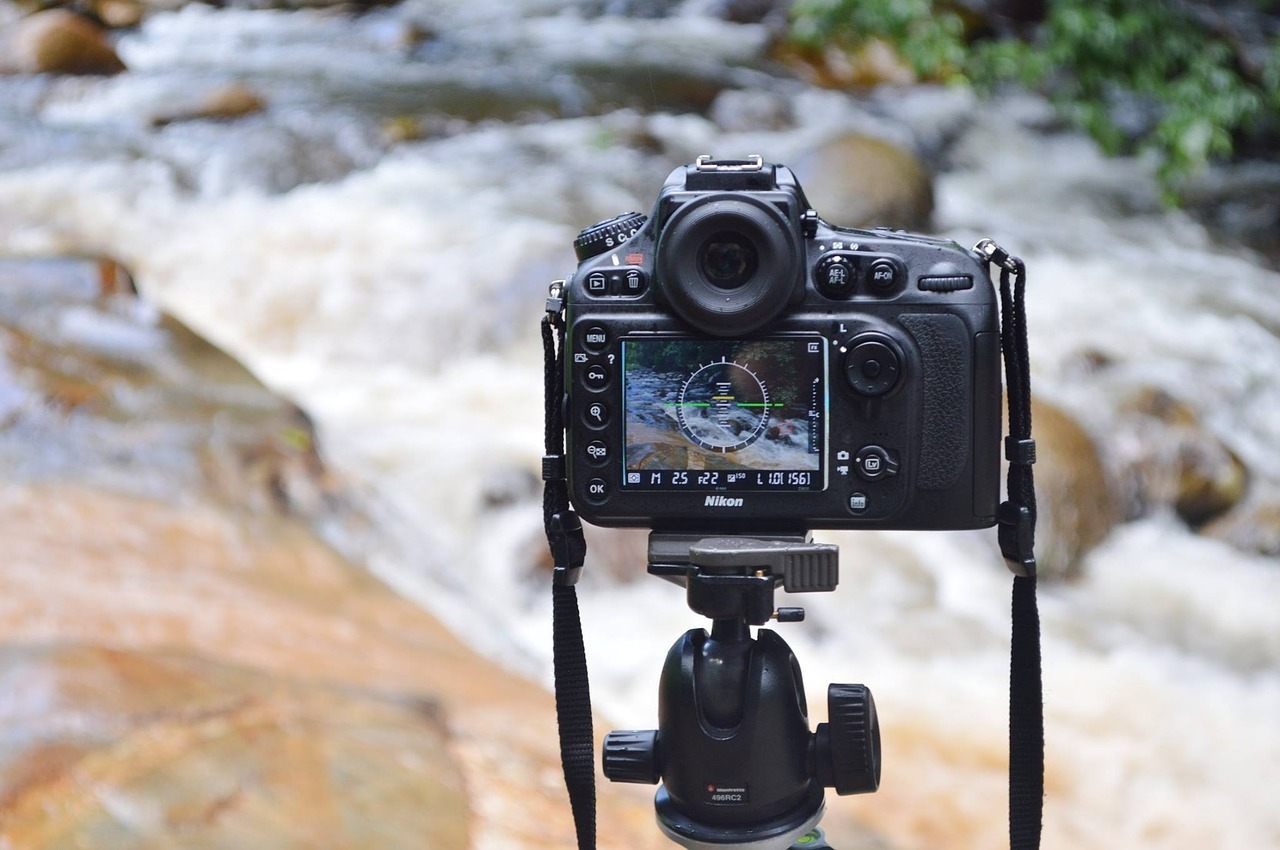
Sensor Size
Nikon makes a full frame DSLR and an APS-C DSLR. Each type of camera has its own lens library as well – Nikon’s full-frame system is referred to as FX while the APS-C one is referred to as DX .
DX lenses can only be mounted on an APS-C mount while FX lenses, though functional on an APS-C camera, work best on a full frame body.
If you mount an FX lens onto an APS-C body, then there are a few things to consider. 1) vignetting is possible; 2) certain lenses will behave differently on certain bodies; and, most importantly 3) the lens’ focal range will be lengthened i.e. a 24mm EF lens mounted onto EF-S camera will behave more like a 35mm lens.
For more on what happens when you mount a full frame lens onto an APS-C body, you can read this informative article here .
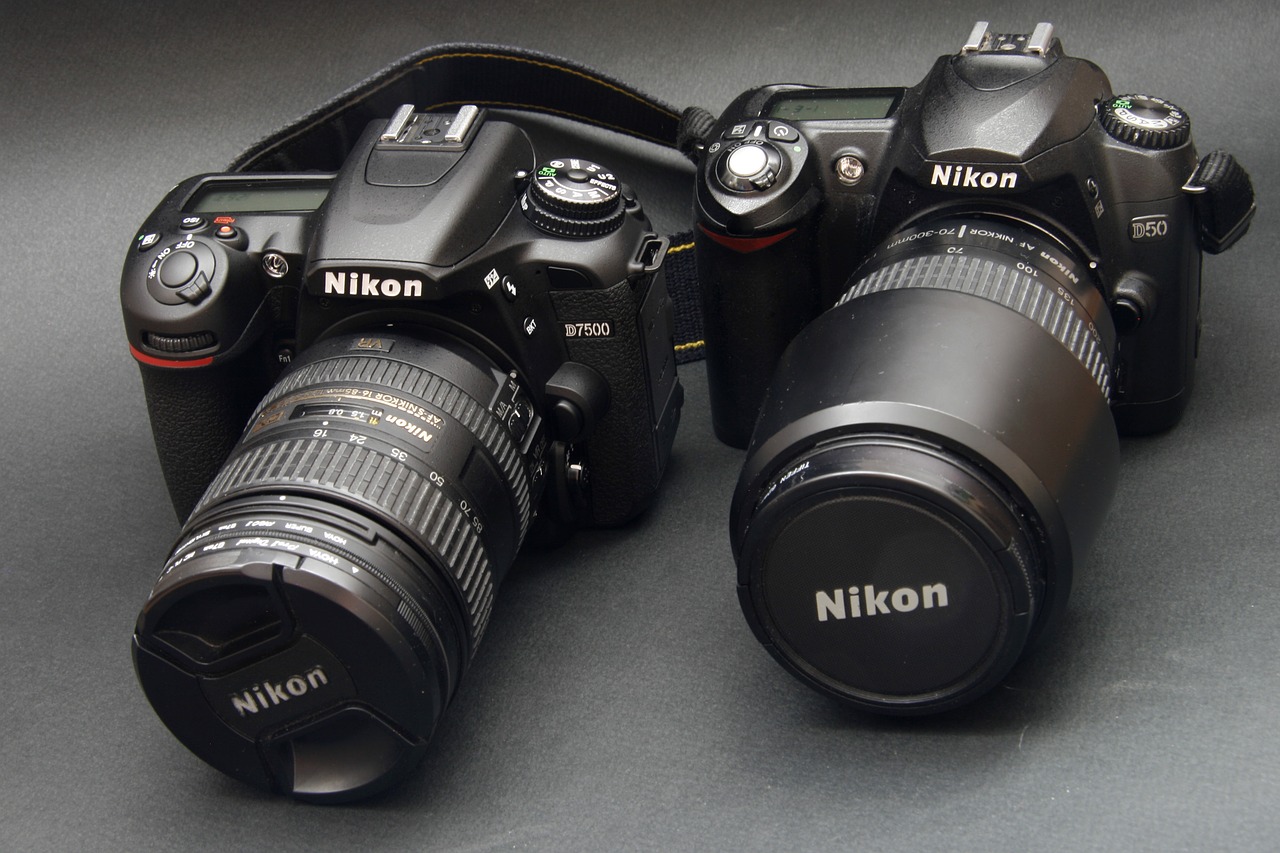
Still have some questions? No problem! We’ve listed and answered the most commonly asked questions below. Here’s what people usually want to know:
What is the best Nikon FX lens for travel photography?
The Nikon Nikkor 24-120mm f/4.0 is the best lense for travel photography and our favorite. For a Nikon DX camera, check out the Sigma 18-300mm f/3.5-6.3 .
What is most affordable Nikon lense?
Check out these budget lenses: – For Nikon FX – Nikon Nikkor 24-85mm f/3.5-4.5 – For Nikon DX – Sigma 17-50mm f/2.8
What do you need to consider when buying a Nixon lense?
Aspects like size, weight, vibration reduction, and more are all vital components that need to be considered when purchasing a lense.
What are the best Nikon lenses for professional travel photographers?
If you’re shooting with a Nikon FX consider getting the Nikon Nikkor 24-70mm f/2.8 . For the Nikon DX, check out the Sigma Art 18-35mm f/1.8 .

Our GREATEST Travel Secrets…
Pop your email here & get the original Broke Backpacker Bible for FREE.
Final Thoughts
There you have it folks – the 16 best travel lenses for Nikon users! Over the course of explaining these 16 lenses, we have given photographers all sorts of shooting options.
Each lens will be catered to a different type of photographer and each will have its own strengths and weaknesses. Figure out what kind of photographer you are and then choose from the best Nikon travel lens for yourself.
Know that each one will be different and dramatically affect the quality of your pictures.
Are you a traveling portrait photographer who wants some creamy bokeh? Then get the Nikon 85mm f/1.8 ! Do you want a DX lens that is optically flexible but affordable at the same time? Perhaps the Sigma 17-50mm f/2.8 will be right up your alley.
Think carefully about these 16 best Nikon travel lenses. The fact that you’re here reading this article means that you’re ready to take the next step into travel photography; perhaps you’re even ready to become a freelancer ?!
Look sharp out there my fellow backpacking photographers and make sure your lens is just as sharp too.
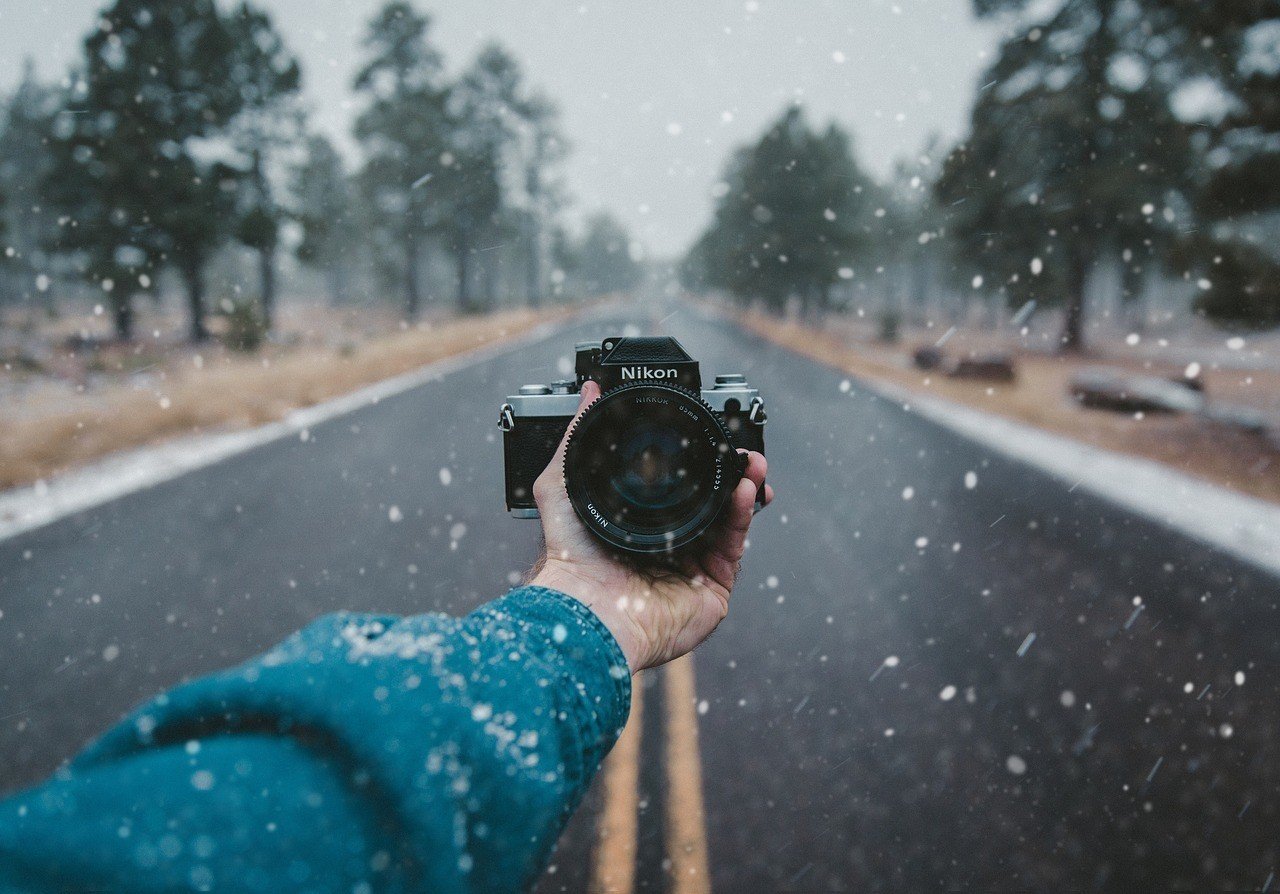
And for transparency’s sake, please know that some of the links in our content are affiliate links . That means that if you book your accommodation, buy your gear, or sort your insurance through our link, we earn a small commission (at no extra cost to you). That said, we only link to the gear we trust and never recommend services we don’t believe are up to scratch. Again, thank you!

Share or save this post
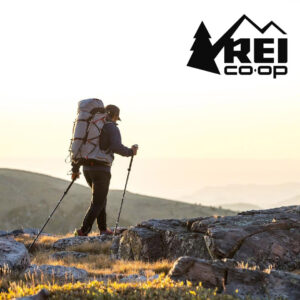
I’ve had both Nikon 24-70s and would always choose the newer one with VR, especially for travel since, even if you bring a tripod, you won’t want to use it any more than necessary. Also, for travel, the better edge to edge sharpness is welcome. Having said that, it IS more expensive and heavier.
Good information. Note, the latest version of the Nikon 24-70mm F2.8 ED VR has VR, but really expensive. The newer Tamron G2 maybe an option at much lower cost but has external zoom. I have no experience with Tamron so comments are my opinion only.
Leave a Reply Cancel reply
Your email address will not be published. Required fields are marked *
Save my name, email, and website in this browser for the next time I comment.
Notify me of followup comments via e-mail.
Ukraine Drones Target Two Refineries, Airfield in Russia's Krasnodar Region, Kyiv Source Says
Ukraine Drones Target Two Refineries, Airfield in Russia's Krasnodar Region, Kyiv Source Says
KYIV (Reuters) - Ukraine attacked the Ilsky and Slavyansk oil refineries in Russia's Krasnodar region with drones early on Saturday, causing fires at the facilities, a Ukrainian intelligence source told Reuters.
The attack was conducted by the SBU security service, the source said. Ukrainian drones also targeted the Kushchevsk military airfield in the same region overnight, the source added.
Several social media videos showed the damage, the source said.
Reuters could not verify the videos, which showed massive flames rising into dark skies.
"The SBU continues to target military and infrastructure facilities behind enemy lines effectively," the source said.
With Russia's invasion now in its third year, Ukraine has stepped up its attacks on Russian oil and energy facilities using long-range drones.
Photos You Should See - April 2024

The Latest Photos From Ukraine

Kyiv officials have said they consider oil refineries legitimate targets, despite calls from foreign allies to halt strikes in order to avoid Russian retaliation and hikes in global oil prices.
Local authorities in Russia said the oil refinery in Krasnodar region suspended its operations after the drone attack.
Roman Siniagovskyi, head of the Russian Slavyansk administrative district, said on the Telegram messaging app that there were nine attacks on the storage tank farm and the distillation column, a key piece of equipment in the refining process.
(Reporting by Tom Balmforth; writing by Olena Harmashg, Editing by Hugh Lawson)
Copyright 2024 Thomson Reuters .
Join the Conversation
Tags: Ukraine , Russia , drones , Europe
America 2024

Health News Bulletin
Stay informed on the latest news on health and COVID-19 from the editors at U.S. News & World Report.
Sign in to manage your newsletters »
Sign up to receive the latest updates from U.S News & World Report and our trusted partners and sponsors. By clicking submit, you are agreeing to our Terms and Conditions & Privacy Policy .
You May Also Like
The 10 worst presidents.
U.S. News Staff Feb. 23, 2024

Cartoons on President Donald Trump
Feb. 1, 2017, at 1:24 p.m.

Photos: Obama Behind the Scenes
April 8, 2022

Photos: Who Supports Joe Biden?
March 11, 2020

RFK Jr.: By the Numbers
Laura Mannweiler April 26, 2024

Biden’s Student Loan Chief to Step Down
Lauren Camera April 26, 2024

What to Know: Bird Flu Virus in Milk
Cecelia Smith-Schoenwalder April 26, 2024

Inflation a Stubborn Foe for the Fed
Tim Smart April 26, 2024

The Curse of the Modern Vice President

‘A Rule for the Ages’
Lauren Camera April 25, 2024

- Russia Tourism
- Russia Hotels
- Russia Bed and Breakfast
- Russia Vacation Rentals
- Flights to Russia
- Russia Restaurants
- Things to Do in Russia
- Russia Travel Forum
- Russia Photos
- All Russia Hotels
- Russia Hotel Deals
- Things to Do
- Restaurants
- Vacation Rentals
- Travel Stories
- Rental Cars
- Add a Place
- Travel Forum
- Travelers' Choice
- Help Center
Is it safe for a U.S. citizen to go to Krasnodar? - Russia Forum
- Europe
- Russia
Is it safe for a U.S. citizen to go to Krasnodar?
- United States Forums
- Europe Forums
- Canada Forums
- Asia Forums
- Central America Forums
- Africa Forums
- Caribbean Forums
- Mexico Forums
- South Pacific Forums
- South America Forums
- Middle East Forums
- Honeymoons and Romance
- Business Travel
- Train Travel
- Traveling With Disabilities
- Tripadvisor Support
- Solo Travel
- Bargain Travel
- Timeshares / Vacation Rentals
- Europe forums
- Russia forum

I've heard U.S. citizens are considered the enemy, as the U.S. is the major backer of Ukraine. As such, I could be arrested, detained and imprisoned simply for holding a US passport. Is this true?
24 replies to this topic

I haven't been to Krasnodar, so I can't speak to that city But I have been traveling to and from Russia through Istanbul since last year, and never had any problems being from the US. On the contrary, people here have been very nice. I never had a bad experience in Russia on account being from the US. I haven't been even asked any question or had anything searched when I crossed the border.
Thank you Matt P, I appreciate you taking the time to answer this. This is good to know, as literally every Western website I've looked at (official State webpages,) has recommended not to travel and that it's highly dangerous. Thank you for giving me an alternative opinion based on experiential facts.
My pleasure.
Unfortunately I learned a long time ago the travel advisory page of the state department can't be trusted. I think they started with good intentions, but now the pages are heavily intermixed with political propanganda. Makes it hard to know what is which.
As for news, I used to be a huge fan of them when I was a kid. I believed that their role was to hold powerful people accountable. Today they all mostly repeat the politically favored message of the day. I ready someowhere that 90% of the media is owned by 6 companies. That explains a lot. Thus, travel news, for politically disfavored countries (like Russia) is useless.
I had a connecting flight to Russia, so no Istanbul customs. But I have been to Istanbul before (seperately), and as an American you spend just minutes at customs. Just make sure to get your Turkish evisa ahead of time. Can all be done online.
I exchanged some USD into the rubles at the Istanbul airport, to be able to pay for the taxi in Moscow and the hotel when I check in. The best exchange rates though, I got at the various currency exchange places in major malls and near major subway stations in Moscow. You can recognize them through red dollar and euro signs.
You might also want to consider getting a Russian debit card (Tinkof). That way you don't need to carry cash with you all the time. They come to your hotel and give you one. Very easy.

>>> I ready someowhere that 90% of the media is owned by 6 companies. That explains a lot. Thus, travel news, for politically disfavored countries (like Russia) is useless.
Matt, did you know the country you are staying is 100% controlled by ONE man?
You do know this poster is asking about buying separate ticket from IST-SOCHI ?
>>>>The best exchange rates though, I got at the various currency exchange places in major malls and near major subway stations in Moscow.
Again, you do know this poster is going to Sochi and then to Krasnodar, no where near Moscow? I don't remember any other Russian cities that have convenient exchange places in malls and booths!!
>>> You might also want to consider getting a Russian debit card (Tinkof).
I don't understand why someone would get a Russian card unless they are a frequent visitor or live in Russia for an extended time.
Matt, have you been OUT of Moscow yet? There is much of Russia to see and experience. I hope so!!!
>>> This is good to know, as literally every Western website I've looked at (official State webpages,) has recommended not to travel and that it's highly dangerous.
It is the same message for over ten years!! People will do what they will do.
Are you likely to see hostility I'd say not but in my personal experience I've never heard a Russian say something positive about Americans quiet the opposite in fact, that said they've ironically embraced a lot of of US culture.
Bare in mind that Russian state media is constantly attacking the US accusing it of being engaged in a proxy war with Russia so I seriously doubt you won't find a considerable amount of people in Russia with very anti-American attitudes so I find it very odd that people would believe otherwise.
Why do you wait to book your flight from IST to AER?
Direct flights with Azimut, IrAero and Aeroflot. There may be an issue trying to have proper connecting flight times.
Your biggest problem will be booking a train ticket in Adler because of possible sell out ( summer travel) and language issues. Vasily would know better if train would sell out
I had forgotten one thing. If you bring cash, please double-check the import and export declaration threshold requirements for each country that you enter and leave, including your home country.
Wow! Thank you so much for so much feedback! I don't plan on waiting until I get to Istanbul before I get my ticket to Sochi. Currently I'm having issues with my bank cards keep being denied, even though money is in my account! I had a friend get me my train ticket from Sochi to Krasnodar, so I don't need to worry about that.
My bank says there's no hold on my card. Any suggestions on sites to go through?
Thank you again for all your comments.
- Travel to Russia 6:20 pm
- Planning trip to Russia 3:22 pm
- Flights to Russia 2024 yesterday
- Looking for travel partner(s) to Yakutsk/Oymyakon in Feb'24 Apr 25, 2024
- Men's barber cheap haircut under €5 Apr 25, 2024
- Train Booking Moscow to St. Peter Apr 24, 2024
- Are there direct flights from Moscow to central/southamerica Apr 23, 2024
- Sber bank and electrical scooter Apr 23, 2024
- Hop on hop off Trans Siberian train Apr 22, 2024
- Russia - Belarus - Russia Apr 22, 2024
- Sergiev Posad to Pereslavl Zalessky Apr 20, 2024
- Crossing the border from Narva to Ovanograd by bus Apr 14, 2024
- Current best way to send dollars to Russia? Apr 14, 2024
- Flights into Russia Apr 12, 2024
- Transaero Airlines 5 replies
- American Movies set in Russia 5 replies
- Moscow Airport transfer (SVO to DME) 4 replies
- Travel All Russia travel compnay 48 replies
- Russian River Cruise 10 replies
- Suggested Russia Tour - East West Tours 6 replies
- Do I need a visa if my flight has a connection in Russia? 4 replies
- Insight Vacations 24 replies
- Asian Grocery Store in Moscow 4 replies
- "Tourist Confirmation Letter and Travel Voucher" for a visa. 5 replies
- Where can I get initial answers to ANY question?
Try changing your search query or try one of the suggestions below!
War in ukraine, free and up-to-date :), krasnodar airport, general information.
Krasnodar Airport is one of the 10 busiest airports in Russia. The city of Krasnodar is located in southwestern Russia between Rostov, Sochi and Sevastopol (Crimea). Kraj Krasnodar is one of the most densely populated areas in Russia, in the middle of this region is the Republic of Adygea. The airport has two terminals, in the future Krasnodar Airport will have a new larger terminal (capacity: 80,000 m2, capacity: 6.5 million passengers) for international and domestic flights. Krasnodar Airport is like Sochi Airport and Anapa Airport owned by the Aerodynamics company.
Where is Krasnodar Airport situated?
The airport is located to the east of the city, close to the M-4 motorway.
How many terminals does Krasnodar Airport have?
The airport consists of two terminals, known as Domestic Terminal and International Terminal. The terminals of Krasnodar Airport are next to each other, walking between the terminals takes no longer than a few minutes.
Airport Map
Nearby airports.
A good alternative for flying to or from Krasnodar Airport are the following airports, sorted by distance from the airport. You can also take a look at the complete list of airports in Russia .
Transportation
What is the distance from krasnodar airport to the centre of krasnodar.
The distance from Krasnodar Airport to the centre of Krasnodar is 15 kilometres. By car, it takes 30 minutes to get to the centre of Krasnodar.
From KRR Airport to Krasnodar City centre by Car
City centre
Travel by car
Public transport
It is possible to travel to and from Krasnodar Airport by public transport. Visit the Krasnodar Airport transportation page for the possibilities.
Taxi transfer
A taxi is the quickest and most comfortable way to get to and from Krasnodar Airport. The price for a taxi ride from the airport to the centre of Krasnodar is about RUB 600.-. Book your taxi at Krasnodar Airport and discover the comfort of pre-booked taxis.
From KRR Airport to Krasnodar City centre by Taxi
Book a taxi
At Krasnodar Airport you can rent a car from car rental companies Europcar, Avis and local providers. It is most convenient to find and book a car well in advance. By doing so, you can save money and time at the airport.
Airport parking
Krasnodar Airport offers various official parking options, from premium to low cost. In addition, alternative parking options are available near the airport. If you want to park as cheaply as possible, it's wise to book online!
Book your parking space
At the airport
Do you want more information about facilities, currency exchange, services, free Wi-Fi, lounges, etc. at Krasnodar Airport? Check our at the airport page for a complete overview of all facilities and services at Krasnodar Airport.
Departures and arrivals
Looking for departure times and/or arrival times ? Find the latest flight status information for flights departing from and arriving at Krasnodar Airport.
Flight tickets
Looking for a cheap flight? Use our flight search engine to find and book cheap flights from and to the airport.
Which airlines fly from and to Krasnodar Airport?
We offer you a list of airlines at Krasnodar Airport . The main airlines at the airport are:
- Ural Airlines
- Turkish Airlines
Book your flight
Accommodations
Hotels near the airport.
Looking for the best hotels near Krasnodar Airport? We have selected the best hotels near the airport in different price ranges. Take a look at our accommodations page for more information.
Hotels in Krasnodar
Looking for the best hotels in Krasnodar? We have selected the best hotels in the city in different price ranges. Take a look at our accommodations page for more information.
Find more accommodations
Things to do
It is possible to book activities in the city and near Krasnodar Airport. You can avoid queues and save money by buying your tickets online. Planning a trip and wondering what to do, we give you some inspiration!
Kars: Church Calls With GeziBilen Digital Guide
Shall we trace back the bells in Kars, which hosted countless cultures and civilizations during its history in thousands of years?
Find more things to do
★☆☆☆☆ 1 review
Have you visited Krasnodar Airport lately? So far, 1 airport passenger has written an airport review about Krasnodar Airport and gave a score of 1 out of 5. Provide other airport travellers with essential airport information and tell us about your airport experience.
Latest airport review
Terrible service! Flight was @ 13:20, We were told check- in starts @ 11:30. The flight was delayed ‘till 17:00. It was very hot, 50C degrees In the waiting room. There was no conditioner, no help was offered. There were a lot of kids thirsty, hungry and tired. Flight U6-8639 to Yerevan, Armenia. In democratic countries leadership would have apologized 100 times and would have offered big compensation!!! Very sad….
Write a review

COMMENTS
Best Nikon Cameras. If you're looking for an excellent enthusiast-level camera, the Nikon Z 6II is one of the best Nikon cameras for photography that we've tested. Sitting below more expensive, pro-grade models like the Nikon Z 8 and the Nikon Z 9, this is a fantastic and versatile camera body for both hobbyists and enthusiasts.
We're here to help you buy the best camera for your travel journey no matter the destination. ... Nikon Z f; All Cameras; Lenses. Sony FE 16-25mm F2.8 G; Canon RF-S 10-18mm F4.5-6.3 IS STM;
The OM SYSTEM OM-5 is one of the best travel cameras you can get. As part of the Micro Four Thirds (MFT) system, it offers a good combination of portability, ruggedness, and image quality. ... Nikon Z f: The Nikon Z f is an excellent full-frame option for travel, particularly if you like vintage-style cameras. It has a retro-inspired and ...
The Quick List. Best compact. 1. Fujifilm X100VI. Preorder at BHPhoto. View at Adorama. Check Amazon. Travel cameras should be small and light, but not lacking in features for amazing photos and video. The Fujifilm X100VI ticks all of those boxes, with a diminutive size, but 40MP images and 6.2K video.
Jan 26, 2024: Replaced the Olympus OM-D E-M5 Mark III with the OM SYSTEM OM-5, as it's more widely available. Oct 27, 2023: Added mention of the Sony α7C II to flesh out the market context for the Sony a7C. Aug 31, 2023: Added the Fujifilm X-T5 as the 'Best Mirrorless Camera For Travel' and shifted the Olympus OM-D E-M5 Mark III down to the ...
The Z50 is a mirrorless camera, meaning it's compact in size and more lightweight than most DSLR brothers. For a travel camera particularly, the small size and weight is definitely something you will appreciate, having to carry it with you on tours and hikes. However much I love my Nikon D3 DSLR, after a while, it feels like I'm carrying a ...
Best pocketable travel camera: Ricoh GR III. 24MP APS-C sensor | 28mm equiv. F2.8 lens | Wi-Fi + Bluetooth. The Ricoh is a pocketable compact with a large APS-C sensor. Photo: Barney Britton. Buy now: $997 at B&H Photo $997 at Adorama $1016 at Amazon.
View at Best Buy. View at Amazon. The Nikon Z7 II is the best all-round Nikon camera, it doesn't have the very latest cutting-edge abilities of the Z8 or Z9, but it still has everything that most professionals and enthusiasts are ever going to actually use. Read more below ↓. Best for enthusiasts. 4.
The best Nikon mirrorless cameras - here is our quick list: Best high-speed Nikon mirrorless: Nikon Z9 - Buy now; ... which sort of negates the point of buying a cheaper APS-C camera. Best for: travel, entry-level photographers. Read our Nikon Z50 review. Best Nikon mirrorless for low light: Nikon Zf. The retro-style Nikon Zf with 40mm f/2 ...
The system is very beginner friendly but still offers enough "professional" options that it can, and likely will, remain in a content-creators arsenal even after they upgrade to one of Nikon ...
Combining a small form factor with a high-res 61MP sensor and fantastic autofocus, the Sony A7C R is the best full-frame camera for travel photography. 8. Fujifilm X-S20. A capable sensor and ...
Best Budget Mirrorless: Canon EOS R50 at B&H Photo Video ($629) Jump to Review. Best Retro Look: Fujifilm X100VI Camera at B&H Photo Video (See Price) Jump to Review. Best Mirrorless for Beginners ...
7. Nikon D5600. This next model needs no introduction; Nikon SLRs were favored by many famous travel photographers in the 1980s and beyond. The D5600 is the latest camera in Nikon's midrange APS-C series, and it's a perfect choice for beginners and enthusiast photographers alike.
The best mirrorless camera for travel should be portable but still produce eye-catching media. This is why the Nikon Z50, Canon EOS R8, and Fujifilm X100V are our top three recommendations. Traveling is always a huge source of inspiration. And to capture the wondrous sights in all their glory, you need a reliable camera.
Bridge cameras like the Nikon Coolpix P950 pair smartphone-sized image sensors with fixed SLR-sized lenses. Nikon currently sells two models: the P950 and P1000. We recommend the P950 more highly ...
Best Image Quality: RICOH GR IIIx Digital Camera at Amazon ($1,100) Jump to Review. Best Full-frame Compact: Sony Cyber-shot RX1R II Digital Camera at Amazon ($3,298) Jump to Review. Best Zoom ...
Best Beginner Mirrorless Camera for Travel Photography: Nikon Z50. The Nikon Z50 is an impressive mid-range mirrorless camera for travel photography. Today, it's a fantastic entry-level camera for travel photography beginners. Specs. 20.9-megapixel APS-C sensor. 11 fps continuous shooting with automatic exposure and autofocus. 4K up to 30fps
When searching for the best travel cameras of 2023, we wanted to include the most common types of travel cameras: mirrorless cameras, DSLR cameras, action cameras, and drones. (We also decided to ...
Canon PowerShot G7 X Mark III: The Canon PowerShot G7 X Mark III is a good compact vlogging camera. Unlike the Sony ZV-1, it has a built-in livestreaming feature that some travel vloggers may find appealing. However, its autofocus isn't as effective, and the camera doesn't have a fully articulated screen.
Overall Best Travel Lens for Nikon DX - Sigma 18-300mm F3.5-6.3 DC Macro OS HSM. Best DX Budget Travel Lens for Nikon DX - Sigma 17-50mm f/2.8 EX DC OS HSM FLD. Best DX Professional Travel Lens for Nikon DX - Sigma Art 18-35mm f/1.8. Best EF-S Prime Travel Lens for Nikon DX - Nikon AF-S DX NIKKOR 35mm f/1.8G.
Best States. Home; Overall Rankings 2023; ... Places the U.S. Government Warns Not to Travel Right Now. ... Lauren Camera April 25, 2024. Load More. Best Countries.
Jul 17, 2023, 1:21 AM. I'm a U.S. citizen planning on going to Russia in August. I already have flights to Istanbul and hotel reservations in Krasnodar. I've read that I'll need to book my flight from Istanbul to Sochi at the Istanbul airport. Once in Sochi, purchase a train ticket to Krasnodar.
Krasnodar Airport is one of the 10 busiest airports in Russia. The city of Krasnodar is located in southwestern Russia between Rostov, Sochi and Sevastopol (Crimea). Kraj Krasnodar is one of the most densely populated areas in Russia, in the middle of this region is the Republic of Adygea. The airport has two terminals, in the future Krasnodar ...
Founded in 1794 at the behest of Empress Catherine II, Krasnodar was established by Kazakhs to safeguard Russia's southern frontiers against the Ottoman Empire. In honor of this benevolence ...